

MARKET PRIVATE INVESTMENTS
Promises and Potential Pitfalls
Rumored regulatory and political support to allow greater private market investment access thrust the issue back into the spotlight. What does it mean for retirement savers?

Top Defined Contribution Wholesalers
Five Health Plan
Lawsuit-Mitigation Steps
Top DC Advisor Teams plus

Unlocking plan participant views on guaranteed lifetime income
New study from Allianz Center for the Future of Retirement tm uncovers attitudes, preferences, and growing demand for annuities in employer-sponsored plans
ARTICLE BY: Meghan Farrell Senior Manager, Defined Contribution Insights
Allianz Center for the Future of Retirement™
When it comes to bolstering wider acceptance of annuities as part of employer-sponsored plans, a key area to address is the nuanced needs of plan participants.
Our latest State of Lifetime Income Report delves into what plan participants desire and what motivates them regarding guaranteed lifetime income.
Retirement risk perceptions
In retirement planning, the perception of risks plays an important emotional role. Although annuity discussions often focus on longevity risk, our survey indicates that concerns such as inflation, market downturns, unexpected expenses (health-related and non-health-related), and changes to Social Security/Medicare ranked higher as threats to future retirement income.1
Annuities that address these key anxieties through a holistic risk management lens may be wellpositioned to support participants’ needs.
Product/feature preferences
Participants who would consider adding an annuity to their employer-sponsored plan valued full protection from market downturns and growth potential to help address inflation, with 50% and 47% respectively ranking it in their top two features.1 At the same time, at least 9 out of 10 respondents desired features such as flexibility in income payments, the ability to make full or partial withdrawals after income starts, and IRA portability.1 In short, plan participants are interested in products that offer a balance of protection and adaptability to evolving life circumstances.
Advice and support models
73% of participants surveyed expressed interest in annuities as part of their employer-sponsored plan, but said they would need help deciding how much to contribute.1 54% said they would pay a fee for an advice service to manage annuity contributions based on their personal financial situation and goals.1
→ Scan the QR code or visit us at www.allianzlife.com/dcplanresearch
1 The State of Lifetime Income Participant Survey, conducted by the Allianz Center for the Future of Retirement in November 2024 with a nationally representative sample of 2,488 respondents aged 18+ who are currently contributing to an employer-sponsored retirement plan. The Allianz Center for the Future of Retirement produces insights and research as part of Allianz Life Insurance Company of North America (Allianz).
This content is for general informational purposes only. It is not intended to provide fiduciary, tax, or legal advice. Allianz, its affiliates, and their employees and representatives do not give legal or tax advice, or advice related to Social Security or Medicare. Allianz does not provide financial planning services. Guarantees are backed solely by the financial strength and claims paying ability of the issuing company. LIA-364 (5/2025) For institutional use only – not for use with the public.


Awesome Allies! 2025 NAPA Top Defined Contribution Wholesalers
With great pleasure (and industry pride), we announce the 2025 Advisor Allies— the defined contribution wholesalers recognized by their advisor partners for the help and resources they provide!
By NAPA Net Staff
Preventive Medicine: Five Health Plan Lawsuit RiskMitigation Steps
As the fiduciary breach lawsuit threat grows, it’s time for health plan fiduciaries to step up their oversight.
By Judy Ward
The ‘A’ Teams: Top DC Advisor Teams
Once again, we are proud to announce our list of 2025 NAPA Top DC Advisor Teams with assets under advisement over $100 million!
By NAPA Net Staff
Private Market Investments: Promises and Potential Pitfalls
Rumored regulatory and political support to allow greater private market investment access—including retirement plans—thrust the issue back into the spotlight. What’s new, positive, and/or problematic? Importantly, what do advisors think? We take a look.
By John Sullivan

Treichel:
2025 Top 100 DC Wholesaler Winners









Visit troweprice.com/dccapabilities

Nevin E. Adams, JD
Former Chief Content Officer American Retirement Association
Former Chief Content Officer of the American Retirement Association, Nevin now claims to be “retired.” One of the industry’s most prolific writers, during his more than four decades in the retirement industry, he’s served as the Employee Benefits Research Institute’s (EBRI) Director of Education and External Relations, spent a dozen years as Global Editor-in-Chief of PLANSPONSOR/PLANADVISER, and after two decades working with retirement plans, entered journalism as the originator, creator, writer and publisher of PLANSPONSOR.com’s NewsDash.

Founder AmpliPhi Social Media Strategies
Spencer is the founder of AmpliPhi Social Media Strategies. A former 401(k) wholesaler, he now teaches financial services professionals how to use social media for business development, and is a popular speaker on social media and the author of ROTOMA: The ROI of Social Media Top of Mind. He writes the magazine’s “Inside Social Media” column.


Founder and Chief Marketing Officer 401(k) Marketing, Inc.
Rebecca founded 401(k) Marketing in 2014 to assist qualified experts operate a professional business with professional marketing materials and ongoing awareness campaigns. Previously she held a variety of positions at LPL Financial, Guardian Life, Northwestern Mutual and Fidelity Investments. Rebecca writes the magazine’s “Inside Marketing” column.

Chief Solutions Officer Endeavor Retirement
Bonnie Treichel, the Founder of Endeavor Retirement and Endeavor Law, is an ERISA attorney that works with advisors, plan sponsors and others in the retirement plan ecosystem. She is a regular contributor to NAPA’s publications and enjoys working with advisors as a subject matter expert to NAPA and ARA training programs such as the ESG(k) program, 401(k) Rollover Specialist (k)RS™ program, and others to come.
Principal Groom Law Group, Chartered
David is an attorney who advises plan sponsors, advisors and service providers on retirement and other benefit plans, and is a popular speaker on plan design, fiduciary governance, regulatory and legislative issues. He writes the magazine’s “Inside the Law” column.
Editor-in-Chief
John Sullivan jsullivan@usaretirement.org
Senior Writers Ted Godbout tgodbout@usaretirement.org
John Iekel jiekel@usaretirement.org
Paul Mulholland pmulholland@usaretirement.org
Ad Sales
Tashawna Rodwell trodwell@usaretirement.org
Senior Director of Digital Marketing Joey Santos-Jones jsantos-jones@usaretirement.org
Production Assistant Derin Oduye DOduye@usaretirement.org
NAPA OFFICERS
President
Lisa M. Drake (Garcia)
President-Elect Alicia Malcolm
Vice President Doug Bermudez
Secretary Lee Bethel
Immediate Past President Keith Gredys
Executive Director
Brian H. Graff, Esq., APM
NAPA Net the Magazine is published quarterly by the National Association of Plan Advisors, 4401 N. Fairfax Dr., Suite 600, Arlington, VA 22203. For subscription information, advertising and customer service, please contact NAPA at the above address or call 800-308-6714, or customercare@napa-net.org. Copyright 2024, National Association of Plan Advisors. All rights reserved. This magazine may not be reproduced in whole or in part without written permission of the publisher. Opinions expressed in bylined articles are those of the authors and do not necessarily reflect the official policy of NAPA.
Postmaster: Please send change-of-address notices for NAPA Net the Magazine to NAPA, 4401 N. Fairfax Dr., Suite 600, Arlington, VA 22203.

Bonnie Treichel
David N. Levine
Rebecca Hourihan
Spencer X. Smith






WELCOME
NEW & RECENTLY CREDENTIALED MEMBERS!
CPFA
Aishah Abdul Aziz
Darby Affeldt
Jacob Ahlbrand
Ana Ake
Micah
Alsobrook
Robert Altizer
Chelsea Anderson
Nathan Anderson
Stacy Androuais
Jerry Anesi
Ryan Appelhans
David Astry
Jacob Avenius
Colin Backert
Daniel Baldwin
Karsha Banerjee
Doug Barber
Bradley Bartkowiak
Michael Bass
Laura Beall
Loretta Besson
Natalie Betcher
Alix Bien-Aime
Hannah Bishop
Kirk Blackman
Nathaniel Blanco
Katie Blevins
Michael Bloomer
Benjamin Bluman
Dial Boehmer
Rodney Boelter
Erin Bopp
Jose Borro
Gregory Boshart
Michael Boulos
Aidan Bowerman
Kasi Boyles
Kimberly BradleyHuppertz
Erik Brandt
Kelly Braun
Melissa Brean
Daniel Brennan
Cathryn Brindle
Tyler Brose
Jason Brown
Michael Brown
Sawyer Brown
Kendall Bryce
Nancy Bui
Graham Buresh
Sean Burke
Thomas Burrows
David Bushnell
Brandon Butler
Wanda Caffrey
Anthony Camilleri
Amber Cao
Arthur Cardenas
Eric Carlson
Jaron
Carmichael
Kelli Carmichael
Jill Carr
Andrew Casertano
James Cassa
Greg Cataldo
Sarah Cathey
Dustin Caudle
George Chammas
Robbie Chandler
Jacob Chavez
Ray Chera
Manuel Chinchay
Susan Cleeton
Greg Clemmer
Bradley Cobb
Joel Cochran
Marshall Coleman
Jim Combs
Bob Condron
Beth Confrancisco
Alan Cook
Roy Cook
Samantha Cooke
Craig Cooper
Brett Corbin
Christy Cornell
Kenneth Courts
Jonathan Coyne
Elizabeth Craddock
Tyler Curley
Cari Cusinato
Julie Daley
William Daniel
Henry Darnell
Dustin Deal
Sean Defrehn
Beth Dettbarn
Nina Dipalma
Christopher Dock
Mary Beth Donas
Joshua Dowden
Dennis Duarte
Joey Dunbar
Daniel Duren
Colin Duvall
Chelsea Dwyer
Evan Eastman
Austin Eastwood
Marshall Egermier
Richard Eglington
Jerry Ericson
Dennis Facius
David Falcone
Joseph Feldman
Scott Ferguson
Eustace Fernandes
Robert Findeiss
Ann Fiorita
Ozzie Fishman
Alvin Floyd
Keith Flynn
Matthew Foederer
Eric Foy
James Frame
Kayla Franco
Sean Fuller
Liam Garvey
Patrick Gaughan
Winfield Geiger
Jeremy Gerardy
Miles Gibson
Daniel Gikher
Daniel Gomes
Brian Goncar
Robert Goode
Trevor Graham
Katrina Graves
Kaeleb Greeley
Teri Ann Greenfield
Conrad Gregor
Kate Gross
Karen Hagerman
Matthew Haggerty
Erkan Hajric
Donald Hanni
Meghan Hannon
Martin Harban
Nicole Haskett
Ivette Hauser
James Havell
Mark Hayes
Grant Heflin
Jonathan Hernandez
Jeffrey Herr
Clay Hershey
Dominic-Savio
Higiro
Jennifer Hocking
Steven Hocking
Daniel Homan
Christy Hopkins
Margaret Howell
Zachary Howland
Robert Hrnicek
Peter Hudepohl
Harry Hughes
Lynn Hyde
Abbey Jacobsen
Thorne James
Chris Janota
Ryan Jennings
Chandler Jenson
Anthony John
Brian Johns
Heath Johnson
Juanita Johnson
Michael Johnson
Teresa Johnson
Louis Jondee
Spencer Jones
Austin Joss
Paul Joyce
Brad Katzer
Benjamin Keever
Matthew Kennedy
Stuart Kessler
Douglas Kincart
Nolan King
Jason Kintner
Kent Koch
Josh Kohnhorst
Madison Konermann
Allen Kowalski
Michael Kushner
Craig Kvinsland
Noah Labelle
Chessada Laney
Shawn Langel
Daniel Langella
Pingping Larson
Dennis Latham
Anthony Lee
Kristina Lee
Corino
David Lehenbauer
Angela Leibfried
Anthony Leonti
Craig Lestner
Wendy Lewis
Eui Lim
Cody Lippert
Paul Litwinczuk
Kevin Lively
Steven Lloyd
Liana Lopez
Jennifer Louie
Brad Loween
Kyle Lucas
Nathan Lucchino
Kapena Lum
Julie Luther
Molly Magnuson
Christopher Mahoney
David Malone
Robert Mangano
Brianna March
Gail Marcos
Matthew Marra
Denise Martin
Olivier Martinez
Patrick Masi
Christopher Mathwig
Mike Maynes
Josh McAnally
Cory McCarthy
Valerie McClendon
Nathan McDaniel
Justin McDannald
James McGee
Mason McGiboney
Kelly McKay
Jon McKnight
Gregory McLean
Lehman McNabb
Jeffrey Mehne
Darren Meyer
Faron Miller
Jason Miller
Toshie Miura
Jorge Molina
WELCOME
NEW & RECENTLY CREDENTIALED MEMBERS!
Luz De Sol
Olmeda Morgan
Paul Morgan
Lee Morris
Russell Morris
Dakota Morrison
Anthony Morrone
Andrew Moskovitz
Paul Mucci
Ryan Mueller
John Mullin
Anmol MultaniKohal
Aksana Munoz
Madison Murray
Josh Myers
Alessia Nardine
Bryan Neill
Joseph Nelligan
Bruce Neterer
Justin Newhard
Kayla Nikula
Justin Nimock
Teresa Norman
Todd O’Donnell
Frank O’Brien
Matthew Oliveira
Kelli Olsheski
Jerry Osti
Darrell Ourso
William Paarlberg
Holly Pace
Tim Papadopoulos
Sarah Parker
Delroy Parkinson
Prentice Parr Jr.
Kyle Parsons
Danielle
Pashalidis
Kyle Paterik
Jim Pauli
Nicholas Peregoy
McKenzie Perkins
Sharon Perry
Rene Persaud
Kellye Phillips
Patrick Pistor
John Polwrek
Gene Pospicil
Daniel Price
Keith Prybylski
Tom Purvenas
Thomas Quinn
Mauro Quintero
Ronald Rader
Thomas Radonich
Eric Ragland
Andrew Rainaud
Alison Rainer
Dina Rebelo-
Blake
Ray Reeves
J. Ashley Renfroe
Roberto Reyes
Mark Rhoades
Mark Richards
Kenneth
Richardson
Jonathan Richmond
Kimberly Riddle
Brian Rigby
Sean Riley
Juan Rivera Pares
Amber Roane
Walter Roderer
Matt Roehl
Roberto Romanelli
Mark Rooney
Adam Roth
Prescott Rowe
Anna Ruiz
Samantha Sagers-
Davenport
Bernadette Salazar
Manpreet Saluja
Jeremiah Sanchez
Jessica Sawyer
Anthony Scalfaro
Nate Schlappi
Paul Schulte
Chris Securcher
Chris Sessler
Matthew
Shannon
Allyn Shaw
Jack Sheffield
Brian Shepard
Stefan Sikorski
Pedro Silva
Zachary Sims
Kyle Singleton
Hank Skaggs
Richard Smith
Matthew Specter
Stacy Spykerman
Steven Stakley
Cameron Staley
Tim Stanford
Michael Stanton
Caleb Stapp
Sean Stark
Samuel Starling III
Caroline Stegman
Gerri Steigerwald
Brittani
Stephenson
Michael Stone
Jacob Storsberg
Kristina
Strickland
Sean Sullivan
Ryan Sulvester
Emily Sweet
Angela Talbot
Robert
Tamburrino
Derek Tanuvasa
Dan Taylor
Andrew Thai
Cynthia Thompson
Lisa Thornton
Waymon Tipton
Joseph Townsend
Brigido Trujillo
Martin
Dimitri Tsihlis
Shane Turk
Brent Turner
Pankaj Udeshi
Jackie Udoji
Terri Updegraff
Jeffrey Valle
Matthew Van Egeren
Parker Vander Wal
Mario Vasquez
Caleb Velleca
Tim Vieth
David Vigil
Luke Vincer
Daniel Wagner
Mary Wagner
Kenneth Walcyk
Kevin Walsh
Rochelle Waters
John Weaver
Ryan Welch
Edward Werntz
Jeremy White
Geena Whitin
Daulton Whitsel
Ryan Will
David Williams
Ra’Shad Williams
Matthew Wiser
Jennifer Witt
Jeffrey Wolf
Robert Wright
Todd Wright
Jeremy Wytaske
Mingjie Xu
James Raphael Yee
William Yuen
Aly Zagrobski
Courtney Zanghi
Christopher Zeoli
QPFC
Alec Ackerman
Mason Adams
Matt Barber
Bradley Behrens
Ross Berge
Todd Boswell
Peter Breslin
Mason Bulman
Justin Bunkers
Michael Burroughs
Alison Caron
Caitlyn Cdebaca
Lynn Christensen
Michael Coakley
DeAndre Coke
Dawn Crowding
Jacob Culton
Andrew Dauer
Devin Davis
Robert Davis Jr
David De Anda
Neal Deangelo
Tom Delaney
Michael Dickson
Paul Donohue
Bertram Wade
Garber
Katie Goscinski
Devin Greer
Norman Hall
Jason Harris
Jason Hartzold
Spencer
Henderson
David Hene
Jessica Holte
Tyler Hurd
Jeremiah James
William Janney
Roman Janos
Michael Joyce
Kevin Klare
Brannon Kling
Zane Krisnitski
Austin Kunzler
Frank Laviano
Stephen Lozano
Douglas Lupton
Jeff Mall
Mark Masliah
William Mason
Ian McFadden
Richard Meade
Rachel Michaelson
Joey Montalbano
Brian Nickolenko
Dylan Niklason
Sheldon Nix
Randall Ondrusek
Jacob Penny
Joseph Phillips
Chris Quackenbush
Raghunathan Rajagopalan
Robert Reinert
Zachary Rohleder
Adam Rowh
Lauren Schmidt
Jackson Selby
Hailee Sepin
Ato Sharples
Harris Sierra
Yvonne Silguero
Blake Smith
Brian Smith
Christopher Stagliano
Scott Stalter
Tyler Steinkopf
James Stevens
Jacob Thrailkill
Jeff Thrana
Chip Thrush
Ronald Via
Taylor Weaver
Cozette
Whitney-Bolden
Dan Willey
Martin Wissing
Dustin Zimmerman (k)RS
Jennifer Cooper
Jared Evangelous
Will Heines
Larry Jackson
A Slew of Good News in the Retirement Savings Space
Plan design pieces increasingly put in place continue to reinforce the private retirement system’s strength and resilience.
Not that you necessarily need to hear this, but what you do matters— something reflected in recent retirement plan savings stats.
Forget the usual 401(k) millionaires, record account balances, or other headlinegenerating tips of the iceberg; it’s what lies beneath that excites: a solid foundation from which more Americans can work towards a dignified and rewarding retirement after a lifetime of hard work.
This gem in Fidelity’s first quarter analysis of the retirement plans it oversees stuck out and got people talking—the total 401(k) savings rate increased to a record 14.3%, only slightly less than the 15% plan advisors have encouraged for years. The total 403(b) savings rate held steady at 11.8%.
While long-term account balances dipped slightly from the previous quarter due to volatility and roiled markets from President Trump’s various tariff announcements, the Bostonbased investing behemoth said balances nonetheless increased year-over-year, led by “five-year continuous savers who saw an increase of 19.7% over the past year.”
Fidelity noted that the record high-savings rate was driven by a “milestone employee contribution rate of 9.5%, and an employer contribution rate of 4.8%—the highest level to date.”

Consequently, the combined savings rate of 14.3% is the closest it’s ever been to the suggested savings rate of 15%.
Vanguard recently found the same in its 2025 iteration of How America Saves, reporting that “a record 45% of participants increased their savings rate in 2024.”
Lauren Valente, Managing Director of Vanguard Workplace Solutions, used roughly the same analogies when describing the plan design pieces increasingly put in place to reinforce the private retirement system’s strength and resilience.
“Today’s 401(k) plans are not just about saving; they’re about building a financial future for millions of Americans,” Valente said in a statement. “The advancements we’ve seen in plan design, from auto-enrollment to higher default rates, make a real difference.”
Yes, both firms have (major) dogs in the hunt, but we agree with the premise, and when combined with anecdotal evidence of the system’s success, it makes for a powerful narrative.
For example, a family friend worked for a major airline as a mechanic on its ground vehicle fleet. He witnessed firsthand the widescale defined benefit to defined contribution conversion and often fretted about his future retirement prospects, yet he diligently saved.
An early retirement buyout of the airline’s longer-tenured
personnel led to his leaving one year earlier than planned. He wasn’t just happy but crowed about his ability to “quadruple dip” combining the buyout, his 401(k), small remaining pension, and Social Security. It gave him more than enough to enjoy the secure retirement about which we speak.
It also matched the “multiple sources of retirement income” argument AEI Senior Fellow Andrew Biggs makes when decrying irresponsible, fearmongering consumer and financial press articles about America’s supposed retirement crisis.
The system works, as the family friend’s situation illustrated. More education and coverage opportunities are still needed, but it warrants a pat on the back for the people (you) who help make it happen. NNTM

John Sullivan Editor-in-Chief



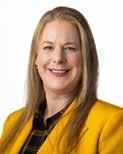





My Vision for the Year Ahead
Whether you are an advisor, plan sponsor, provider, or industry advocate, I invite you to join me in shaping this next chapter—one of progress, inclusion, and lasting impact.
By Lisa M. Drake (Garcia)
Walking across the stage at the 2025 NAPA 401(k) Summit in Las Vegas to begin my tenure as the 2025-2026 NAPA President was an incredible honor. I step into this role with deep gratitude, a profound sense of responsibility, and an unwavering commitment to the future of our profession.
The incredible success of this year’s NAPA Summit in Las Vegas underscored the energy and momentum driving our industry forward. With over 3,000 professionals in attendance, it was the largest summit in NAPA’s history.
The conference was packed with dynamic sessions, engaging conversations, and countless meaningful connections. I want to sincerely thank our sponsors for your continued support, and the conference steering committee, whose dedication and hard work made this event such a resounding success.
Serving on the NAPA Leadership Council over the past five years has been one of the most rewarding experiences of my career. I’ve had the privilege to work alongside exceptional leaders and learn from those who paved the way before me. As I step into this role, I am focused on building upon their outstanding work—continuing to elevate our voice, expand our vision, and increase our impact.
Here’s where I see us continuing to grow and lead:
1. Education
NAPA has long been committed to equipping advisors with the knowledge and resources to grow at every stage of their
careers. We continue to expand our educational offerings to meet the evolving needs of our industry.
This year, we proudly launched the Managed Accounts education program at the Summit, which was incredibly well received. With seven distinct educational tracks now available, we’re investing in each other and as well as the next generation of plan advisors.
2. Advocacy
We must remain relentless in our efforts to advance policies that expand access to retirement plans, improve plan features, and enhance retirement readiness for all American workers.
NAPA’s voice is respected on Capitol Hill, and we work directly with policymakers to shape legislation that matters to our clients and our industry. I encourage you to join us for the NAPA Fly-In Forum in Washington, D.C., on July 21–23 to contribute to this vital advocacy. Supporting the ARA Political Action Committee is another meaningful way to help protect and advance the future of our profession.
3. Connections
One of NAPA’s greatest strengths is the community we’ve built. Through our events, committees, and member forums, we create opportunities to connect, share knowledge, and inspire one another. The upcoming NQPC Conference in Chicago and the ERISA 403(b) Conference in D.C. this September are just a few examples of where these connections will flourish.
I am especially proud of NAPA’s continued focus on fostering an inclusive, supportive industry. Programs like Nourish Our Wealth

(NOW), which supports the growth of minorities in the retirement space, and the Thrive Mentoring Program, which connects women in our profession, are creating meaningful pathways for mentorship and advancement.
A New Milestone: The Rise Women’s Leadership Event
One of the initiatives I am most passionate about this year is our inaugural women’s leadership event—Rise! As I announced at the Summit, NAPA has long celebrated the achievements of women in our field, but it’s time to step it up. We are reshaping the former Women in Retirement Conference (WiRC) into a powerful women’s leadership forum. Rise will be an intentional space to empower women, develop leadership skills, and ensure we continue to see more women in leadership roles across our industry.
I am very excited for this event, scheduled for January 2026 in St. Petersburg, Florida, and I look forward to seeing so many of my colleagues, many who I am grateful to call dear friends.
Moving Forward Together
It is a privilege to lead NAPA during such a pivotal and exciting time. But leadership is never about one person—it’s about what we can accomplish together when we unite around a shared purpose. Whether you are an advisor, plan sponsor, provider, or industry advocate, I invite you to join me in shaping this next chapter—one of progress, inclusion, and lasting impact. Let’s challenge ourselves to think boldly, act courageously, and build a retirement system that better serves everyone. NNTM
Lisa M. Drake (Garcia), QPFC, AIF®, is Managing Director, Retirement Plan Consulting with SageView Advisory Group. This is her inaugural column as NAPA’s 2025/2026 president.

6
Katelyn Boone
Jim Dowling
John Gonsior
Ben Leger
Mike Manosh
Andrew Spahr Congratulations to these six Fidelity associates for being named 2025 NAPA Advisor Allies.*
Thank you for recognizing their commitment to you and for letting all of us at Fidelity play a small role in your accomplishments.
*Based on votes from thousands of registered NAPA Net users and NAPA members from a pool of nominees submitted by NAPA Firm Partners.
Fidelity Distributors Company LLC
Fidelity Brokerage Service LLC
The third-party trademarks and service marks appearing herein are the property of their respective owners.
The Fidelity Investments and pyramid design logo is a registered service mark of FMR LLC. ©2025 FMR LLC. All rights reserved.
No News Is (Very) Good News for Retirement Plan Savers
We had a big win for plan sponsors and participants, as well as the country’s retirement plan system as a whole.
By Brian H. Graff
The BIG news of the quarter is that there is none—or, more specifically, it’s what didn’t happen on Capitol Hill rather than what did.
I’m pleased to report that, at least at this stage, the American Retirement Association (ARA) successfully made its case to protect the tax incentives inherent in employer-sponsored retirement plans, and neither the House tax reconciliation bill nor the Senate version contained any provisions that would negatively impact retirement plans.
More specifically, the House bill—commonly called the One, Big, Beautiful Bill—released by the powerful House Ways and Means Committee in May, focused primarily on extending individual tax provisions from the 2017 Tax Cuts and Jobs Act (TCJA), provisions to address President Trump’s campaign promises, as well as enhanced business tax deductions for C corporations and pass-through entities.
On the individual side, these include lower tax rates, an increased standard deduction, and enhancements to the child tax credit.
Importantly (and I’ll reemphasize), it did not introduce new provisions directly affecting retirement plans. It was a big win for plan sponsors and participants, as well as the country’s retirement plan system as a whole.
We commend Committee
Chairman Jason Smith (R-Mo.) and the rest of the Ways and Means members and staff for recognizing the importance of the employer-provided system in providing retirement security for millions of Americans. The ARA’s Government Affairs team also worked extremely hard to educate members on why they should consider retirement policy separately, as they did with the SECURE 2.0 Act.
Most recently in June, the Senate Finance Committee released the text of the tax provisions to be included in the reconciliation bill. Like the Housepassed legislation, the Senate text also did not include any policy provisions that would negatively impact retirement plans.
The underlying legislation in the Senate version also focused on extending the expiring provisions of the TCJA and providing additional tax cuts to address President Trump’s campaign promises.
Among the broader proposed tax changes are to make permanent the individual tax rates and standard deduction limit (with some modifications) under the TCJA, as well as increasing the child tax credit and tax incentives for pass-through entities and C corporations.
The draft of the bill released by Senate Finance Committee Chairman Mike Crapo (R-Idaho) did not include any provisions that would, for example, curtail

retirement plan contribution limits or require taxpayers to make Roth-only contributions.
The ARA thanked Crapo and the rest of the committee members and staff for also treating retirement policy separately from tax policy, allowing the decadeslong bipartisan consideration of retirement issues to continue.
Due to disagreements between various factions of the House and Senate, the tax portion of the legislation included placeholders to allow the lawmakers to continue negotiating over the contents.
It’s just the beginning of the process and far from over, but for now, we look forward to helping pass important SECURE 3.0 legislation in the future on a bipartisan basis.
As always, ARA will remain vigilant, work diligently to protect our nation’s retirement plan system, and provide updates as we go. NNTM
Brian H. Graff, Esq., APM, is the Executive Director of NAPA and the CEO of the American Retirement Association.


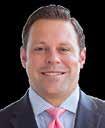
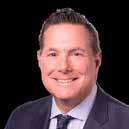



Tim Curran
Josh Gomez Bryson Hopkins Stewart Rauchman*
Trends ‘Setting’
Speak plainly for better plan participation. How personalized can 401(k)s really get? What issues are occupying home offices? And has the pendulum shifted on retirement income security? All this and more in this issue of ‘Trends Setting.’
The Personalized Participant
Adaptability: The next step in 401(k) plan personalization.
Customization, personalization, and now—adaptability?
A recently released survey found what it called a “powerful shift” in how Americans want to save for retirement: they’re looking for plans that adapt to them.
More specifically, Invesco’s Spring 2025 Defined Contribution Retirement Pulse Survey reveals a growing demand for personalization, simplified communication, and support for the financial realities workers face today.
It’s hardly surprising, and in keeping with individualized and tailored customer experience that consumers increasingly expect from the products and services they purchase.
“The findings paint a clear picture: retirement plans can no longer be one-size-fitsall,” according to the firm. “Personalization, flexibility, and trust-building communication are becoming non-negotiable elements for driving participant engagement and better outcomes.”
Specific findings include:
• 93% of employees want personalized retirement plans aligned to their goals and life circumstances, and 76% are willing to pay more for that kind of tailored experience.
• Beyond investments, employees seek flexibility and humanized support— particularly women.
• Behavioral shifts show a growing preference for “do-it-with-me” planning, signaling a desire for collaborative guidance.
• Portability is key: 83% want their contribution rates and auto-escalation features to move with them if they change jobs.
• Financial stressors remain, and the cost of living is the No. 1 savings barrier, while Millennials cite student loans and childcare as additional obstacles.
• Employees are increasingly cautious with singlefund solutions, favoring diversification and riskaligned strategies over simplicity alone.
“Results included a growing preference for personalized, goal-based investments based
on risk tolerance or retirement year,” Invesco noted. “In fact, many participants (76%) would consider paying more for retirement plan features tied to their personal goals. Participants were also interested in employer match contributions allocated to Roth (84%). If a match option were available in an emergency savings account, 75% would consider contributing more.” Invesco partnered with Ipsos to conduct an online survey of 508 DC plan participants across the US. Respondents worked for large organizations with 1,000+ employees, were actively contributing to a DC plan, and were 26 to 63 years old.
- John Sullivan
Junk the Jargon
Simple language tweaks can vastly improve plan participation.
“Here’s an often-overlooked truth: every employee is already a participant in a retirement plan,” Keith Mayfield said.
“Whether they think about it or not, whether they are active in it or not, every person is continuously participating in the one plan that matters to them: Their personal retirement journey,” Mayfield, Co-Founder of myAccownt, a participant deferral and communications microsite, explained. “Each year, they get older. One year closer to retirement. One less year to save. Every paycheck beginning with their first job is a deferral decision. Their actions — or inactions — become their plan. That’s their reality, and that’s our responsibility.”
Updating industry participation language to treat every new job as an expected continuation of an employee’s retirement saving journey delivers real, measurable success, he argued.
He and partner Sean Vanderdasson believe the retirement plan industry too often places unnecessary roadblocks when engaging participants, specifically with legacy industry language (meaning jargon) commonly in use at the initial point of participation.
Claiming it’s a “continued misstep in the industry,” it steadily (and subtly) misguides participants and sponsors by impeding — rather than assisting — their retirement-saving momentum. It’s hardly a winning strategy for anyone involved. As a C-suite executive for over two decades, Vanderdasson witnessed it far too often.
Mayfield and Vanderdasson described five points that better frame (or re-frame) the participation conversation:
1. 100% Participation
Eliminate the concept of “non-participants.” Every eligible
employee is a plan participant and a participant in their own ongoing personal retirement journey. Every plan document defines “participant” as one who has met eligibility and entry criteria, regardless of deferring 0% or higher, so don’t artificially create challenges to success by using “opt out of being a participant” or “become a non-participant” language. A 0% deferral is a valid participant choice — not an opt-out or non-participant. The only realistic way for an eligible employee/participant to become a “non-participant” is to terminate employment and achieve a $0 account balance.
2. 100% Welcome
Ditch the language of optionality, such as “Do you want to join?” and “Enroll now.” Instead, start with “Welcome — you’re already a participant in our plan; now, let’s personalize your deferral amount from 0% and up.” This shift improves the perception of the employer benefit culture, removes pointless friction, and fosters ongoing employee engagement.
3. 100% Auto-Enrollment
Since eligibility and entry criteria automatically trigger participant status, every plan is technically “auto-enrollment,” even those with a default deferral rate of 0%. When sponsors understand all eligible employees are already “in-theplan as a participant,” then the “auto-enrollment/auto-deferral” conversation can be re-framed to the following:
Upon meeting eligibility and entry requirements, all your employees are automatically included as plan participants. Let’s talk about what preset “autodeferral” starting percent from 0% to 10% is best as a starting point for your employee base … remember, all a new participant must do is personalize that deferral, a simple, one-time salary deferral decision.
4. Opt-Out of Opt-Out
Participants who “opt-out” aren’t opting out of anything
(other than the specific preset deferral %). They’re still participants. They can still choose other deferral amounts. They can change their deferral anytime. Rather than presenting the false binary choice of “accept the preset deferral or opt out of the plan and become a 0% deferring non-participant,” let’s invite them to choose their number from 0% to 10% (or more). That’s not opting out — it’s choosing a preferred amount as a continuing participant in the sponsor’s employee benefit plan.
5. Personalized Deferrals
Improve abstract education with personal visuals that show the short-term cost vs. longterm benefit of different deferral amounts — guide participants toward confident action through a personalized salary deferral visualization tool.
The industry needs to decide if it wants to update this language. Recordkeepers should quit using terms like “non-participant,” “optout,” and phrases like “elect not to participate,” instead choosing “0% contributing participant.” Mayfield said TPAs and advisors can then discuss with HR how all eligible employees are now involved as participants, which increases the value of the employee benefit to the sponsor.
“If language matters, which we, as an industry, completely believe it does, why do we use phrases such as non-participant or opt-out when they are factually inaccurate and take participants out of the game,” Mayfield concluded.
“Since the plan document describes a participant as someone who has met eligibility and entry, then by definition, all plans in the United States have 100% participation. All eligible employees in a 401(k)-type plan remain participants. Have them select zero percent deferral, which keeps them engaged and increases the plan utilization. That changes the mental framing for sponsors and employees and makes a tremendous difference.”
- John Sullivan
No Place Like Home (Office)
What’s happening at the home office? Broker-dealer, RIA staff sound off.
The always engaging Peer-toPeer sessions at the NAPA 401(k) Summit never disappoint — and so it was at this year’s event in Las Vegas in late April.
It’s an opportunity to connect and network with peers from across the nation. And, while advisors have a dedicated peer-to-peer session, the home office interactive discussion is designed exclusively for B/D, RIA, and aggregator home office professionals.
Jeff Cheshier, Vice President of Institutional Relationships with MyDeferral, enlisted Ameen Esmail, Equitable Advisors’ Retirement Plans Product Manager, to take notes, which Esmail dutifully (and comprehensively!) did.
The first topic of discussion — the retirement/wealth convergence — wasn’t a surprise and foremost on the mind of the retirement plan industry in general.
Strategic Growth & Transition: From Retirement to Wealth
“The members of our group are all focused on these opportunities, but our target markets are different, and therefore, our approach and focus also vary accordingly,” Esmail noted.
For example, “Brian’s” firm is primarily focused on 403(b)(7) accounts and the education plan sponsor (K-12) marketplace. Yet, they’re also expanding into the 401(k) marketplace and reviewing wealth management opportunities across both market segments.”
Another discussion group member, “Bob,” explained that

his Texas-based firm has 450 investment adviser representatives (IAR) and supports another 500 independent IARs.
“Historically, the firm’s IARs have primarily sold individual annuities,” Esmail recounted. “The firm is trying to have its IARs sell 401(k)s and other retirement plans, which is a significant challenge given the very different compensation models for annuities and plan sales.”
“Rhonda” covers Montana and Idaho for her firm and explained that her target market is ranchers and other business owners. She said business owners often have a singular focus on their plan, a challenge when attempting to expand the relationship into broader wealth management.
The group also briefly discussed pooled employer plans (PEP), with most members operating in the 401(k)space confirming they offer PEPs available through their recordkeeping partners.
Future Ready Workforce: Talent and Training
The discussion then moved to
various approaches to attracting and retaining advisors.
“Brian” cited three alternative compensation models to recruit new advisors: Up to a 100% payout plus signing bonus, draw versus commission, and straight salary. He indicated that most new recruits preferred the salary model.
Recordkeeper Relationships & Data Management
Who owns participant data and, by extension, the relationship? It’s an ongoing and vexing question, and data closed out the discussion.
“Richard” indicated his firm receives data from a handful of recordkeepers currently, but most of the firms in the discussion group indicated that they are not receiving participant-level data from recordkeepers.
“One group member indicated their advisors receive ‘eventdriven’ reports from recordkeepers for rollover opportunities,” Esmail concluded. “Other group members also confirmed they receive event-driven reports from some recordkeepers.”
- John Sullivan

‘Stressed’ Test Financial stress has employees ‘tightening their belts.’
Even though employees still widely participate in their company 401(k) plans, ongoing financial stress has affected their retirement savings behavior.
According to Morgan Stanley at Work’s fifth-annual State of the Workplace Financial Benefits Study, participation in 401(k) plans held steady year-over-year at 86%, but nearly four in 10 (39%) employees said they are reducing 401(k) contributions specifically because they are concerned about economic impacts related to inflation or recession; this level is up three percentage points year-over-year.
This finding was particularly pronounced among Gen Z and Millennial workers, where close to half—48% and 43%, respectively— indicated they had reduced their contributions. Overall, 67% of employees say they are reducing their contributions across all savings accounts (such as longterm savings, emergency savings, HSAs or contributing to a college
fund), which is up four percentage points since 2024, the study noted.
As to the impact of financial stress, two-thirds (66%) of employees say that it is negatively affecting their work and personal life, which is also up four percentage points year-over-year. What’s more, a large majority of HR executives (83%) worry employees’ personal financial issues are affecting productivity (up five percentage points).
Consequently, more employees are looking for comprehensive financial and retirement guidance through the workplace. When it comes to the most valued types of retirement planning assistance, access to a financial advisor is the top choice for employees (47%), followed by goals-based retirement investment planning (45%), and retirement income solutions (43%).
HR leaders also ranked the same three choices among their top three at 38% each, which Morgan Stanley notes shows a “clear consensus” around the need for holistic support throughout the full retirement cycle.
Attraction and Retention
Meanwhile, addressing employee needs and expectations around retirement-plan support remains key to talent attraction and retention—the top-cited strategic financial priority for companies in 2025.
And professional guidance is a key differentiator. In this case, the study found that roughly 7 in 10 (69%) HR executives believe access to retirement planning assistance from financial professionals is a top or high priority for employees when choosing where to work.
A majority of employees agree (54%)—and even more so among those who participate in their
company benefits (60%). Those who participate were also less likely to say that they need to accelerate their financial planning efforts to make up for lost time (82% vs. 90%).
“In the face of economic uncertainty, it is clear that comprehensive retirement benefits are essential for individual financial security while also serving as a critical lever to retain top talent,” noted Jeremy France, head of Institutional Consulting Solutions at Morgan Stanley. “Our findings emphasize that modern workplace retirement plans go beyond simply offering a 401(k) and match; they now integrate ongoing financial advisory, investment planning, and income solutions.”
- Ted Godbout
Retirement Income Recourse
Has the pendulum shifted on retirement income security?
If you look back a few years ago, there was only moderate interest among 401(k) participants in having a lifetime income option as part of their plan, but new survey results find that that sentiment has shifted considerably.
According to the Nuveen and TIAA Institute’s recent survey of over 2,100 401(k) participants, nearly all workers saving in 401(k) plans (93%) say it is important for their retirement plans to provide options for converting savings into guaranteed monthly retirement income. And more than 40% think this is “very important.”
The survey findings note that this opinion is equally common among men and women. It also holds across generations, though it’s slightly less common among Baby Boomers. Even among participants who expect their
While retirees are increasingly interested in lifetime income solutions, many struggle to develop effective withdrawal strategies.
— Surya Kolluri, head of the TIAA Institute
401(k) and any other retirement savings to be a minor source of retirement income, 91% think it’s important for plans to offer a guaranteed lifetime income distribution option.
Similarly, 87% of respondents think employers have a shared responsibility to help employees achieve retirement income security, and nearly half (44%) of these respondents strongly agree with this sentiment.
Yet, when asked similar questions in 2021, just over half of workers said their employers had a responsibility to provide access to lifetime income in retirement, and roughly 6 in 10 workers indicated they were interested in an annuity that provides lifetime income if it was offered through their employer’s retirement plan (compared to nearly all today).
Would Likely Use?
And while many 401(k) plans still do not offer a way to convert savings into consistent monthly income that is guaranteed for a retiree’s lifetime, most 401(k) participants indicate they would likely use an in-plan fixed annuity.
If included in their plan, 9 in 10 participants (92%) say they would be interested (49% very interested) in using a fixed annuity, according to the findings. Perhaps not surprisingly, such interest is more common among participants expecting their 401(k) and any other retirement savings to be a major source of retirement income (51% very interested) compared with those expecting this to be a minor source (44% very interested).
Across generations, and among both men and women, approximately half of 401(k) participants would be “very interested” in using a fixed annuity to convert retirement savings to
retirement income.
Drilling down further, nearly all (95%) 401(k) participants with savings in a target date investment think it would be valuable for such investments to include a fixed annuity component that earns a guaranteed interest rate, and 47% think it would be very valuable. Notably, those who were auto-enrolled into their plan feel including a fixed annuity component would be very valuable (51%) compared with their peers who self-enrolled (41%).
The Education Gap
Still, although participants support the sentiment of having an in-plan option, the survey found an ongoing lack of longevity literacy among many adults.
In fact, 401(k) participants tend not to think about withdrawing money from their plan, the findings noted. Only 21% have thought a lot about how they’ll withdraw money to provide themselves with income in retirement. And it’s not primarily a phenomenon among younger participants. Here, the survey found that just 23% of Baby Boomers have thought a lot about a withdrawal strategy.
Men are more likely than women to have done so, but few have. Moreover, 40% of women have thought little, if at all, about this. Even among participants who expect their 401(k) and any other retirement savings to be a major source of income in retirement, only 23% have thought a lot about how they’ll withdraw money.
Consequently, only about a third (32%) of 401(k) participants feel they have a very good understanding of the ways they can withdraw money from their
plan in retirement. Likewise, only 26% are very confident about choosing the best way to do so. The survey also found that understanding withdrawal options isn’t significantly greater among those who expect their 401(k) and any other retirement savings to be a major source of income compared with those expecting it to be a minor one.
“While retirees are increasingly interested in lifetime income solutions, many struggle to develop effective withdrawal strategies,” said Surya Kolluri, head of the TIAA Institute. “The challenge lies in converting retirement savings into sustainable monthly income—a process that remains unclear to most participants. This knowledge gap makes education and thoughtful plan design more crucial than ever to prevent potentially costly financial missteps at and during retirement.”
Bridging the Gap
Nuveen emphasizes that plan sponsors can bridge this gap and boost employees’ retirement confidence—especially for those nearing retirement—by providing focused and regular education programs about retirement benefits and how to convert savings into lifetime income.
“Today’s workers see guaranteed retirement income not just as a personal goal—but as a shared mission with their employer,” added Brendan McCarthy, head of Retirement Investing at Nuveen. “By acknowledging that they can play a critical role in offering financial security after retirement, plan sponsors can establish trust and goodwill among employees— potentially for a long time.”
- Ted Godbout
Proud of our 2025 Advisor Allies
Congratulations to our Transamerica RVPs for ranking among NAPA’s Top 100 DC wholesalers for 2025. We’re pleased to recognize these Advisor Allies and to continue supporting their efforts to help everyday Americans live their best lives — now and in retirement.
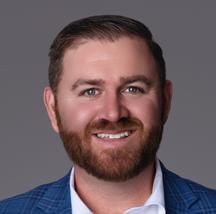
Institutional Sales


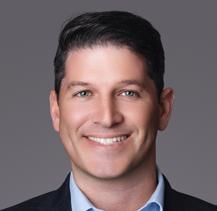
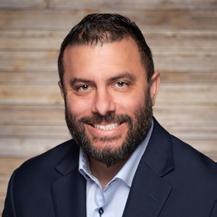
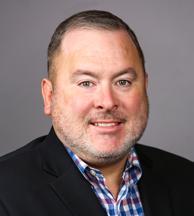
Frank Castellvi Director,
Wholesale Northeast region
Sebastian Aza
Regional Vice President
Wholesale Greater Los Angeles region
Mark Hamilton Regional Vice President Wholesale South Central region
Perry Lazarus Regional Vice President Wholesale South Central region
Jeff Beauregard Regional Vice President Wholesale Greater Boston region
Chris Castro Regional Vice President Wholesale Los Angeles/Hawaii regions
Strategic moves to improve client outcomes
In the retirement services industry, winning clients and keeping them content requires staying current on industry regulations and trends and proactively addressing clients’ wishes. Customizing plan solutions based on each client’s unique needs and setting up clients’ retirement plans and plan participants for financial wellness are surefire ways to achieve that. Here are three ways to do it.
Strategy 1: Help your clients set up an emergency savings option for their employees
Most American workers are effectively living paycheck to paycheck, unable to afford an unexpected emergency expense. And for those who do have money set aside for emergencies, 80% of them use that money to pay for emergency expenses as well as essentials such as rent, utilities, or other monthly bills; food; home repairs; and supplies. Consequently, by the time an immediate financial need comes along, many Americans must turn to another source to cover the expense: their retirement savings.
Certain retirement plans — 401(k)s, 403(b)s, and 457(b)s — may allow participants to make a hardship withdrawal because of an immediate and heavy financial need. Provisions in the SECURE 2.0 Act changed the hardship withdrawal rules in two ways: First, for a hardship withdrawal up to $1,000, the distribution is subject to ordinary income taxes but not the 10% penalty tax on early withdrawals. And second, the employee must submit written certification that he or she has experienced a financial hardship, the funds cannot be reasonably obtained from another source, and the withdrawal does not exceed the amount necessary to meet the financial need.
In addition, since January 2024, there is a second retirement-plan option to help American workers pay for emergency expenses: in-plan emergency savings accounts. For now, the adoption rate of in-plan emergency savings accounts is low, but here is what they entail: In-plan emergency savings accounts allow non-highly compensated employees to withdraw money from their retirement plans to pay for emergency expenses without incurring penalties and taxes. Employee contributions to in-plan emergency savings accounts must be after-tax and may not exceed $2,500. And employers can make contributions to their employees’ in-plan emergency savings accounts.
Here’s how you can assist your clients in this regard:
• Help your clients determine whether they should offer hardship withdrawals or in-plan emergency savings accounts or both.
• Amend plan terms to establish whether hardship distributions or contributions to in-plan emergency savings accounts are permitted, or consider adopting an out-of-plan emergency savings solution, which offers greater flexibility and less administrative challenges.
• Understand the documentation and verifications necessary to qualify participants’ hardships and justify hardship distributions.
Strategy 2: Prepare your clients for the challenges associated with automatic enrollment in 401(k)s and 403(b)s
Automatic enrollment in 401(k)s and 403(b)s is designed to help workers save money for retirement and prepare for the future. But certain factors have caused the initiative to face challenges. By requiring employees to opt out of 401(k)s and 403(b)s instead of allowing them to opt in, employers are enrolling thousands of employees who may have no intention of growing their retirement savings in their employer’s plan.
Because nearly 40% of individuals quit their jobs within a year of being hired, employers must now deal with an increasing number of ex-employees’ small-balance accounts in their retirement plans. Moreover, retirement plans with transitory participants’ small-balance accounts often generate higher administrative fees. And since employers continue being fiduciarily responsible for ex-employees’ small-balance accounts, they face elevated liability risks.
With a growing number of ex-employees’ small-balance accounts in retirement plans, mandatory cash-out policies take on greater importance. A retirement plan’s cash-out policy allows plan fiduciaries to force out ex-employees’ small-balance accounts. But if a plan sponsor has no cash-out policy or its cash-out policy is less than the maximum limit, small-balance accounts left behind by former employees can accumulate in retirement plans.
Help your clients navigate these challenges by doing the following:
• Work with your clients to consider changing their retirement plans’ mandatory cash-out limit to $7,000 or less and implement an automatic rollover IRA program. This will allow your clients to roll over ex-employees’ retirement savings into safe harbor IRAs if those individuals don’t specify what they want to do with their money.
• Inform your clients of the consequences of cashing out retirement account balances of $1,000 or less with checks: uncashed checks. Suggest that they consider rolling over small-balance accounts of $1,000 or less into safe harbor IRAs. This will minimize uncashed checks and help decrease plan maintenance, plan fees, and fiduciary liability.
Strategy 3: Get up to speed on how to terminate a retirement plan
Employer-sponsored retirement plans such as 401(k)s and 403(b)s constitute an attractive benefit that employees may expect to continue indefinitely — but under certain circumstances, they may not. Whether because of a bankruptcy, acquisition, merger, or voluntary termination, terminating a 401(k), 403(b), or other defined contribution plan is a complex process requiring several administrative steps. Key among them are the following:
• Amend the retirement plan to establish a termination date.
• Stop contributions to the plan and provide full vesting of benefits for all plan participants regardless of the original vesting schedule.
• Authorize the plan to distribute all benefits in accordance with plan terms as soon as feasible after the termination date.
• Notify plan participants and beneficiaries of the plan’s termination.
• Distribute all plan assets as soon as administratively possible.
• File any required tax forms.
A significant factor that can further complicate terminating a retirement plan is missing plan participants. An employer terminating its retirement plan cannot simply ignore missing or non-responsive plan participants; it must make every attempt to find and contact these individuals because the plan termination cannot be finalized until all of the assets are distributed. To make plan terminations less complicated, advise your client to collaborate with a provider of plan termination services or search services, which can lessen the administrative burden and make filing a final form 5500 easier.

Turning 401(k) Marketing Ideas into Action
A 5-step process for your business development campaigns
By Rebecca Hourihan AIF, PPC
Great ideas can strike anywhere. During your morning coffee. On a client call. Even midscroll through LinkedIn. Maybe you’ve jotted a few down, but how often do they get lost on a sticky note or buried in a Word doc?
The big question is: how do you turn those ideas into real campaigns that drive results?
That’s where structure comes in. And after working with hundreds of advisors over the years, I can tell you, it’s rarely a lack of creativity that holds most people back. It’s a lack of process.
Let’s start with a solid foundation. Begin with strategy, communicate with consistency, and always align your message to your audience. Now, we want to help you put that into motion.
So today, I’m sharing a 5-step process to help you put those ideas to work.
This simple process is built specifically for 401(k) advisors like you, whether you’re launching a one-off campaign or planning an entire quarter of marketing. It walks you step-bystep through organizing your ideas, assigning responsibilities, launching your message, and measuring your success.
Why you need a marketing process
Most advisors don’t need more marketing ideas; they need a system to execute the ones they already have.
Without a clear process:
• Campaigns stall
• Deadlines slip
• Messaging gets inconsistent
• Results are hard to track
And that’s super frustrating, especially when you’re juggling client service, prospecting, compliance, fiduciary reviews, and everything else your role demands.
This article gives you a repeatable process (see what
we did there?) to manage it all. It helps you get organized, stay focused, and actually launch campaigns that support your business growth goals.
How it works
Follow along with our simple five-step framework: Strategy à Tasks à Implementation à Delivery à Tracking à Repeat.
Each step includes prompts, examples, and a place to assign real names and real dates. Here’s what’s inside and how to use it:
Step
1: Start with strategy
Every great campaign starts with why. Why are you running this campaign? Who are you speaking to? And what do you want them to do?
Start by answering these:
• Target audience
Be specific: Plan sponsors with $3–$15M in plan assets? HR managers at manufacturing companies? Business owners nearing retirement?
• Primary goal
Set a clear objective: Book 5 new intro calls. Generate 10 warm leads. Grow your email list by 100 names.
• Key message
What pain point are you solving? And what’s your value prop in one sentence? When you start here, everything else becomes easier and more effective.
Step 2: Assign tasks
Campaigns don’t launch themselves. Assign each step of the process to a real person with a real deadline.
Common roles include:
• Campaign strategy
• Copywriting (content, emails, social posts)
• Visual design
• Compliance review
• CRM/list management
• Final approval
Even if you’re a team of one, getting these responsibilities in writing gives clarity and momentum.
Step 3: Implement
Now it’s time to build your assets.
Check off what you need:
• Content posting (articles, videos, guides, worksheets, et al)
• Email series
• Social media graphics
• Landing or registration page
• Webinar or on-demand video
• Sales enablement materials
• Participant or plan sponsor one-pager
Need help creating these? This is where collaborating with your internal team, a freelancer, or a trusted marketing partner can lighten the load.
Step 4: Deliver
Here’s where many advisors get stuck. You’ve created the materials… but they’re still sitting in drafts or waiting for someone to hit the anxiety inducing “send” button.
Map out your publishing and delivery plan:
• Email launch dates
• Social media posts (with dates and platforms)
• Any physical mailers (oddly, these still work)
• Follow-up touchpoints for your sales team
Consistency matters more than perfection. Set a schedule and follow it.
Step 5: Track results
This is the step most advisors skip because it’s time consuming and not sexy, but it’s the one that helps you get better every time. Define what success looks like, and it’s not just new clients. This is a long sales cycle and results over time win the game. Review these metrics:
• Email open and click rates
• Social engagement
• Website or landing page traffic
• Webinar registrations
• Conversations started
• New leads or meeting requests
Also note the intangible results: Did a client forward your email? Did a prospect mention your article on a call? Did your team feel more confident explaining your services?
Review your campaign after launch, make notes, and carry those lessons into your next initiative.
Let’s be honest, you’re busy
We get it. You don’t have hours every week to “figure out marketing.” That’s why this process exists to help you focus and execute faster, without guessing. You can complete it in 20–30 minutes, use it to lead your next team meeting, or make it part of your monthly check-in. The more you use it, the smoother your marketing process becomes.
Marketing doesn’t have to be overwhelming. It just needs to be organized.
From ideas to impact
There’s a great saying: Vision without execution is just a dream. You already have the vision. You know the problems your clients face, and the value you bring. Now it’s time to put that vision into action.
Use this process as your launchpad. Make it a habit. Use it to plan your next campaign, your next quarter, or your next big growth goal.
And remember: the best marketing doesn’t happen in a rush. It happens with intention, alignment, and follow-through.
Let’s make this your most impactful season yet.
Thanks for reading & Happy Marketing! NNTM

Building in Public: Lessons from Formula One for Retirement Plan Advisors
The track is clear; the path is proven. Take your audience along for the ride, and watch your practice accelerate.
By Spencer X Smith
Remember when Formula One was barely on America’s radar? Not so long ago, unless you were a niche car racing fan, it likely didn’t cross your mind much, if at all. Fast forward to today, and F1 is thriving in the United States, boasting record attendance, thriving fan engagement, and a flourishing media presence.
How did this happen? It wasn’t just slick cars and high-speed racing but the intentional act of “building in public.”
“Building in public” refers to openly sharing the process, struggles, successes, and even setbacks involved in creating something. Startup companies, particularly their founders, often use this transparency to build
trust and community among their audience.
Formula One adopted this approach through media platforms, notably Netflix’s groundbreaking documentary series Drive to Survive. The series pulled back the curtain on the drivers, teams, and the drama unfolding behind the scenes, creating millions of newly minted fans deeply invested in the sport’s personal journeys and internal workings.
So, what does this have to do with retirement plan-focused financial advisors?
Transparency Matters to Retirement Advisors
Traditionally, financial advisory, particularly in the retirement planning space, has felt more like
a behind-the-scenes operation. Advisors meticulously plan strategies, weigh investments, and craft personalized advice largely away from clients’ eyes. But times have changed.
Transparency is increasingly prized by clients seeking trust, connection, and clarity in the services they choose. Today, retirement plan advisors have a tremendous opportunity to embrace the “building in public” approach, transforming their practice by sharing their methods, insights, and decision-making processes openly and authentically.
Learning from Formula One’s Playbook
F1’s explosive growth in America wasn’t simply due to more races or advertising. It came
from storytelling, vulnerability, and openly sharing the complexities of running the world’s fastest cars. You can achieve similar outcomes by adopting this approach.
Step 1: Document Your Journey
Just as F1 teams show their process of preparing for races, you should regularly share their expertise and ongoing learning. Whether through blogs, vlogs, podcasts, or LinkedIn posts, documenting your journey builds credibility and humanizes your expertise. Schedule a quarterly breakdown of how market changes influenced your clients’ retirement portfolios and lessons learned from adapting to unexpected financial shifts.
Step 2: Reveal Your Challenges and Solutions
Formula One teams and drivers don’t just show their triumphs; they also highlight the struggles, rivalries, and technical setbacks they face. Similarly, advisors like you who openly discuss challenges - whether that’s managing a downturn, adapting to new regulations, or improving participant engagement - can foster trust and connection. Clients appreciate understanding how their advisor navigates complex situations. Sharing solutions openly positions you as an expert and a relatable human being committed to continuous improvement.
Step 3: Celebrate and Share Your Successes
Just as F1 victories are proudly celebrated and dissected in the public eye, retirement advisors like you should openly highlight client wins without breaching confidentiality. Maybe you helped a client’s employees significantly increase participation rates through targeted financial wellness workshops. Share that success story, including the methods used and hurdles overcome. Doing so
builds a narrative that potential and current clients can believe in and rally around.
The Formula One Effect: Increased Client Engagement
The impact of “building in public” can be profound. Formula One’s openness drastically increased its audience by creating a strong emotional investment among viewers. Retirement plan advisors like you can harness a similar effect. By sharing behindthe-scenes insights, you’ll cultivate engaged, informed clients who better understand and appreciate the value provided.
You can begin by publishing short, candid updates about how you’re adjusting investment approaches in response to evolving economic conditions or regulatory changes. Your transparency demystifies complex topics, increases client trust, and makes financial education a powerful engagement tool.
Building in Public: An Advisor’s Competitive Edge
Advisors often compete based on performance, fees, fiduciary roles, or customer service. But building in public offers another potent differentiator - transparency. While other advisors remain behind closed doors, those who openly share their practices can attract more clients, deepen existing relationships, and enhance their market positioning.
Imagine two advisors: One provides standard quarterly updates, while another regularly shares insights into their daily operations, candid reflections on financial markets, and detailed explanations of how they adapt their strategies. Which advisor would inspire greater trust and loyalty? The answer is clear - the advisor who builds in public.
Starting Your Own “Drive to Survive”
How can retirement-focused
advisors like you practically apply this concept?
• Launch a blog or newsletter sharing personal - and “personal” is the operative word here - insights on market trends, retirement plan best practices, and your takeaways from industry events.
• Record short videos or podcasts detailing your decision-making process and financial strategies.
• Regularly post reflective insights or “lessons learned” on social media platforms, particularly LinkedIn.
The key is consistency and authenticity. Formula One teams didn’t build their massive following overnight; it required steady, transparent engagement.
The Payoff: Loyalty and Longevity
When advisors embrace “building in public,” the payoff is clear. Clients no longer see you as just an advisor. They see you as a guide, an educator, and a trusted partner. This depth of relationship encourages client loyalty, promotes referrals, and ultimately supports a thriving, sustainable business.
Formula One’s journey from niche to mainstream in the U.S. provides a clear model: transparency creates connection, connection fosters trust, and trust leads to long-term success. Retirement advisors like you who leverage this lesson won’t just survive… they’ll thrive.
Your Next Lap
So, what’s your next move? Will you stay hidden behind charts and annual reports, or will you build in public, openly sharing your knowledge, struggles, and victories?
The track is clear; the path is proven. Take your audience along for the ride, and watch your practice accelerate. NNTM

MARKET PRIVATE INVESTMENTS
Promises and Potential Pitfalls

MARKET PRIVATE INVESTMENTS
RUMORED REGULATORY AND POLITICAL SUPPORT TO ALLOW GREATER PRIVATE MARKET INVESTMENT ACCESS—INCLUDING RETIREMENT PLANS—THRUST THE ISSUE BACK INTO THE SPOTLIGHT. WHAT’S NEW, POSITIVE, AND/ OR PROBLEMATIC? IMPORTANTLY, WHAT DO ADVISORS THINK? WE TAKE A LOOK.
BY JOHN SULLIVAN


Rapid and recent developments in the retirement plan space
surprised many in an industry known for moving at a slow (some would say glacial) pace.
A renewed push for private market investments (equity, debt, credit, etc.) in retirement plans is underway after years of debate about the role they would or could play in retirement savings. It’s driven partly by President Trump’s reported consideration of an executive order to expand investor access to these asset classes, among others.
Once part of a larger argument about the appropriateness of offering alternative investments in retirement plans overall, the administration’s rumored actions turned a spotlight on the private investment subset. If you’ve heard the term more frequently recently, you’re not alone.
“Alternative is such a vague catchall that I think it could mean anything,” Jason Kephart, Director of Multi-Asset Ratings for Global Manager Research at Morningstar, said. “In the 1990s, people considered publicly traded REITs an alternative investment. Emerging markets used to be alternative. I think it’s one of these things where what ‘alternative’ means constantly changes. I think ‘private markets’ helps better define what we’re talking about. It’s probably better to be more specific than less, particularly when discussing people’s retirement accounts.”
OneDigital Chief Investment Officer Michael Esselman agreed, adding that the vernacular has changed.
“The distinction between alternative and private investments is a good one,” Esselman said. “I think it’s healthy. If you think about alternatives, that could mean a lot of things to a lot of people.
Is it a commodity alternative? Yes. A hedge fund? Clearly. But we’re looking specifically at private credit, private equity, private infrastructure, private real estate, and those categories. You can then carve out the other alternatives and say yes to commodities and no to a hedge fund, that sort of thing.”
To say that including private market investments in retirement plans is controversial is like saying water is wet, a statement amusingly obvious.
Competing headlines in the consumer press highlight their potential for better diversification and riskadjusted returns. They include terms like “fairness” and “democratization” when describing the privileged access highnet-worth investors, endowments, and defined benefit plans have enjoyed for years. So, why not everyone else?
They have a point: a June 2025 report from the National Institute on Retirement Security (NIRS) found that from 2001 to 2023, the average public pension plan “reallocated about 20 percent of its assets from public equity and fixed income into private equity, real estate, hedge funds, and other alternative investments,” a move that “enabled these funds to grow, deliver reliable benefits, and withstand market turmoil.”
Conversely, critics argue that higher fees, a lack of liquidity, complexity, and fiduciary complications make them unsuitable for most retail investors— defined contribution plan participants included.
It’s an argument Steve McCourt, Co-CEO of mega investment consultant
Meketa Investment Group, heard for years, but one he says the industry is beginning to counter.
“From the institutional, larger [retirement] plan perspective, it appears there’s a pivot towards utilizing private markets solutions,” McCourt said. “The larger market for a long time has been pretty much constrained by a combination of litigation and regulation on many things, but mostly around fees. So, any high-fee products have been really difficult to embrace with larger 401(k) plans and 403(b) plans.”
He added that two developments may allow some larger market plans to consider private market investments. The first is the likelihood of a more receptive regulatory environment going forward.
“The second is the longer that private market investment solutions have been around, the longer the track record there is to develop a prudent approach to using them within portfolios, despite their higher fees,” McCourt explained.
And, advisors are playing an increasing role, albeit mainly in wealth management so far.
“Wealth management advisors are going through an adoption cycle, or rather, over the last two years, an educational cycle,” Michael Bell, CEO of Meketa Capital, Meketa Investment Group’s wealth management arm, said. “There was a heavy embrace of education and digging down to understand what these offerings are, the due diligence involved, and what it really means to incorporate them into a portfolio.”
EDUCATION TO EXECUTION
He’s also seen a pivot, starting at the end of last year and the beginning of this year, one from education to execution.
“It’s now about how they actually incorporate those private market vehicles into their portfolios, whether through a separate account, model deliveries, or individual investment vehicles,” Bell explained. “We’ve seen adoption take hold in the wealth management space, and advisors are now incorporating it into their nonqualified businesses. They’ve become comfortable with it in the traditional arena, so how do they incorporate that into defined contribution plans? We’re seeing that activity really pick up, led by financial advisors, and maybe even more so than what you would see from traditional participants.”
One would think industry reverence for the late David Swensen, Yale University’s chief investment officer and a pioneer in private markets, would make acceptance and adoption easier for investment, financial—and yes, retirement plan—advisors.
Not so, according to Bell.
“It’s education, and even though these vehicles have been in the market, the investment set hasn’t been open and available to advisors until recently,” he said. “It was available for institutional investors because of the investment minimums and the paperwork involved. I think advisors were aware of it. They just didn’t dig down into it because it really wasn’t available to them. Now that it has become available in different evergreen structures, it’s like, ‘I better understand what’s out there and available.’”
REFORM RECKONING
Private market proponents (and many others) agree that litigation reform is critical for widespread adoption in the retirement plan space.
The frenzy of fiduciary breach filings continues uninterrupted, and the numbers are striking. As American Retirement Association CEO Brian Graff noted:
• About one-third of large retirement plans have been sued since 2016.
I THINK THIS IS THE NEW FRONTIER. ANY TIME YOU INTRODUCE SOMETHING SEEMINGLY REVOLUTIONARY, IF YOU WILL, FOR THE DEFINED CONTRIBUTION SPACE, IT TAKES TIME. BUT WHAT I THINK IS ENCOURAGING IS THE FACT THAT YOU HAVE FIRMS LIKE EMPOWER WORKING WITH SOME OF THE BEST PRIVATE ASSET MANAGERS IN THE WORLD THAT HAVE TOP-DECILE, TOP-QUARTILE RETURN RECORDS.

• Over 50% of plans with more than $1 billion in assets have faced legal claims.
• In 2023 alone, 42 settlements were reached, totaling $353 million.
Calling them “cookie-cutter” lawsuits, critics contend it’s gotten so extreme that they simply cut and paste from previous filings, occasionally neglecting to update the name of the defendants. It’s one reason Daniel Aronowitz, President Trump’s nominee for Assistant Secretary of Labor for the Employee Benefits Security Administration (EBSA), has written so extensively on the subject.
Tort lawyers are salivating at the prospect of another high(er) fee target, regardless of the corresponding value it might deliver to participants.
“The litigation has been painful, and I wouldn’t hold my breath for litigation reform,” McCourt said. “But gosh, that would be great if it happened.”
Empower CEO Edmund Murphy was more optimistic, referencing ongoing discussions with regulators and legislators.
“This is something that I personally spoke with [Lori Chavez-DeRemer] about, who was the Secretary of Labor nominee at the time,” Murphy said. “We will continue to have those discussions and dialogue on Capitol Hill and advocate for what we think is an
important opportunity for 125 million investors. Not unlike other types of investments where, over time, sponsors have been granted a safe harbor, we’ll need regulatory and legislative support to clear that hurdle. That being said, I think there are plan sponsors today that, with the structure that’s been outlined, are more than comfortable moving forward.”
Empower, the nation’s second-largest recordkeeper, recently teamed with private investment providers Apollo, Franklin Templeton, Goldman Sachs, Neuberger Berman, PIMCO, Partners Group, and Sagard to offer them to its 19 million retirement plan participants.
“Private market investments have been available to endowments, foundations, and defined benefit plans for decades,” Murphy said, referencing the aforementioned fairness argument. “Some of these asset classes are the best-performing asset classes over the last 30 years. If employers have been willing to make an investment allocation decision in private assets on behalf of their pension plan participants, why not consider it in the defined contribution voluntary system?”
While widespread adoption will take time, he added that he believes many participants in defined contribution plans will allocate some portion of their
RIGHT NOW, 87% OF COMPANIES IN THE UNITED STATES WITH REVENUES OVER $100 MILLION ARE PRIVATE. THINK ABOUT THAT. UNTIL NOW, 125 MILLION DEFINED-CONTRIBUTION INVESTORS HAVE HAD NO ACCESS OR EXPOSURE TO THOSE COMPANIES.
discretionary investment dollars to private assets.
Murphy also suggested the manner in which the portfolios are structured can address traditional obstacles to private market investments in 401(k)s, like fee and liquidity issues. He mentioned collective investment trusts (CITs), specifically, which would serve the dual purpose of helping to increase adoption while repelling potential lawsuits.
“I think this is the new frontier,” Murphy said. “Any time you introduce something seemingly revolutionary, if you will, for the defined contribution space, it takes time. But what I think is encouraging is the fact that you have firms like Empower working with some of the best private asset managers in the world that have top-decile, topquartile return records. We think we can work together and bring solutions to those end users in a way that delivers real value and strong investment performance over time.”
Indeed, with 40% fewer publicly traded companies, he said private market access will be critical moving forward.
“Right now, 87% of companies in the United States with revenues over $100 million are private. Think about that. Until now, 125 million defined-contribution investors have had no access or exposure to those companies. Yet, those invested outside DC plans, wealthy investors, and defined benefit plan participants have access. I think about it from a standpoint of just plain fairness. It’s the democratization of private assets. I know the term gets overused, but it is appropriate.”
“I think there’s a fair argument that if you want to own the market and want exposure, private companies are part of the market,” Morningstar’s Kephart said.
“There’s a lot of private companies that investors don’t have access to. There also are a lot of smaller companies. I think there’s definitely an argument you can make there. I think the challenge comes then, ‘Okay, what do we do about the fees, especially in retirement plans where it’s so fee sensitive?’ I think if there is an executive order, and it doesn’t really address fee litigation, then I’m not sure. That’s one of the biggest barriers— so many excessive fee lawsuits in 401(k) plans.”
POINT OF ENTRY
In an earlier article, we quoted Jason Zweig from The Wall Street Journal and his frank views about alternative investments.
“In the right hands, these assets work wonders. In the wrong hands, they wreak havoc,” Zweig wrote at the end of last year. He returned in May, specifically addressing private market investments in retirement plans, decrying the illiquidity premium (additional return generated from investments difficult to sell and convert to cash immediately) and interval funds (in which liquidity is available at defined periods, or “intervals”), among other private market investing characteristics.
Yet, again, the portfolio’s structure can address cost, complexity, and other traditional obstacles to 401(k) inclusion that Zweig and other critics describe— meaning as part of a professionally managed solution rather than a standalone investment menu selection from which individual participants can choose. The managed solution’s overall allocation to private market investments would ideally be small, for example, 5%.
“Instead of offering it as a standalone solution, putting it in a target date
fund means you now have a diversified portfolio that participants can invest in,” McCourt said. “It’s also easier to highlight as a plan sponsor that you’ve integrated private market solutions in a diversified way that mitigates risk and improves liquidity for the participant.”
“I don’t think anybody, for good reason, is going to bring that into the core investment menu lineup,” OneDigital’s Esselman further emphasized. “That’s just not prudent. People have put them in custom target date funds in large plans for a long, long time, but really, it will be the assetcontrolled programs like managed accounts, which is where we’re looking at bringing them in. Does the plan have a professionally controlled asset allocation program? That’s where it’s likely to come in first.”
ADVISOR ATTITUDES
But what are retirement plan advisors, specifically, seeing, and what do they think?
“A lot of the same players that were offering these for the high-net-worth accredited investors are the ones that are bringing it to the 401(k) market as well,” Jennifer Doss, CAPTRUST’s Senior Director and Defined Contribution Practice Leader, said. “It’s a lot of the same names, and in a lot of cases, it’s the same evergreen investments that they’ve been running for, in some cases, years and years. They’re just packaging them a little differently to be appropriate for the 401(k) market, putting them into collective investment trust wrappers. There’s a lot of overlap with what we’ve already been doing on the private wealth side with the due diligence that now we can bring over to the 401(k) side.”
She was diplomatic when asked to
elaborate further and if she thought private market investments make sense in retirement plans and are appropriate for participants.
“I’m going to give you an economist answer and say it depends,” she said. “It depends on the client; it depends on the participant demographics; it depends on the sophistication of the committee (and whether they outsource to a 3(38)-investment manager). So, I think the answer is, ‘it depends.’”
She said she likes the way they’re discussed within the industry—a small allocation placed within broader asset allocation vehicles like target date funds, managed accounts, or risk-based models—rather than directly into 401(k) plan menus for participants to figure out.
“A professional asset manager, or again, a 3(38)-investment advisor, is making decisions in terms of the due diligence, picking the managers, handling the liquidity, verifying the reasonability of the fees, and then managing the asset allocation and making changes over time,” Doss said. “If you do it that way, they could certainly add value for the right client.”
She added that, regardless, private market investment interest from her plan sponsor clients is low—hardly surprising given the general lack of awareness and the concept’s relative newness.
“I don’t think we’re unique in saying that, historically, on the 401(k) side, this has not been a point of conversation outside of the last six months.”
Christian Stanley, Partner and Senior Financial Advisor with Greenspring Advisors, agreed, noting that “after over a decade of doing this, I’ve knowingly had two individuals ask. One was the CFO of a nonprofit organization, and the other was the CEO of a for-profit medical practice, both of which have happened in the last five years. The inquiries are low. I think, like anything, ESG, retirement income, etc., we drive all those conversations to our clients instead of clients coming to us.”
So, while general industry interest is increasing, there’s still a long way to go with plan sponsors, participants, and advisors. Widespread adoption will take time, yet the rationale and innovation are quickly converging, making (at least) the case for retirement plan consideration.



AWESOME ALLIES!
2025 NAPA TOP DEFINED CONTRIBUTION WHOLESALERS
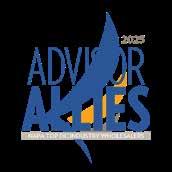
BY JOHN SULLIVAN
HOW THE ADVISOR ALLIES ARE DETERMINED
This list is based on a nominating/voting/selection process that taps the experience and perspective of NAPA’s plan advisor members. It’s what sets it apart from other accolades. Here’s how the threepart process works:
1. Nominations: The process starts with NAPA’s DCIO and recordkeeper Firm Partners submitting their wholesalers for nomination. Wholesalers who work directly in the field with plan advisors are eligible for nomination; internal relationship managers are not eligible.
2. Voting: Our online voting tool allows NAPA members and other advisors to vote for their favorites. Only votes from advisors submitted from a corporate/business email account are tallied. Duplicates are discarded.
3. Selection: The final vote tallies are reviewed by the NAPA Top DC Wholesalers Blue Ribbon Committee, which selects the top wholesalers, including the Top 10, in both the Recordkeeping and DCIO categories. Legend
10 DCIO Wholesaler
With great pleasure (and industry pride), we announce the 2025 Advisor Allies—the defined contribution wholesalers recognized by their advisor partners for the help and resources they provide!
NAPA’s 2025 100 Top DC Wholesalers—the “Advisor Allies”— were based on voting by thousands of registered NAPA Net users and NAPA members from a pool of nominees submitted by NAPA Firm Partners.
We have traditionally referred to the Top DC Wholesalers as “Wingmen” because if they are doing their job, they have advisors’ backs.
While that’s certainly a description of the traditional role, the most successful wholesalers do more—they are true partners, often working side-by-side with advisors to introduce new ideas and help grow their businesses—and so we now acknowledge that expanded role with an enhanced name: Advisor Allies.
With tech support, business best practices, sales support, marketing help, product offerings, and so much more, they help thousands of advisors build and sustain their books.
This year’s Top 100 were spread across the nation, with the size of their territories as varied and diverse as the wholesalers and firms themselves.
Thank you, once again, to all who participated and voted, and congratulations to the Advisor Allies who were recognized by the retirement plan advisors that they—and their respective firms—support!
JEFFREY ABELLI
Victory Capital DCIO
DOUG ALLEN
John Hancock RK
BOBBY ALLEN
American Century Investments DCIO
DERRICK AMEY
John Hancock Investment Management DCIO
CHRIS ATHENS
BlackRock DCIO
SEBASTIAN AZA
Transamerica RK

DOUG BEARDSLEE
The Standard RK
DENNIS BEAUDET
John Hancock RK
JEFF BEAUREGARD
Transamerica RK
CHRIS BILELLO
Victory Capital DCIO
JOSH BINFORD
Invesco DCIO
SHANNON BIRKES
The Standard RK
KEITH BLACKMON
T. Rowe Price DCIO
KATELYN BOONE
Fidelity Investments DCIO
ANDREW BROSCO
Franklin Templeton DCIO
BLAKE BURKETT
John Hancock RK
JASON BUTLER
T. Rowe Price DCIO
ANGELO CABRAL
John Hancock RK
FRANK CASTELLVI
Transamerica RK
CHRIS CASTRO
Transamerica RK
JON CLARK
Sentinel Group RK
MARTY COURAGE PIMCO DCIO
KEVIN CROTSLEY
Victory Capital DCIO
TIM CURRAN
Lincoln Financial Group RK
DAVID DICKENS
John Hancock RK
BAILEY DOMER
Nationwide Insurance RK
JIM DOWLING
Fidelity Investments DCIO
ROB DUFFEY
Invesco DCIO
AUSTIN ERICKSON
John Hancock RK
RYAN FAY
John Hancock Investment Management DCIO
DAN FLORINA
Franklin Templeton DCIO
ERIC FOX
The Standard RK
MIKE FOY
FIS Reliance Trust DCIO
DANIEL FRATALIA
John Hancock RK
ANDREW GARCIA
Principal RK TRAVIS GAVINSKI
T. Rowe Price RK
NANCY GERSTNER
Franklin Templeton DCIO
MICHELE GIANGRANDE
T. Rowe Price DCIO
HENRY GIANO
T. Rowe Price RK
GARY GIFFEN Nuveen DCIO
JOSH GOMEZ
Lincoln Financial Group RK
JOHN GONSIOR
Fidelity Investments RK
LIAM GRUBB
Franklin Templeton DCIO
ERIC GRZEJKA
Sentinel Group RK
MARK HAMILTON
Transamerica RK
GREG HANDRAHAN
AllianceBernstein DCIO



AARON HASSINGER PIMCO DCIO
BRYSON HOPKINS
Lincoln Financial Group RK
LISA HULTQUIST Invesco DCIO
JESSICA JOHANSON BlackRock DCIO
MATT KASA Nuveen DCIO
KYLE KUNDE Nuveen DCIO
GRESS LAWSON Principal RK
PERRY LAZARUS
Transamerica RK
BEN LEGER
Fidelity Investments DCIO
ERIC MAGYAR
Janus Henderson DCIO
TODD MANN
AllianceBernstein DCIO
MIKE MANOSH Fidelity Investments DCIO
SETH MARSTERS The Standard RK
CHRISTOPHER MCDAVID
John Hancock RK
NED MCNALLY SSGA DCIO
ERIC MILANO T. Rowe Price DCIO
MARK MONTGOMERY
John Hancock RK
KEVIN MORGAN J.P. Morgan DCIO
MICKIE MORLEY Ascensus RK
JENNIFER MULROONEY
American Century Investments DCIO
BRIAN MUNN
American Century Investments DCIO
KEITH NEAL
MFS Investment Management DCIO
MARK NEEDHAM
John Hancock RK
YEN NGUYEN Ascensus RK
MARC OLSON The Standard RK
DAN O’SHEA
Columbia Threadneedle Investments DCIO
STEVEN PERSON John Hancock RK
BRANDON RADACH
John Hancock Investment Management DCIO
STEWART RAUCHMAN
Lincoln Financial Group RK
TONY ROBKE
T. Rowe Price RK
MARTA RODRIGUEZ J.P. Morgan DCIO
DAVE SARGENT BlackRock DCIO
MIKE SCHWANEKAMP MFS Investment Management DCIO
DONNY SHEINWALD
Lincoln Financial Group RK
JARED SHEINWALD
Lincoln Financial Group RK
STEVE SILVERMAN
American Century Investments DCIO
CHRIS SLEGGS PIMCO DCIO
JAY SLUSHER PIMCO DCIO
JONAH SMITH
John Hancock RK
ANDREW SPAHR
Fidelity Investments DCIO
MIKE SPERDUTO
The Standard RK
BOB STERNFELD
John Hancock RK
ANTHONY SUMMERS
Lincoln Financial Group RK
EDWARD THURMOND
John Hancock RK
FRANK TIGHE
T. Rowe Price RK
LAURA TULLY Vetwell RK
RANDY VAIL Vestwell RK
ALAN VALENCA
T. Rowe Price DCIO
SCOTT WARD
John Hancock RK
BRAD
WEBER
The Standard RK

TIM WHITE
T. Rowe Price DCIO
DOUG WILLIAMS
MFS Investment Management DCIO
MARTIN J ZAYAC
AllianceBernstein DCIO
DANIEL ZIBAITIS
John Hancock RK


Five Health Plan Lawsuit Risk-Mitigation Steps Preventive Medicine
AS THE FIDUCIARY BREACH LAWSUIT THREAT GROWS, IT’S TIME FOR HEALTH PLAN FIDUCIARIES TO STEP UP THEIR OVERSIGHT.
BY JUDY WARD
The number of fiduciary-breach lawsuits over employers’ health plans continues to rise.
The federal Consolidated Appropriations Act of 2021 (CAA) created more transparency around health plans’ costs, and lawsuits have already been filed as a result: by participants against plan fiduciaries and by plan sponsors against a health plan service provider.
It should be a wake-up
Employers have long had a governance committee and processes for their retirement plans, but it’s been less common to have a fiduciary committee on the health and welfare side, particularly because many plan sponsors had delegated their health plan’s administrative duties to service providers, said Susan Nash, a Chicagobased partner at law firm Winston & Strawn LLP.
“These lawsuits are a good reminder that health plan fiduciaries have an ongoing duty to monitor their plan providers,” Nash added.
To mitigate their legal risk, employers must consistently follow a prudent set of governance processes for oversight of health plan fees and providers.
“That is, I think, where many employers fall short,” said Liliana Salazar, Los Angeles-based senior vice president and employee benefits compliance practice leader at HUB International Ltd. “They trust the vendors to do what they agreed to do, and they never ask questions.”
Participant vs. Plan Fiduciary
Prescription drug costs have been a big focus In the lawsuits filed by participants against plan fiduciaries, alleging a fiduciary breach. Kara Petteway Wheatley, a Washington, D.C.-based principal at Groom Law Group, isn’t surprised that the plaintiffs’ bar has latched on to prescription drug costs as an early focus.
That topic has been in the news and under much scrutiny at the federal level lately, particularly in the Federal Trade Commission’s focus on pharmacy benefit managers (PBMs). She added that the
call.
plaintiffs’ bar has picked up on that and is trying to leverage it in these cases.
A couple of reasons come to mind when John Schembari thinks about the reason for the participant lawsuits’ focus in this area. Prescription drug costs typically make up a large percentage of a health plan’s claims, and the costs tend to be rising at a faster rate than the costs for traditional medical care, said Schembari, an Omaha, Nebraska-based partner and leader of the national employee benefits and executive compensation group at law firm Kutak Rock LLP.
A tremendous amount of confusion exists about how PBMs operate: how they set drug prices overall, how they get paid, and why they charge substantially more for certain drugs than the retail price an individual would pay at many pharmacies.
Multiple participant lawsuits have a central theme alleging that the plan fiduciaries failed to negotiate the best deal for their plan in selecting the pharmacy benefit manager and/or failed to adequately monitor the PBM’s subsequent work for the plan and the costs. Wheatley said these cases are the first in a wave of similar litigation that Groom Law Group thinks will be filed against employers.
“These suits allege that the plan fiduciary didn’t properly negotiate the prescription drug contract with the pharmacy benefit manager, and that allowed the PBM to charge substantially more for some drugs than reasonable. The allegation is that participants paid too much for a drug that they could get for cheaper at a retail pharmacy,” Schembari said.
Another emerging theme is the claim that because a plan’s fiduciaries
permitted charging an exorbitant amount for certain prescription drugs, it increased what the employer paid, driving up the overall costs for all plan participants, as the employer passed costs along in the form of higher premiums.
Among cases filed so far, the plaintiffs tend to focus on the cost of particular drugs. A lawsuit filed in March against JPMorgan Chase & Co. alleged, for example, that a 30-unit prescription for the multiple sclerosis drug Teriflunomide cost $6,229.00 through its health plan, versus prices at retail pharmacies without using insurance as low as $11.05 for a 30-unit supply.
“It’s a ‘black box,’ the PBM industry, and we don’t know why a PBM charges so much for one particular drug,” Schembari said. “But if there are any drugs with a really egregious cost, the plan fiduciaries need to ask the PBM why. They need to ask, ‘Hey, why are our participants who need this specialty drug paying so much more for this drug than they could pay at Walgreens?’ We don’t have any evidence from any of the cases filed so far that the plan fiduciaries asked these questions, but that doesn’t mean the evidence does not exist.”
Nash said it’s tough to establish the “fair” price for a particular drug in these cases. In reality, when plan fiduciaries choose a PBM, they make a decision based not on a few specific drugs’ cost but on the overall cost structure, as well as on how well the PBM’s services match up with what that plan and its participants need (such as which pharmacies are in-network for the PBM). She added that ERISA doesn’t require health plan fiduciaries to pick the PBM offering the best price. Still, fiduciaries have to ensure

that the overall arrangement is in the best interests of plan participants and their beneficiaries.
A key to the fate of the participant cases against plan fiduciaries will be whether the plaintiffs can prove that they individually suffered harm due to the fiduciaries’ actions. Wheatley said that the plaintiffs need to identify a particular injury they experienced as a result of the prescription drug cost.
It’s not enough to just claim, “I paid too much for my prescription drugs,” she explained. Plaintiffs will need to specifically identify how they were injured and how that harm relates directly to the plan fiduciaries’ conduct.
Schembari said that a prudent fiduciary should question prescription drug costs significantly out of line with the market cost. To win cases like this, employers must show that they asked the granular, hard questions. As more employers become aware of the legal risk and the steps needed to mitigate it, he anticipates they will take those actions. But it may be hard in some of the earlier cases for the employer to prove that, he added.
“I think it will be relatively easy for an employee who has been using that specific medication to prove that they were harmed,” Schembari said. “But for employees who argue that they were harmed because the plan’s premiums went up due to the prescription costs, they will have to prove that and tie it to the behavior of the plan fiduciary. I think that’s where plaintiffs will have a harder time proving their case.”
Plan Fiduciary vs. TPA
Several employers have filed a lawsuit against their third-party administrator (TPA), alleging the TPA–acting in a fiduciary capacity–mismanaged the health plan. A lot of times, no fiduciary obligations are contracted for when a health plan sponsor signs a service agreement with a TPA, said Joanne Roskey, Washington, D.C.-based practice lead, ERISA and Employee Benefits Litigation at the law firm Miller & Chevalier.
When a health plan TPA does agree upfront to serve as a fiduciary, generally, the contract will stipulate that the TPA
will serve in a fiduciary capacity only in certain specified areas, such as for claims administration and participants’ claimsdecision appeals. (She added that when fiduciary services are part of the contract, the TPA may charge a significantly higher fee.)
“But even in the situations where TPAs did not agree in a contract to be a fiduciary, TPAs are nonetheless at risk of being held by the courts to be a fiduciary, if they meet ERISA’s definition of a ‘functional fiduciary,’” Roskey said.
ERISA’s functional fiduciary definition revolves primarily around whether an entity or person has authority or control over plan assets or administration. So, Roskey said, the question in the lawsuits filed by employers against a TPA often becomes, has the TPA crossed the line and met the functional definition of a fiduciary? It’s a complex question.
For example, if a plan’s TPA arranges with a pharmaceutical company to get part of the prescription drug refunds paid when the plan’s participants use a particular drug, is the TPA taking control over plan administration or plan assets
(the rebates)? Or if a TPA subcontracts with another vendor to handle part of an employer’s health plan administrative needs, and in return, the TPA gets part of the contractor’s earnings from that work in a fee-sharing arrangement, are these payments plan assets or not? Or alternatively, are those payments unreasonable compensation that ERISA prohibits?
“More and more of these cases are coming, and they are very factsdependent,” Roskey added. “It makes it hard to predict the outcome because it depends both on the contractual terms and on what’s actually happening on the ground.” Despite the uncertain outcomes, she anticipates an increase in employer lawsuits versus a health plan TPA or PBM.
“Employers themselves are worried about getting sued by health plan participants. There are more and more class-action suits that are being filed by employees, and that puts pressure on employers,” Roskey said. “So there is an incentive for employers to proactively file these types of cases, to show that they’re being diligent in monitoring their health plan’s fees and that they are trying to recoup any amounts that allegedly were received improperly by the TPA or PBM.”
Schembari said it’s possible that more employers will proactively file a lawsuit against a health plan provider. What weighs against that likelihood is the high cost of litigation for employers, he said.
And an employer, unless it’s very large, probably doesn’t have the resources of leading health plan providers such as Aetna Inc, Cigna Health and Life Insurance Co., or United Healthcare. Don’t be surprised, he said, if employers begin banding together to bring a class-action lawsuit against a health plan provider they all utilize.
Risk-Mitigation Steps
Health plan sponsors can take steps to mitigate their risk. Here are five:
1. Ensure contracts allow sufficient monitoring: Before a health plan sponsor signs a contract with an administrative provider, it’s crucial to understand the provider’s compensation–both how much it gets paid, and from whom it gets paid–Salazar said. It’s also important to set contract terms that will allow the plan sponsor to do the ongoing monitoring it needs to do.
TPAs or PBMs often will advocate for a service agreement that limits an employer to auditing a maximum of 250
claims, and that also requires a minimum of 24 months between employer audits.
But plan sponsors need to reserve the right to audit their plan’s claims whenever they see fit, such as if there’s a jump in participant complaints, she said. And a service agreement should give the plan sponsor the ability to audit an unlimited number of its plan’s claims; otherwise, the provider could just pick out 250 claims that have been previously audited to ensure they’re all OK.
Many TPAs or PBMs also include clauses in their service agreements that prohibit the plan sponsor from sharing the results of claims audits with third parties.
If that provision becomes part of the contract, it is impossible for a plan to work with an outside expert to review the plan’s claims, Salazar said, or to share that audit data with an employer’s outside legal counsel. It’s important for the service agreement to include a provision that allows the plan sponsor to share claims data and the results of audits with third parties.
2. Examine fee disclosures closely: Health plan sponsors must carefully review the annual fee disclosure they now get from administrative services providers. If an employer doesn’t have the in-house expertise to do the disclosure analysis, it needs to work with an outside expert.
The key is to ensure every year that the plan and its participants are not overpaying for what they are getting, said Cassie Schlarb, vice president of risk and analytics for the West Region at OneDigital in Irvine, California. It’s especially helpful to compare the yearover-year increase in plan administrative costs. A general rule of thumb is that an administrative fee increase of more than 5% is beyond the norm enough to need much closer scrutiny, she said.
3. Benchmark administrative fees annually: Fee benchmarking should be done annually for a health plan, Schlarb suggested, and include both the individual administrative fees from plan providers as well as the overall plan administrative cost. There’s now a lot of third-party benchmarking data available from industry associations and advisory/ consulting firms, she said, adding that it’s helpful to compare a plan’s costs to costs of peer employers in the same industry, of a similar size and in the same geographic region.
“We always want to make sure that a fee is in line with the market,” Schlarb
continued. “What becomes difficult in benchmarking is making sure that it’s an apples-to-apples comparison because not all administrative service providers provide the same levels of services.” Some TPAs offer concierge services to participants on clinical navigation, for example, while others don’t. And some providers willingly furnish plan sponsors with more performance data than others.
4. Examine performance metrics regularly: If a plan hires a new TPA, it can make sense to do a claims audit 12 months after the contract begins, Salazar said.
That allows the employer to learn if issues are emerging in areas such as improper claims payments. After that, if administration is running smoothly and there hasn’t been a spike in participant complaints every two years, it is probably OK to audit data on claims a TPA processed, she added.
Salazar also suggested annual performance reviews of a health plan’s PBM. She said that plan fiduciaries need to be very diligent in enforcing whatever performance guarantees they received from their PBM in the service agreement. For example, if the PBM agreed to a specified amount of guaranteed savings on prescriptions for plan participants versus the average wholesale price, has that been achieved? Has that materialized if the PBM ensured a specified dollar amount of prescription drug rebates? “The plan fiduciaries need to look at, ‘What are the savings that the plan actually has received? The PBM promised a rebate of X dollars: Are we actually getting that?’” Salazar added.
5. Do RFPs periodically: Schlarb said that the best practice is to do RFP (request for proposal) processes for both a health plan TPA and PBM every three to five years. If a plan’s costs have been pretty steady and there haven’t been many service issues, five years can make sense, while cost spikes or ongoing service issues point more toward a three-year cycle. Compared to annual fee benchmarking, she said, this is a much more in-depth look at what services a health plan and its participants get, the fee components, and what’s available in the marketplace.
“Doing an RFP process for a TPA is a lot less complex than doing an RFP for a PBM,” Schlarb added. “The PBM industry figured out a long time ago that they have multiple ways to make money, and a PBM may have dozens of different income streams.” NNTM
Manulife John Hancock Investments



Manulife John Hancock Retirement recordkeeping winners
















for 2025!
More Advisor Allies than any other firm for the seventh year in a row, thanks to the votes of America’s advisors.1
Learn how our combined strength put us at the top of the Advisor Allies list. Find your local Manulife John Hancock representative today.
Manulife John Hancock Investments
Manulife John Hancock Retirement
1 Based on the firm affiliations cited on the list of “ Top 100 Defined Contribution Wholesalers,” American Retirement Association, June 2025. Manulife, Manulife Retirement, Stylized M Design, and Manulife Retirement & Stylized M Design are trademarks of The Manufacturers Life Insurance Company and John Hancock and the Stylized John Hancock Design are trademarks of John Hancock Life Insurance Company (U.S.A.). Each are used by it and by its affiliates under license, including John Hancock Life Insurance Company of New York.
John Hancock Retirement Plan Services LLC offers administrative and/or recordkeeping services to sponsors and administrators of retirement plans. John Hancock Trust Company LLC, a New Hampshire non-depository trust company, provides trust and custodial services to such plans, offers an Individual Retirement Accounts product, and maintains specific Collective Investment Trusts. Group annuity contracts and recordkeeping agreements are issued by John Hancock Life Insurance Company (U.S.A.), Boston, MA (not licensed in NY), and John Hancock Life Insurance Company of New York, Valhalla, NY. Product features and availability may differ by state. Securities are offered through John Hancock Distributors LLC, member FINRA, SIPC.
John Hancock Investment Management Distributors LLC is the principal underwriter and wholesale distribution broker-dealer for the John Hancock mutual funds, member FINRA, SIPC. NOT FDIC INSURED. MAY LOSE VALUE. NOT BANK GUARANTEED. © 2025 Manulife John Hancock. All rights reserved. FOR INTERMEDIARY USE ONLY. NOT FOR DISTRIBUTION WITH PLAN SPONSORS OR THE PUBLIC.
MGTS-I 37592-GE 6/25-310087 MGR0611254574485 | 4574485 | 310087
Daniel Zibaitis
Daniel
Dennis Beaudet
10
Blake Burkett
10
Doug Allen
Brandon Radach
10







DREAM
TEAMS


ONCE AGAIN, we are proud to announce our list of 2025 NAPA Top DC Advisor Teams with assets under advisement over $100 million!
The teams list, ranked by self-reported DC assets under advisement — is a compelling case for their impact on the nation’s private retirement system.
And please remember that last year we brought the list in line with the year in which it’s released (even though it’s based on last year’s numbers) to avoid unnecessary confusion.
Each team listed—and to be here they are all in a single physical location—has more than $100 million in AUA, based on self-reported assets under advisement as of Dec. 31, 2024 (unless otherwise noted). Those teams are in 43 different states and the District of Columbia.
We know it’s not just about the numbers—but the reality is that advisors are having a huge impact every single day, not only on the quality of retirement plan advice, but in building a more financially secure retirement for millions of Americans.
Congratulations and great job all! BY
JOHN SULLIVAN
CAPTRUST - New York
New York, NY Year Est.: 2012
# of Advisors: 17
Total Asset Value: $229,835,627,188
Total # of Plans: 417
Total Participants: 696,568
CAPTRUST - Raleigh Raleigh, NC Year Est.: 1997
# of Advisors: 18
Total Asset Value: $131,147,489,633
Total # of Plans: 646
Total Participants: 974,748
CAPTRUST - Richmond
Richmond, VA
Year Est.: 1998
# of Advisors: 2
Total Asset Value: $98,337,539,179
Total # of Plans: 178
Total Participants: 335,748
Global Corporate & Institutional Advisory Services
Atlanta, GA
Year Est.: 1999
# of Advisors: 96
Total Asset Value: $94,185,729,023
Total # of Plans: 62
Total Participants: 1,982,762
CAPTRUST - Warren Warren, NJ Year Est.: 1992
# of Advisors: 11
Total Asset Value: $85,627,256,114
Total # of Plans: 278
Total Participants: 850,800
UBS Institutional Consulting Group Northwest Seattle, WA
Year Est.: 1984
# of Advisors: 4
Total Asset Value: $59,199,176,366
Total # of Plans: 66
Total Participants: Not tracked
CAPTRUST - Chicago Chicago, IL Year Est.: 1977
# of Advisors: 17
Total Asset Value: $55,935,092,812
Total # of Plans: 70
Total Participants: 287,381
CAPTRUST - Allentown
Allentown, PA Year Est.: 2000
# of Advisors: 3
Total Asset Value: $53,103,153,943
Total # of Plans: 190
Total Participants: 215,371
SageView Richmond Newport Beach, CA Year Est.: 2009
# of Advisors: 4
Total Asset Value: $47,200,000,000
Total # of Plans: 111
Total Participants: 1,412,717
CAPTRUST - Charlotte Charlotte, NC Year Est.: 2003
# of Advisors: 5
Total Asset Value: $44,323,518,427
Total # of Plans: 88
Total Participants: 194,315
Innovest Portfolio Solutions, LLC
Denver, CO
Year Est.: 1996
# of Advisors: 17
Total Asset Value: $42,000,000,000
Total # of Plans: 281
Total Participants: 456,217
CAPTRUST - Doylestown
Doylestown, PA Year Est.: 2006
# of Advisors: 4
Total Asset Value: $41,328,570,339
Total # of Plans: 191
Total Participants: 393,862
SageView Newport Beach Newport Beach, CA Year Est.: 1989
# of Advisors: 6
Total Asset Value: $38,579,367,127
Total # of Plans: 376
Total Participants: 414,831
CAPTRUST - Minneapolis Minneapolis, MN 1995
# of Advisors: 4
Total Asset Value: $32,584,674,478
Total # of Plans: 80
Total Participants: 301,278
MMA Retirement & Wealth - East Region Conshohocken, PA Year Est.: 2006
# of Advisors: 18
Total Asset Value: $30,179,319,764
Total # of Plans: 235
Total Participants: 456,000
Global Institutional Advisory Solutions
New York, NY Year Est.: 2007
# of Advisors: 11
Total Asset Value: $27,817,420,599
Total # of Plans: 51
Total Participants: 275,109
SageView Phoenix Newport Beach, CA
Year Est.: 2005
# of Advisors: 6
Total Asset Value: $26,534,870,147
Total # of Plans: 155
Total Participants: 198,177
Retirement Plan Analytics/ RPA Financial Charlotte, NC
Year Est.: 2015
# of Advisors: 6
Total Asset Value: $26,378,385,198
Total # of Plans: 1000
Total Participants: 366,380
CAPTRUST - Orlando
Lake Mary, FL
Year Est. :2010
# of Advisors: 1
Total Asset Value: $26,347,648,333
Total # of Plans: 72
Total Participants: 211,850
Newfront Retirement Services
San Mateo, CA
Year Est. :2012
# of Advisors: 19
Total Asset Value: $25,216,963,823
Total # of Plans: 446
Total Participants: 277,207
SageView Boston Boston, MA
Year Est. :2005
# of Advisors: 7
Total Asset Value: $24,000,000,000
Total # of Plans: 140
Total Participants: 156,000
Compass Financial Partners, a Marsh & McLennan Agency LLC Company
Greensboro, NC
Year Est. :2002
# of Advisors: 8
Total Asset Value: $23,616,145,030
Total # of Plans: 220
Total Participants: 286,000

Top DC Advisor Teams
Advanced Capital Group, an Alera Group Company Minneapolis, MN Year Est.: 2002
# of Advisors: 7
Total Asset Value: $23,208,636,899
Total # of Plans: 135
Total Participants: 160,000
CAPTRUST - Portland Falmouth, ME Year Est.: 2006
# of Advisors: 1
Total Asset Value: $21,823,187,728
Total # of Plans: 48
Total Participants: 213,850
HUB Retirement and Wealth Management
Northbrook, IL Year Est.: 2004
# of Advisors: 12
Total Asset Value: $21,175,633,407
Total # of Plans: 230
Total Participants: 530,000
CAPTRUST - Des Moines West Des Moines, IA Year Est.: 1998
# of Advisors: 6
Total Asset Value: $19,205,083,639
Total # of Plans: 124
Total Participants: 86,000
CAPTRUST - Dallas
Dallas, TX Year Est.: 2010
# of Advisors: 2
Total Asset Value: $19,011,298,033
Total # of Plans: 73
Total Participants: 218,676
Newport Capital Group Red Bank, NJ Year Est.: 2004
# of Advisors: 12
Total Asset Value: $18,529,094,669
Total # of Plans: 142
Total Participants: 158,000
BFSG, LLC Irvine, CA Year Est.: 1991
# of Advisors: 13
Total Asset Value: $17,864,090,796
Total # of Plans: 95
Total Participants: 170,495
Institutional Investment
Consulting
Bloomfield Hills, MI Year Est.: 2003
# of Advisors: 5

Total Asset Value: $17,500,000,000
Total # of Plans: 42
Total Participants: 253,000
CAPTRUST - South Michigan
Southfield, MI
Year Est.: 2000
# of Advisors: 6
Total Asset Value: $17,393,509,870
Total # of Plans: 395
Total Participants: 190,201
SageView Southeast
Newport Beach, CA Year Est.: 2003
# of Advisors: 8
Total Asset Value: $17,085,509,721
Total # of Plans: 169
Total Participants: 180,025
SageView Woodside
Newport Beach, CA Year Est.: 2009
# of Advisors: 9
Total Asset Value: $15,800,000,000
Total # of Plans: 175
Total Participants: 170,000
PearlStreet Investment Management of Stifel
Grand Rapids, MI
Year Est.: 1992
# of Advisors: 3
Total Asset Value: $15,452,186,225
Total # of Plans: 42
Total Participants: 162,000
Sequoia Consulting Group
San Mateo, CA
Year Est.: 2008
# of Advisors: 23
Total Asset Value: $15,203,536,850
Total # of Plans: 623
Total Participants: 245,096
SageView-Wayzata, MN
Newport Beach, CA Year Est.: 2009
# of Advisors: 3
Total Asset Value: $15,200,000,000
Total # of Plans: 72 287,000
Clearstead
Cleveland, OH
Year Est.: 1989
# of Advisors: 46
Total Asset Value: $15,000,000,000
Total # of Plans: 85
Total Participants: N/A
CAPTRUST - Denver
Fort Collins, CO
# of Advisors: 5
Total Asset Value: $14,036,880,773
Total # of Plans: 59
Total Participants: 130,790
CAPTRUST - Atlanta
Alpharetta, GA Year Est.: 2005
# of Advisors: 6
Total Asset Value: $13,728,924,278
Total # of Plans: 55
Total Participants: 100,193
SageView Seattle Newport Beach, CA
Year Est.: 2014
# of Advisors: 2
Total Asset Value: $13,167,515,416
Total # of Plans: 71
Total Participants: 65,000
CAPTRUST - Birmingham Birmingham, AL Year Est.: 2008
# of Advisors: 3
Total Asset Value: $13,125,562,743
Total # of Plans: 73
Total Participants: 142,304
Francis Brookfield, WI Year Est.: 2004
# of Advisors: 8
Total Asset Value: $13,100,000,000
Total # of Plans: 85
Total Participants: 100,000
CAPTRUST - Akron Akron, OH Year Est.: 2001
# of Advisors: 4
Total Asset Value: $12,485,490,000
Total # of Plans: 145
Total Participants: 102,862
OneDigital - Atlanta Atlanta, GA
# of Advisors: 8
Total Asset Value: $12,112,901,374
Total # of Plans: 355
Total Participants: 132,000
Graystone Consulting Boston North Shore Middleton, MA Year Est.: 1998
# of Advisors: 5
Total Asset Value: $12,100,000,000
Total # of Plans: 96
Total Participants: 260,000
Retirement Plan Advisors at RBC Wealth Management Seattle, WA Year Est.: 1988
# of Advisors: 4
Total Asset Value: $12,000,200,000
Total # of Plans: 265
Total Participants: 150,000
CAPTRUST - Tampa Tampa, FL
Year Est.: 1998
# of Advisors: 7
Total Asset Value: $11,824,642,282
Total # of Plans: 90
Total Participants: 145,936
Marsh McLennan AgencyNortheast Region Boston, MA
Year Est.: 1988
# of Advisors: 28
Total Asset Value: $11,500,000,000
Total # of Plans: 559
Total Participants: 300,000
MMA Retirement & Wealth – West Region
San Diego, CA Year Est.: 1996
# of Advisors: 25
Total Asset Value: $11,306,722,757
Total # of Plans: 550
Total Participants: 115,000
SageView Chicago Newport Beach, CA
Year Est.: 2008
# of Advisors: 5
Total Asset Value: $10,448,805,000
Total # of Plans: 140
Total Participants: 125,266
OneDigital - New York, NY
New York, NY Year Est.: 6
Total Asset Value: $10,271,480,001
Total # of Plans: 96
Total Participants: 58,561
OneDigital - Baltimore Baltimore, MD
# of Advisors: 7
Total Asset Value: $9,151,875,354
Total # of Plans: 254
Total Participants: 39,842
Allentown PA at Graystone Consulting Allentown, PA
Total Asset Value: $9,000,000,000
Total # of Plans: 118
Total Participants: N/A
The Parks Group at Graystone Consulting Milwaukee, WI
Year Est.: 1981
# of Advisors: 8
Total Asset Value: $8,823,638,146
Total # of Plans: 68
Total Participants: 120,000

Top DC Advisor Teams
MMA Retirement & Wealth
- Upper Midwest Region (Minneapolis) Minneapolis, MN Year Est.: 1986
# of Advisors: 16
Total Asset Value: $8,731,959,513
Total # of Plans: 367
Total Participants: 240,000
CAPTRUST - Santa Barbara Santa Barbara, CA Year Est.: 1988
# of Advisors: 13
Total Asset Value: $8,295,804,384
Total # of Plans: 95
Total Participants: 148,208
Prime Retirement Houston
Overland Park, KS Year Est.: 2010
# of Advisors: 5
Total Asset Value: $8,000,500,659
Total # of Plans: 99
Total Participants: 100,000
Conrad Siegel Investment Advisors, Inc. Harrisburg, PA Year Est.: 2002
# of Advisors: 4
Total Asset Value: $7,906,355,806
Total # of Plans: 114
Total Participants: 71,580
OneDigital - Houston (Richmond Ave) Houston, TX
# of Advisors: 6
Total Asset Value: $7,469,811,381
Total # of Plans: 394
Total Participants: 30,198
OneDigital - Overland Park Overland Park, KS
# of Advisors: 12
Total Asset Value: $7,426,271,052
Total # of Plans: 433
Total Participants: 175,695
OneDigital - Irvine Irvine, CA
# of Advisors: 7
Total Asset Value: $7,345,497,194
Total # of Plans: 233
Total Participants: 26,250
OneDigital - Raleigh Raleigh, NC
# of Advisors: 4
Total Asset Value: $6,858,329,597
Total # of Plans: 169
Total Participants: 27,012

CAPTRUST - Boston Boston, MA Year Est.: 2012
# of Advisors: 2
Total Asset Value: $6,620,000,000
Total # of Plans: 55
Total Participants: 30,000
OneDigital - Rochester Rochester, NY
# of Advisors: 2
Total Asset Value: $6,546,647,647
Total # of Plans: 72
Total Participants: 8,905
Bolton Investment Towson, MD
Year Est.: 1994
# of Advisors: 5
Total Asset Value: $6,528,770,411
Total # of Plans: 86
Total Participants: 87,096
CAPTRUST - Pittsburgh Pittsburgh, PA Year Est.: 2003
# of Advisors: 5
Total Asset Value: $6,486,379,881
Total # of Plans: 34
Total Participants: 15,717
DH Consulting Group of Raymond James Beverly Hills, CA Year Est.: 2014
# of Advisors: 7
Total Asset Value: $6,300,000,000
Total # of Plans: 52
Total Participants: 48,000
UBS - South Central Group
The Woodlands, TX Year Est.: 1994
# of Advisors: 1
Total Asset Value: $6,393,625,213
Total # of Plans: 30
Total Participants: 47,000
The Mott Group | Graystone Consulting Houston, TX
Year Est.: 2013
# of Advisors: 3
Total Asset Value: $6,152,634,236
Total # of Plans: 56
Total Participants: 51,000
GRP Financial California San Clemente, NV Year Est.: 2014
# of Advisors: 4
Total Asset Value: $6,130,000,000
Total # of Plans: 195
Total Participants: 102,650
The D’Aiutolo Malcolm & Associates Investment Consulting Group Rochester, NY Year Est.: 2008
# of Advisors: 3
Total Asset Value: $6,037,050,000
Total # of Plans: 119
Total Participants: 56,968
Gallagher Retirement Boston
Boston, MA
# of Advisors: 8
Total Asset Value: $5,850,000,000
Total # of Plans: 239
Total Participants: 89,000
HUB RPW - Glen Allen Glen Allen, VA Year Est.: 2001
# of Advisors: 11
Total Asset Value: $5,700,000,000
Total # of Plans: 93
Total Participants: 56,424
OneDigital - Sandy Sandy, UT
# of Advisors: 11
Total Asset Value: $5,593,242,583
Total # of Plans: 125
Total Participants: 27,113
The Wilshinsky Group at Graystone Consulting Scranton, PA Year Est.: 1972
# of Advisors: 4
Total Asset Value: $5,511,000,000
Total # of Plans: 64
Total Participants: 145,000
Greenspring AdvisorsInstitutional Client Group Towson, MD Year Est.: 2004
# of Advisors: 4
Total Asset Value: $5,400,000,000
Total # of Plans: 175
Total Participants: 55,000
SageView West Palm Beach West Palm Beach, FL Year Est.: 2007
# of Advisors: 5
Total Asset Value: $5,228,531,500
Total # of Plans: 109
Total Participants: 95,450
The Catanella Institutional Consulting Team Philadelphia, PA Year Est.: 1992
# of Advisors: 4
Total Asset Value: $5,218,523,149
Total # of Plans: 30
Total Participants: 55,250
Graystone ConsultingAtlanta Atlanta, GA
Year Est.: 1997
2# of Advisors:
Total Asset Value: $5,185,074,387
Total # of Plans: 87
Total Participants: 69,755
Lebel & Harriman Retirement Advisors Falmouth, ME
Year Est.: 1978
# of Advisors: 4
Total Asset Value: $5,000,000,000
Total # of Plans: 247
Total Participants: 35,000
MJ Retirement Carmel, IN Year Est.: 1998
# of Advisors: 4
Total Asset Value: $5,000,000,000
Total # of Plans: 183
Total Participants: 85,000
SageView Advisory Group San Diego, CA Year Est.: 2005
# of Advisors: 2
Total Asset Value: $4,942,000,000
Total # of Plans: 70
Total Participants: 55,175
HUB Retirement and Wealth Management – Bethesda Bethesda, MD Year Est.: 2006
# of Advisors: 4
Total Asset Value: $4,859,331,098
Total # of Plans: 162
Total Participants: 36,525
CAPTRUST - Houston Houston, TX Year Est.: 2009
# of Advisors: 3
Total Asset Value: $4,832,847,558
Total # of Plans: 37
Total Participants: 74,057
OneDigital - Clayton Clayton, MO
# of Advisors: 2
Total Asset Value: $4,809,680,105
Total # of Plans: 45
Total Participants: 9,440
HUB Retirement and Wealth ManagementMcLean McLean, VA
Year Est.: 1983
# of Advisors: 4
Total Asset Value: $4,550,000,000
Total # of Plans: 205
Total Participants: 54,000
SEPTEMBER 29 & 30, 2025 WASHINGTON, D.C.
Top DC Advisor Teams
Pension Consultants, Inc.
Springfield, MO Year Est.: 1994
# of Advisors: 6
Total Asset Value: $4,458,402,641
Total # of Plans: 59
Total Participants: 75,000
Bridgehaven Fiduciary Partners Warren, NJ Year Est.: 2009
# of Advisors: 5
Total Asset Value: $4,300,000,000
Total # of Plans: 67
Total Participants: 121,000
Graystone ConsultingCincinnati Cincinnati, OH Year Est.: 1990
# of Advisors: 5
Total Asset Value: $4,200,000,000
Total # of Plans: 68
Total Participants: Over 20,000
MMA Retirement & Wealth
– Midwest Region
Schaumburg, IL Year Est.: 2006
# of Advisors: 5
Total Asset Value: $4,200,000,000
Total # of Plans: 235
Total Participants: 72,000
Strategic Retirement Partners - Northeast Providence, RI Year Est.: 2000
# of Advisors: 5
Total Asset Value: $4,118,381,185
Total # of Plans: 81
Total Participants: 48,360
OneDigital - Wall, NJ Wall, NJ
# of Advisors: 9
Total Asset Value: $4,101,260,520
Total # of Plans: 203
Total Participants: 44,985
Spectrum Investment Advisors
Mequon, WI Year Est.: 1995
# of Advisors: 19
Total Asset Value: $4,018,909,641
Total # of Plans: 162
Total Participants: 46,102
NWK Group
San Francisco, CA
Year Est.: 2002

# of Advisors: 2
Total Asset Value: $3,958,000,000
Total # of Plans: 57
Total Participants: 21,625
UBS - Trillium Partners
Atlanta, GA
Year Est.: 2000
# of Advisors: 4
Total Asset Value: $4,000,000,000
Total # of Plans: 73
Total Participants: 200,000
OneDigital - Walnut Creek Walnut Creek, CA
# of Advisors: 4
Total Asset Value: $3,904,212,044
Total # of Plans: 240
Total Participants: 21,760
Graystone Consulting Columbus - Grand Rapids Columbus, OH
Year Est.: 1999
# of Advisors: 6
Total Asset Value: $3,700,365,328
Total # of Plans: 70
Total Participants: 55,455
Cornerstone Advisors
Asset Management, LLC
Bethlehem, PA
Year Est.: 1997
# of Advisors: 27
Total Asset Value: $3,572,804,408
Total # of Plans: 131
Total Participants: 42,269
HUB Three Rivers
Pittsburgh, PA
Year Est.: 2009
# of Advisors: 3
Total Asset Value: $3,565,150,811
Total # of Plans: 76
Total Participants: 34,010
SageView - Dallas Fort Worth
Irving, TX
Year Est.: 2018
# of Advisors: 1
Total Asset Value: $3,500,000,000
Total # of Plans: 11
Total Participants: 33,050
Robinson Private Client Group of Oppenheimer & Co. Inc. Winston-Salem, NC Year Est.: 2009
# of Advisors: 2
Total Asset Value: $3,451,205,805
Total # of Plans: 37
Total Participants: 47,419
Kelliher Corbett Group at Morgan Stanley Norwell, MA
Year Est.: 1992
# of Advisors: 7
Total Asset Value: $3,426,969,367
Total # of Plans: 72
Total Participants: 30,000
World Investments
Advisors Nashville Brentwood, TN Year Est.: 2016
# of Advisors: 4
Total Asset Value: $3,400,000,000
Total # of Plans: 71
Total Participants: 165,000
The Chasin Group Jericho, NY Year Est.: 1992
# of Advisors: 6
Total Asset Value: $3,396,611,495
Total # of Plans: 22
Total Participants: 36,526
CAPTRUST - Austin
Austin, TX
Year Est.: 2010
# of Advisors: 2
Total Asset Value: $3,286,077,924
Total # of Plans: 50
Total Participants: 30,747
Wilmington Trust Retirement Advisory Services
New York, NY
Year Est.: 2000
# of Advisors: 7
Total Asset Value: $3,200,000,000
Total # of Plans: 324
Total Participants: 57,672
The Vierra Group, UBS Financial Services Boston, MA Year Est.: 1985
# of Advisors: 3
Total Asset Value: $3,121,000,000
Total # of Plans: 90
Total Participants: 51,357
CAPTRUST - Phoenix Phoenix, AZ Year Est.: 2002
# of Advisors: 2
Total Asset Value: $3,109,741,481
Total # of Plans: 71
Total Participants: 37,282
intellicents - Minnesota
Albert Lea, MN Year Est.: 1974
# of Advisors: 6
Total Asset Value: $3,100,000,000
Total # of Plans: 149
Total Participants: 23,000
Eisen - Sessa Consulting Group at Graystone Philadelphia, PA Year Est.: 1991
# of Advisors: 4
Total Asset Value: $3,066,772,530
Total # of Plans: 10
Total Participants: 2,913
CAPTRUST - Harrisonburg Harrisonburg, VA Year Est.: 1994
# of Advisors: 1
Total Asset Value: $3,019,526,121
Total # of Plans: 33
Total Participants: 24,719
Morgan Stanley Graystone - Carlsbad Carlsbad, CA
# of Advisors: 4
Total Asset Value: $3,000,000,000
Total # of Plans: 125
Total Participants: 70,000
Liberty Capitol Group Washington, DC Year Est.: 2000
# of Advisors: 6
Total Asset Value: $3,000,000,000
Total # of Plans: 110
Total Participants: 20,000
HUB Mid-Atlantic Rockville Rockville, MD Year Est.: 2000
# of Advisors: 6
Total Asset Value: $3,000,000,000
Total # of Plans: 300
Total Participants: 47,500
Morgan Stanley Graystone - Carlsbad Carlsbad, CA
Year Est.: 2021
# of Advisors: 4
Total Asset Value: $2,999,739,462
Total # of Plans: 115
Total Participants: 65,000
OneDigital - Orlando Orlando, FL
# of Advisors: 3
Total Asset Value: $2,866,056,478
Total # of Plans: 183
Total Participants: 56,937
Strategic Retirement Partners - Midwest Urbandale, IA Year Est.: 2000
# of Advisors: 5
Total Asset Value: $2,817,151,856
Total # of Plans: 134
Total Participants: 36,048
Pacific Portfolio Consulting, LLC Seattle, WA Year Est.: 1992
# of Advisors: 7
Total Asset Value: $2,804,334,140
Total # of Plans: 45
Total Participants: 33,249
HUB Retirement and Wealth ManagementHouston Houston, TX Year Est.: 2002
# of Advisors: 5
Total Asset Value: $2,778,203,794
Total # of Plans: 135
Total Participants: 47,036
OneDigital - Reston Reston, VA
# of Advisors: 4
Total Asset Value: $2,688,333,179
Total # of Plans: 133
Total Participants: 3,535
Mammini Company San Diego, CA Year Est.: 2001
# of Advisors: 3
Total Asset Value: $2,659,602,914
Total # of Plans: 50
Total Participants: 27,502
OneDigital - Tampa Tampa, FL Year Est.: 2004
# of Advisors: 2
Total Asset Value: $2,621,814,000
Total # of Plans: 94
Total Participants: 41,100
The Ryan Klein Group Denver, CO Year Est.: 2009
# of Advisors: 3
Total Asset Value: $2,600,000,000
Total # of Plans: 50
Total Participants: 15,000
intellicents - Kansas City
Overland Park, KS Year Est.: 1998
# of Advisors: 4
Total Asset Value: $2,600,000,000
Total # of Plans: 147
Total Participants: 20,000
OneDigital - Chicago Chicago, IL
# of Advisors: 2
Total Asset Value: $2,585,112,244
Total # of Plans: 107
Total Participants: 1,520
Graystone Consulting - Troy Troy, MI Year Est.: 2021
# of Advisors: 4
Total Asset Value: $2,538,750,000
Total # of Plans: 20
Total Participants: 19,821
OneDigital - Armonk Armonk, NY
# of Advisors: 2
Total Asset Value: $2,513,877,197
Total # of Plans: 39
Total Participants: 3,857
OneDigital - Danvers Danvers, MA
# of Advisors: 5
Total Asset Value: $2,450,819,760
Total # of Plans: 99
Total Participants: 10,332
Princeton Financial Partners at RBC Wealth Management Princeton, NJ
Year Est.: 2018
# of Advisors: 4
Total Asset Value: $2,337,000,000
Total # of Plans: 31
Total Participants: 30,000
Woodruff Sawyer / GRP
San Francisco, CA Year Est.: 1985
# of Advisors: 5
Total Asset Value: $2,329,234,987
Total # of Plans: 71
Total Participants: 28,232
Strategic Retirement Partners - Northern California Portola Valley, CA Year Est.: 2003
# of Advisors: 3
Total Asset Value: $2,311,866,000
Total # of Plans: 99
Total Participants: 17,200
CAPTRUST - Sacramento Sacramento, CA Year Est.: 1987
# of Advisors: 15
Total Asset Value: $2,310,108,926
Total # of Plans: 153
Total Participants: 13,000
Graystone ConsultingPacific Mountain Portland, OR Year Est.: 2004
# of Advisors: 1
Total Asset Value: $2,300,000,000
Total # of Plans: 52
Total Participants: 35,000
HUB International Sacramento Sacramento, CA Year Est.: 1986
# of Advisors: 3
Total Asset Value: $2,300,000,000
Total # of Plans: 260
Total Participants: 25,000
Princeton / Park Avenue Investment Consulting at UBS
Princeton, NJ Year Est.: 2019
# of Advisors: 7
Total Asset Value: $2,296,774,649
Total # of Plans: 21
Total Participants: 18,022
HUB Investment Advisors, Inc.
Omaha, NE Year Est.: 1992
# of Advisors: 3
Total Asset Value: $2,252,863,327
Total # of Plans: 89
Total Participants: 28,409
Blueprint Financial Group Reston, VA Year Est.: 1992
# of Advisors: 11
Total Asset Value: $2,250,000,000
Total # of Plans: 325
Total Participants: 25,000
OneDigital - Medina Medina, OH
# of Advisors: 7
Total Asset Value: $2,238,574,739
Total # of Plans: 438
Total Participants: 19,474
The Ratay Group at Morgan Stanley Fort Myers, FL Year Est.: 2005
# of Advisors: 2
Total Asset Value: $2,200,000,000
Total # of Plans: 45
Total Participants: 17,000
Handler Investment Consulting Group at Raymond James Beverly Hills, CA Year Est.: 1991/2014
# of Advisors: 7
Total Asset Value: $2,164,432,219
Total # of Plans: 57
Total Participants: 43,000
Waterford an Alera Group Company Rochester, NY Year Est.: 2011
# of Advisors: 4
Total Asset Value: $2,142,494,000
Total # of Plans: 179
Total Participants: 15,800
Guidance Point Retirement Services, LLC.
Portland, ME
Year Est.: 2012
# of Advisors: 5
Total Asset Value: $2,099,416,047
Total # of Plans: 66
Total Participants: 41,250
HUB International - CSi Advisory Services Indianapolis, IN Year Est.: 1971
# of Advisors: 5
Total Asset Value: $2,055,857,662
2Total # of Plans: 88
Total Participants: 31,826
Deschutes Investment Consulting, Inc. Portland, OR Year Est.: 1997
# of Advisors: 4
Total Asset Value: $2,009,314,534
Total # of Plans: 78
Total Participants: 41,200
Comperio Retirement Consulting Cary, NC Year Est.: 2006
# of Advisors: 3
Total Asset Value: $2,004,000,000
Total # of Plans: 33
Total Participants: 26,027
The Retirement Strategies Group Cincinnati, OH Year Est.: 1990
# of Advisors: 4
Total Asset Value: $2,000,000,000
Total # of Plans: 54
Total Participants: 24,000
SageView Eden Prairie Newport Beach, CA Year Est.: 2007
# of Advisors: 5
Total Asset Value: $2,000,000,000
Total # of Plans: 144
Total Participants: 18,700
HUB International Melville, NY Melville, NY Year Est.: 1992
# of Advisors: 2
Total Asset Value: $2,000,000,000
Total # of Plans: 52
Total Participants: 16,000

Top DC Advisor Teams
Lawley Retirement Advisors, LLC
Buffalo, NY Year Est.: 2011
# of Advisors: 5
Total Asset Value: $2,000,000,000
Total # of Plans: 195
Total Participants: 30,000
Aldrich Wealth LP Lake Oswego, OR Year Est.: 1998
# of Advisors: 4
Total Asset Value: $1,960,356,308
Total # of Plans: 91
Total Participants: 14,950
DCG Wealth Management Group
Schaumburg, IL Year Est.: 2017
# of Advisors: 6
Total Asset Value: $1,900,000,000
Total # of Plans: 81
Total Participants: 19,000
The Wenzel GroupMerrill Lynch Houston, TX Year Est.: 2022
# of Advisors: 3
Total Asset Value: $1,900,000,000
Total # of Plans: 53
Total Participants: 30,000
Valley Forge Investment Consultants, Inc.
Audubon, PA Year Est.: 1991
# of Advisors: 6
Total Asset Value: $1,900,000,000
Total # of Plans: 129
Total Participants: 26,700
RSG Advisory Portsmouth, NH Year Est.: 2005
# of Advisors: 8
Total Asset Value: $1,869,143,062
Total # of Plans: 188
Total Participants: 34,505
OneGroup Retirement Advisors
Syracuse, NY Year Est.: 2015
# of Advisors: 4
Total Asset Value: $1,852,267,964
Total # of Plans: 173
Total Participants: 20,656
Fuchs Schulman Team of JPMorgan Advisors New York, NY
MMA Retirement & Wealth
- Southwest Region
Dallas, TX
Year Est.: 2014
# of Advisors: 5
Total Asset Value: $1,800,000,000
Total # of Plans: 153
Total Participants: 75,000
Strategic Retirement Partners - Great Lakes Shorewood, IL Year Est.: 2001
# of Advisors: 5
Total Asset Value: $1,779,370,451
Total # of Plans: 119
Total Participants: 20,758
SFP Wealth Wellesley, MA Year Est.: 2005
# of Advisors: 3
Total Asset Value: $1,750,424,310
Total # of Plans: 321
Total Participants: 38,000
Graystone ConsultingCharleston Charleston, WV
Total Asset Value: $1,725,000,000
Total # of Plans: 64
Total Participants: 44,500
Graystone Consulting Green Bay Green Bay, WI Year Est.: 1985
# of Advisors: 4
Total Asset Value: $1,709,000,000
Total # of Plans: 35
Total Participants: 17,800
OneDigital - Nashville
Overland Park, KS Year Est.: 2007
# of Advisors: 3
Total Asset Value: $1,700,406,352
Total # of Plans: 68
Total Participants: 20,000
FSRP
Bedford, NH Year Est.:2007
# of Advisors: 12
Total Asset Value: $1,700,000,000
Total # of Plans: 300
Total Participants: 32,413
Cleveland Wealth Management Team
Westlake, OH Year Est.: 2005
# of Advisors: 4

# of Advisors: 5
Total Asset Value: $1,841,775,625
Total # of Plans: 63
Total Participants: 18,173
Total Asset Value: $1,700,000,000
Total # of Plans: 117
Total Participants: 23,250
Kathmere Capital Management
Wayne, PA Year Est.: 2016
# of Advisors: 3
Total Asset Value: $1,669,822,450
Total # of Plans: 130
Total Participants: 18,100
OneDigital - Nashville Nashville, TN
# of Advisors: 1
Total Asset Value: $1,668,971,875
Total # of Plans: 75
Total Participants: 1,776
Infinitas
Overland Park, KS Year Est.: 1990
# of Advisors: 22
Total Asset Value: $1,664,473,371
Total # of Plans: 154
Total Participants: 24,502
The Intersect 360 Group at Morgan Stanley New York, NY Year Est.: 2023
# of Advisors: 4
Total Asset Value: $1,632,584,403
Total # of Plans: 58
Total Participants: 24,697
Connor & Gallagher OneSource
Lisle, IL Year Est.: 2016
# of Advisors: 3
Total Asset Value: $1,620,724,038
Total # of Plans: 104
Total Participants: 15,500
401k Plan Professionals Edina, MN Year Est.: 2007
# of Advisors: 4
Total Asset Value: $1,600,000,000
Total # of Plans: 132
Total Participants: 10,100
The Beacon Group of Morgan Stanley Blue Bell, PA Year Est.: 1997
# of Advisors: 4
Total Asset Value: $1,600,000,000
Total # of Plans: 83
Total Participants: 32,000
Graystone ConsultingThe Brice Group Birmingham, MI Year Est.: 1967
# of Advisors: 5
Total Asset Value: $1,580,000,000
Total # of Plans: 77
Total Participants: 22,000
FRS Advisors Wayne, PA Year Est.: 2002
# of Advisors: 8
Total Asset Value: $1,576,205,318
Total # of Plans: 163
Total Participants: 33,286
M3 Financial Madison, WI Year Est.: 2010
# of Advisors: 9
Total Asset Value: $1,560,722,000
Total # of Plans: 183
Total Participants: 28,666
PAR Wealth Management
Winter Park, FL Year Est.: 2015
# of Advisors: 5
Total Asset Value: $1,524,000,000
Total # of Plans: 79
Total Participants: 14,300
Renaissance Benefit Advisors
Atlanta, GA
Year Est.: 2008
# of Advisors: 2
Total Asset Value: $1,510,327,650
Total # of Plans: 26
Total Participants: 15,314
SageView Colorado Louisville, CO
Year Est.: 2017
# of Advisors: 2
Total Asset Value: $1,500,000,000
Total # of Plans: 52
Total Participants: 19,000
Summit Group 401(k) Consulting, an Alera Group Company
Virginia Beach, VA
Year Est.: 2007
# of Advisors: 3
Total Asset Value: $1,500,000,000
Total # of Plans: 60
Total Participants: 13,000
Graystone West Los Angeles
Beverly Hills, CA Year Est.: 2022
# of Advisors: 4
Total Asset Value: $1,500,000,000
Total # of Plans: 95
Total Participants: 70,000
Graystone Northern New England - The Dubie Group Colchester, VT
Year Est.: 2007
# of Advisors: 2
Total Asset Value: $1,490,000,000
Total # of Plans: 141
Total Participants: 20,442
Fiduciary Pension Partners
Westfield, NJ Year Est.: 2016
# of Advisors: 1
Total Asset Value: $1,475,000,000
Total # of Plans: 140
Total Participants: 41,000
Advo(k)ate Advisors Birmingham, AL Year Est.: 2022
# of Advisors: 2
Total Asset Value: $1,442,576,215
Total # of Plans: 104
Total Participants: 32,000
Finspire, LLC
Schaumburg, IL Year Est.: 2018
# of Advisors: 5
Total Asset Value: $1,440,000,000
Total # of Plans: 74
Total Participants: 38,000
A.P. Lubrano & Company, inc.
Glenmoore, PA Year Est.: 1989
1# of Advisors: 5
Total Asset Value: $1,439,513,786
Total # of Plans: 40
Total Participants: ~20,000
Strategic Retirement Partners - Southern California
Rancho Palos Verdes, CA Year Est.: 2012
# of Advisors: 3
Total Asset Value: $1,378,211,044
Total # of Plans: 99
Total Participants: 34,530
Hartmann Astor Investment Consulting Suwannee, GA Year Est.: 2013
# of Advisors: 1
Total Asset Value: $1,353,691,613
Total # of Plans: 42
Total Participants: 29,203
OCH Group Chicago, IL 1996
# of Advisors: 5
Total Asset Value: $1,350,000,000
Total # of Plans: 153
Total Participants: 8,500
Bosart Wealth Management Group
Bloomfield Hills, MI
# of Advisors: 5
Total Asset Value: $1,344,166,643
Total # of Plans: 68
Total Participants: 7,894
JKJ Retirement Services
Newtown, PA Year Est.: 1934
# of Advisors: 2
Total Asset Value: $1,318,000,000
Total # of Plans: 82
Total Participants: 14,000
CAPTRUST - Chesterton
Chesterton, IN Year Est.: 2004
# of Advisors: 10
Total Asset Value: $1,312,000,000
Total # of Plans: 124
Total Participants: 13,247
Rehmann Financial Lansing, MI Year Est.: 1941
# of Advisors: 5
Total Asset Value: $1,306,406,035
Total # of Plans: 312
Total Participants: 16,500
Ancora Retirement Plan Advisors, LLC Cleveland, OH Year Est.: 2003
# of Advisors: 3
Total Asset Value: $1,305,499,513
Total # of Plans: 200
Total Participants: 17,656
Campbell Courtright Peterson Group
Eagle, ID Year Est.: 2002
# of Advisors: 3
Total Asset Value: $1,303,798,318
Total # of Plans: 57
Total Participants: 14,813
RCM&D Retirement Services
Hunt Valley, MD Year Est.: 2012
# of Advisors: 4
Total Asset Value: $1,300,000,000
Total # of Plans: 80
Total Participants: 10,000
Excelsior Wealth Management
New York, NY Year Est.: 1996
# of Advisors: 3
Total Asset Value: $1,300,000,000
Total # of Plans: 37
Total Participants: 17,100
GBS Retire
Salt Lake City, UT
Year Est.: 2018
# of Advisors: 5
Total Asset Value: $1,250,551,900
Total # of Plans: 265
Total Participants: 57,956
Rockland Trust
Hanover, MA Year Est.: 2005
# of Advisors: 4
Total Asset Value: $1,250,164,302
Total # of Plans: 184
Total Participants: 7,220
CAPTRUST - Lake Success
Lake Success, NY Year Est.: 1981
# of Advisors: 3
$Total Asset Value: 1,239,331,277
Total # of Plans: 21
Total Participants: 13,125
Twelve Points Retirement Advisors
Concord, MA
Year Est.: 2014
# of Advisors: 5
Total Asset Value: $1,238,624,956
Total # of Plans: 162
Total Participants: 13,927
OneDigital - Auburn Hills
Auburn Hills, MI
# of Advisors: 10
Total Asset Value: $1,226,244,546
Total # of Plans: 352
Total Participants: 7,606
HUB International Fort Worth
Fort Worth, TX Year Est.: 2007
# of Advisors: 2
Total Asset Value: $1,220,000,000
Total # of Plans: 141
Total Participants: 22,000
Ironshore Financial Foley, AL Year Est.: 2018
# of Advisors: 1
Total Asset Value: $1,212,096,754
Total # of Plans: 13
Total Participants: 8,207
Heffernan Financial Services - Orange County Irvine, CA Year Est.: 2016
# of Advisors: 2
Total Asset Value: $1,200,000,000
Total # of Plans: 52
Total Participants: 20,000
Hauser Retirement Solutions
Cincinnati, OH Year Est.: 2012
# of Advisors: 4
Total Asset Value: $1,155,932,890
Total # of Plans: 91
Total Participants: 34,028
The TSF Group Middleton, MA Year Est.: 2000
# of Advisors: 3
Total Asset Value: $1,152,658,889
Total # of Plans: 72
Total Participants: 13,177
Silicon Valley Retirement Services
San Jose, CA
Year Est.: 2010
# of Advisors: 2
Total Asset Value: $1,140,000,000
Total # of Plans: 53
Total Participants: 15,000
Graystone ConsultingThe Atlantic Group at Morgan Stanley | Orlando The Villages, FL Year Est.: 2016
# of Advisors: 4
Total Asset Value: $1,137,263,446
Total # of Plans: 18
Total Participants: 10,493
First Western Trust Retirement Services Group Denver, CO Year Est.: 2007
# of Advisors: 4
Total Asset Value: $1,133,956,544
Total # of Plans: 88
Total Participants: 26,119
Venture Visionary Partners Sylvania, OH Year Est.: 2019
# of Advisors: 3
Total Asset Value: $1,108,646,149
Total # of Plans: 101
Total Participants: 15,586
AIAS Retirement Burlington, VT Year Est.: 1998
# of Advisors: 4
Total Asset Value: $1,068,639,433
Total # of Plans: 95
Total Participants: 11,500
The Clift Group at RBC Wealth Management Dallas, TX Year Est.: 1985
# of Advisors: 3
Total Asset Value: $1,067,016,858
Total # of Plans: 36
Total Participants: 35,750
Ellison Kibler & Associates Columbia, SC
Year Est.: 1983
# of Advisors: 12
Total Asset Value: $1,066,596,111
Total # of Plans: 57
Total Participants: 11,744
Top DC Advisor Teams

Top DC Advisor Teams
Aprio Retirement Plan Services
Atlanta, GA Year Est.: 2015
# of Advisors: 4
Total Asset Value: $1,058,683,488
Total # of Plans: 263
Total Participants: 20,000
The J.K. Meek Group at Graystone Consulting Baltimore, MD Year Est.: 1992
# of Advisors: 4
Total Asset Value: $1,048,289,428
Total # of Plans: 24
Total Participants: 19,789
CAPTRUST - Columbia, MD Columbia, MD
# of Advisors: 2
Total Asset Value: $1,041,930,053
Total # of Plans: 13
Total Participants: 12,929
SageView Valencia Valencia, CA Year Est.: 2005
# of Advisors: 2
Total Asset Value: $1,024,996,706
Total # of Plans: 70
Total Participants: 8,310
The Gibson Group at Morgan Stanley Sugar Land, TX Year Est.: 2005
# of Advisors: 2
Total Asset Value: $1,016,000,000
Total # of Plans: 45
Total Participants: 19,821
The Abeyta Bueche & Sanders Team at Morgan Stanley San Antonio, TX Year Est.: 2005
# of Advisors: 4
Total Asset Value: $1,005,000,000
Total # of Plans: 52
Total Participants: 13,750
Accelerate Retirement Aliso Viejo, CA Year Est.: 2023
# of Advisors: 5
Total Asset Value: $1,004,583,364
Total # of Plans: 149
Total Participants: 10,430
The Legacy Group, Morgan Stanley Jericho, NY Year Est.: 2017
SEIA - Team Keenan
McLean, VA
Year Est.: 1997
# of Advisors: 3
Total Asset Value: $1,000,000,000
Total # of Plans: 135
Total Participants: 20,000
ISC Advisors, Inc.
Dallas, TX
Year Est.: 1989
# of Advisors: 5
Total Asset Value: $998,739,461
Total # of Plans: 208
Total Participants: 14,000
CAPTRUST - Los Angeles
Westlake Village, CA Year Est.: 2009
# of Advisors: 1
Total Asset Value: $997,562,508
Total # of Plans: 14
Total Participants: 12,212
LoVasco Consulting Group Detroit, MI
Year Est.: 2013
# of Advisors: 14
Total Asset Value: $997,141,105
Total # of Plans: 95
Total Participants: 12,345
The Schneck Kelnhofer Group
Milwaukee, WI
Year Est.: 1999
# of Advisors: 2
Total Asset Value: $984,000,000
Total # of Plans: 42
Total Participants: 5,000
LHD Retirement
Indianapolis, IN Year Est.: 2004
# of Advisors: 3
Total Asset Value: $945,000,000
Total # of Plans: 97
Total Participants: 13,000
Continuity Group of Wells Fargo Advisors Eugene, OR Year Est.: 1999
# of Advisors: 13
Total Asset Value: $940,408,296
Total # of Plans: 122
Total Participants: 14,286
Retirement Plan Services at Flagstar Advisors
New York, NY Year Est.: 2017
# of Advisors: 2

# of Advisors: 8
Total Asset Value: $1,000,000,000
Total # of Plans: 190
Total Participants: 12,000
Total Asset Value: $933,000,000
Total # of Plans: 107
Total Participants: 15,000
Pensionmark Meridien
Warwick, RI Year Est.: 1974
# of Advisors: 5
Total Asset Value: $925,000,000
Total # of Plans: 95
Total Participants: 3,300
Strategic Financial Solutions
Cedar Rapids, IA Year Est.: 1990
# of Advisors: 7
Total Asset Value: $916,000,000
Total # of Plans: 75
Total Participants: 12,200
World Investment Advisors - Twin Cities
Bloomington, MN Year Est.: 1986
# of Advisors: 2
Total Asset Value: $886,689,213
Total # of Plans: 82
Total Participants: 10,118
Smith Thornton Advisors Huntsville, AL Year Est.: 2011
# of Advisors: 6
Total Asset Value: $871,748,360
Total # of Plans: 25
Total Participants: 7,440
Hilb Group Retirement Services Cranston, RI Year Est.: 2009
# of Advisors: 1
Total Asset Value: $870,637,258
Total # of Plans: 237
Total Participants: 14,423
The Banas-Yu Wealth Management Group - UBS Chicago, IL Year Est.: 1992
# of Advisors: 2
Total Asset Value: $870,000,000
Total # of Plans: 32
Total Participants: 7,000
Strategic Retirement Partners - Nashville Bowling Green, KY Year Est.: 2019
# of Advisors: 2
Total Asset Value: $866,026,418
Total # of Plans: 37
Total Participants: 16,000
Experiential Wealth
Cabin John, MD
Year Est.: 1992
# of Advisors: 1
Total Asset Value: $852,136,420
Total # of Plans: 15
Total Participants: 30,000
The Legacy Group of Jericho at Morgan Stanley Jericho, NY
Year Est.: 2018
# of Advisors: 9
Total Asset Value: $850,000,000
Total # of Plans: 170
Total Participants: 40,000
The Churchman Group at Morgan Stanley Indianapolis, IN Year Est.: 2007
# of Advisors: 3
Total Asset Value: $850,000,000
Total # of Plans: 41
Total Participants: 15,000
Modern Wealth ManagementRochester, NY
Lenexa, KS
Year Est.: 2001
# of Advisors: 7
Total Asset Value: $842,211,647
Total # of Plans: 103
Total Participants: 11,070
OneDigital Denver Overland Park, CO Year Est.: 2015
# of Advisors: 3
Total Asset Value: $835,515,057
Total # of Plans: 318
Total Participants: 51,009
Great Lakes Michigan Group Rochester, MI
Year Est.: 2003
# of Advisors: 5
Total Asset Value: $830,705,971
Total # of Plans: 45
Total Participants: 23,625
Brio Benefit Consulting, Inc. an Alera Group Company
New York, NY Year Est.: 2019
# of Advisors: 2
Total Asset Value: $820,000,000
Total # of Plans: 76
Total Participants: 23,000
Peninsula Financial Group
San Mateo, CA
Year Est.: 2020
# of Advisors: 6
Total Asset Value: $815,750,000
Total # of Plans: 50
Total Participants: 9,666
Stark Miller Financial Benefits Group
Lafayette, CA Year Est.: 1967
# of Advisors: 2
Total Asset Value: $805,525,000
Total # of Plans: 111
Total Participants: 8,725
Integrated Pension Advisors
Leominster, MA Year Est.: 1980
# of Advisors: 3
Total Asset Value: $802,000,000
Total # of Plans: 560
Total Participants: 8,180
The MTND Group
Dallas, TX Year Est.: 2009
# of Advisors: 3
Total Asset Value: $798,000,000
Total # of Plans: 1
Total Participants: 9,130
Merrill Lynch - Jason May
Bloomfield Hills, MI Year Est.: 2020
# of Advisors: 1
Total Asset Value: $797,724,669
Total # of Plans: 19
Total Participants: 11,660
Arvest Retirement Plan
Consulting Fort Smith, AR Year Est.: 1986
# of Advisors: 7
Total Asset Value: $787,075,984
Total # of Plans: 261
Total Participants: 15,208
Focus Partners Wealth - St. Louis (Formerly Buckingham Strategic Wealth)
St. Louis, MO Year Est.: 1998
# of Advisors: 3
Total Asset Value: $775,364,536
Total # of Plans: 94
Total Participants: 8,024
Abbey Street
Eden Prairie, MN Year Est.: 2018
# of Advisors: 4
Total Asset Value: $765,000,000
Total # of Plans: 50
Total Participants: 12,000
Hub International/ Aegis
Retirement Group
Memphis, TN
Year Est.: 2012
# of Advisors: 1
Total Asset Value: $765,000,000
Total # of Plans: 142
Total Participants: 21,150
The Karelitz Group at Morgan Stanley Wellesley, MA Year Est.: 2014
# of Advisors: 6
Total Asset Value: $758,000,000
Total # of Plans: 100
Total Participants: 15,000
The Promus Wealth Management Group Minneapolis, MN Year Est.: 2000
# of Advisors: 5
Total Asset Value: $753,142,174
Total # of Plans: 78
Total Participants: 13,200
Monarch Plan Advisors
Simi Valley, CA
Year Est.: 2013
# of Advisors: 6
Total Asset Value: $742,622,444
Total # of Plans: 125
Total Participants: N/A
Forrester Wealth Advisors Washington , DC Year Est.: 2001
# of Advisors: 3
Total Asset Value: $732,584,103
Total # of Plans: 18
Total Participants: 7,131
Summit Financial Group, Inc
Dallas, TX
Year Est.: 1988
# of Advisors: 3
Total Asset Value: $725,000,000
Total # of Plans: 131
Total Participants: 11,188
RTD Financial Advisors, Inc.
Philadelphia, PA
Year Est.: 1983
# of Advisors: 20
Total Asset Value: $723,929,492
Total # of Plans: 56
Total Participants: 5430
CAPTRUST - Greenwich Greenwich, CT
Year Est.: 2013
# of Advisors: 2
Total Asset Value: $723,888,365
Total # of Plans: 9
Total Participants: 7,041
Ascend Pacific Group at Morgan Stanley Irvine, CA Year Est.: 2024
# of Advisors: 3
Total Asset Value: $720,000,000
Total # of Plans: 130
Total Participants: 17,600
DDMP Investment Advisors
Elizabethtown, PA Year Est.: 2006
# of Advisors: 5
Total Asset Value: $712,413,200
Total # of Plans: 135
Total Participants: 10,951
Colton Groome Financial Asheville, NC
Year Est.: 1950
# of Advisors: 3
Total Asset Value: $700,000,000
Total # of Plans: 102
Total Participants: 14,000
The HF Retirement Group of Wells Fargo Advisors
Los Angeles, CA Year Est.: 2006
# of Advisors: 2
Total Asset Value: $690,174,060
Total # of Plans: 90
Total Participants: 7,600
Graystone Consulting- The Atlantic Group at Morgan Stanley | Boca Raton
Boca Raton, FL Year Est.: 2002
# of Advisors: 6
Total Asset Value: $678,999,407
Total # of Plans: 39
Total Participants: 35,691
Merrill - Saad Vannatta & Associates
Mount Pleasant, SC Year Est.: 2009
# of Advisors: 4
Total Asset Value: $676,283,000
Total # of Plans: 42
Total Participants: 6,800
Stonebridge Financial Group
Grand Rapids, MI
Year Est.: 2004
# of Advisors: 10
Total Asset Value: $652,339,848
Total # of Plans: 100
Total Participants: 7,500
OneDigital - Minnetonka Minnetonka, MN
# of Advisors: 3
Total Asset Value: $650,387,374
Total # of Plans: 64
Total Participants: 767
Tao Investments Hawai`i Honolulu, HI
Year Est.: 2004
# of Advisors: 5
Total Asset Value: $650,000,000
Total # of Plans: 86
Total Participants: 4,700
Retirement Plan Consulting Group
Hauppauge, NY
Year Est.: 2016
# of Advisors: 4
Total Asset Value: $650,000,000
Total # of Plans: 115
Total Participants: 17,000
AssuredPartners Pensionmark
Newport Beach, CA
Year Est.: 2008
# of Advisors: 3
Total Asset Value: $650,000,000
Total # of Plans: 200
Total Participants: 12,500
OneDIgital - CRS
Atlanta, GA
# of Advisors: 3
Total Asset Value: $645,659,717
Total # of Plans: 430
Total Participants: 6,994
The Oaktide Group at Morgan Stanley Naples, FL Year Est.: 2014
# of Advisors: 5
Total Asset Value: $645,000,000
Total # of Plans: 65
Total Participants: 12,179
PPS Retirement Advisors Williamsville, NY Year Est.: 2017
# of Advisors: 2
Total Asset Value: $635,857,801
Total # of Plans: 106
Total Participants: 6,737
Fiduciary Wealth Management (World Investment Advisors)
Reston, VA
Year Est.: 2011
# of Advisors: 2
Total Asset Value: $629,182,218
Total # of Plans: 81
Total Participants: 7,500
Top DC Advisor Teams

Top DC Advisor Teams
The McNamee Group at Morgan Stanley Shrewsbury, NJ Year Est.: 2008
# of Advisors: 4
Total Asset Value: $625,000,000
Total # of Plans: 58
Total Participants: 12,000
MainStreet Wealth Management Group Houston, TX Year Est.: 2008
# of Advisors: 4
Total Asset Value: $617,740,235
Total # of Plans: 35
Total Participants: 8,500
CSG Capital Partners of Janney Montgomery Scott Washington, DC Year Est.: 1998
# of Advisors: 5
Total Asset Value: $616,000,000
Total # of Plans: 32
Total Participants: 12,450
Strategic Retirement Benefits Group Salem, NH Year Est.: 2018
# of Advisors: 3
Total Asset Value: $612,000,000
Total # of Plans: 97
Total Participants: 11,125
The Bearing Group Chicago, IL Year Est.: 1992
# of Advisors: 5
Total Asset Value: $611,000,000
Total # of Plans: 43
Total Participants: 8,700
The Wood Group at Morgan Stanley Stamford, CT Year Est.: 2008
# of Advisors: 6
Total Asset Value: $594,969,592
Total # of Plans: 27
Total Participants: 3,213
Strategic Retirement Partners - Oklahoma Tulsa, OK Year Est.: 2004
# of Advisors: 1
Total Asset Value: $590,008,679
Total # of Plans: 30
Total Participants: 13,022

Kidder Advisers, Inc. Urbandale, IA Year Est.: 1996
# of Advisors: 3
Total Asset Value: $590,000,000
Total # of Plans: 65
Total Participants: 4,400
OneDigital - Hauppauge, NY New York, NY
# of Advisors: 3
Total Asset Value: $589,031,210
Total # of Plans: 139
Total Participants: 5,308
Integrity Wealth Management, Inc. Waukesha, WI Year Est.: 2004
# of Advisors: 5
Total Asset Value: $583,274,566
Total # of Plans: 146
Total Participants: 7,251
Summit Financial Group Greenwood, IN Year Est.: 2005
# of Advisors: 3
Total Asset Value: $575,000,000
Total # of Plans: 320
Total Participants: 13,000
The Brown Group of Stifel Fairport, NY Year Est.: 1988
# of Advisors: 3
Total Asset Value: $563,000,000
Total # of Plans: 39
Total Participants: 8,500
OneDigital - St. Johns St Johns, FL
# of Advisors: 5
$Total Asset Value: 553,700,424
Total # of Plans: 129
Total Participants: 8,134
Capital Benefits LLC
Fairfield, NJ Year Est.: 2006
# of Advisors: 2
Total Asset Value: $550,000,000
Total # of Plans: 55
Total Participants: 3,500
OneDigital - Baskin Ridge Basking Ridge, NJ
# of Advisors: 1
Total Asset Value: $549,760,166
Total # of Plans: 33
Total Participants: 4,414
Stokes Family Office
New Orleans, LA Year Est.: 1985
# of Advisors: 9
Total Asset Value: $549,149,144
Total # of Plans: 56
Total Participants: 4,165
Newcleus Retirement Advisors
Yardley, PA Year Est.: 2022
# of Advisors: 2
Total Asset Value: $544,100,000
Total # of Plans: 46
Total Participants: 6,000
The Austin Group at Morgan Stanley San Diego, CA Year Est.: 2009
# of Advisors: 3
Total Asset Value: $543,757,425
Total # of Plans: 35
Total Participants: 2,500
Retirement Fiduciary Group LLC
Andover, MA
Year Est.: 2019
# of Advisors: 5
Total Asset Value: $536,187,743
Total # of Plans: 56
Total Participants: 9,793
Insight Financial Solutions
Grand Junction, CO Year Est.: 2007
# of Advisors: 4
Total Asset Value: $535,000,000
Total # of Plans: 45
Total Participants: 7,500
Westgate Capital Consultants
University Place, WA Year Est.: 1986
# of Advisors: 4
Total Asset Value: $531,954,027
Total # of Plans: 98
Total Participants: 7,900
TRITIS Wealth Management
Sugar Land, TX Year Est.: 2009
# of Advisors: 3
Total Asset Value: $530,000,000
Total # of Plans: 260
Total Participants: 8,200
Retirement Wellness Group Pasadena, CA
Year Est.: 2018
# of Advisors: 2
Total Asset Value: $526,430,881
Total # of Plans: 80
Total Participants: 8,000
The Fortis Wealth Management Group at Morgan Stanley Columbus, OH Year Est.: 2015
# of Advisors: 7
Total Asset Value: $526,345,939
Total # of Plans: 33
Total Participants: 11,041
Wheeler Retirement Plans Duluth, MN
Year Est.: 2014
# of Advisors: 1
Total Asset Value: $520,900,000
Total # of Plans: 78
Total Participants: 6,000
The Okby Group at Morgan Stanley Saratoga Springs, NY Year Est.: 1995
# of Advisors: 3
Total Asset Value: $520,761,300
Total # of Plans: 21
Total Participants: 10,438
Strategic Retirement Partners – Upper Midwest Sioux Falls, SD Year Est.: 2018
# of Advisors: 2
Total Asset Value: $514,914,769
Total # of Plans: 70
Total Participants: 8,979
Retirement Impact Andover, MA
Year Est.: 2021
# of Advisors: 2
Total Asset Value: $513,907,299
Total # of Plans: 38
Total Participants: 4,643
Becker Suffern McLanahan, Ltd. Mandeville, LA Year Est.: 1962
# of Advisors: 3
Total Asset Value: $511,081,346
Total # of Plans: 151
Total Participants: 5,416
Vision Wealth Partners Columbia, MD Year Est.: 2009
# of Advisors: 4
Total Asset Value: $507,000,000
Total # of Plans: 86
Total Participants: 4,900
Pathlight Advisors Scottsdale, AZ
Year Est.: 2019
# of Advisors: 6
Total Asset Value: $501,783,598
Total # of Plans: 93
Total Participants: 12,102
Merrill - The MG Group
Alpharetta, GA Year Est.: 2001
# of Advisors: 2
Total Asset Value: $495,268,839
Total # of Plans: 41
Total Participants: 10,000
OneDigital - Portland Portland, OR
# of Advisors: 2
Total Asset Value: $481,490,845
Total # of Plans: 60
Total Participants: 7,764
Strategic Financial Services, Inc.
Utica, NY Year Est.: 1979
# of Advisors: 4
Total Asset Value: $479,586,757
Total # of Plans: 82
Total Participants: 6,055
Laub Kuhn Wealth Management Group Wichita, KS Year Est.: 1992
# of Advisors: 2
Total Asset Value: $475,000,000
Total # of Plans: 48
Total Participants: 8,000
AID Wealth Solutions Group Nashville, TN Year Est.: 2019
# of Advisors: 1
Total Asset Value: $472,486,592
Total # of Plans: 21
Total Participants: 6,317
Veery Capital Wilmington, DE Year Est.: 2012
# of Advisors: 4
Total Asset Value: $470,925,296
Total # of Plans: 57
Total Participants: 4,964
Manhattan Ridge Advisors New York, NY Year Est.: 2006
# of Advisors: 4
Total Asset Value: $465,605,985
Total # of Plans: 77
Total Participants: 7,692
Horizon Financial Group Baton Rouge, LA Year Est.: 1999
# of Advisors: 3
Total Asset Value: $465,000,000
Total # of Plans: 95
Total Participants: 7500
Bienville Capital Group
Metairie, LA Year Est.: 2003
# of Advisors: 1
Total Asset Value: $462,271,588
Total # of Plans: 120
Total Participants: 8,500
PWMG 401(k) Advisors
Worcester, MA Year Est.: 2007
# of Advisors: 3
Total Asset Value: $459,289,724
Total # of Plans: 124
Total Participants: 7,449
Varney Financial Portland, ME
Year Est.: 1996
# of Advisors: 5
Total Asset Value: $450,000,000
Total # of Plans: 90
Total Participants: 2,000
Graystone ConsultingRaleigh Raleigh, NC
Year Est.: 2014
# of Advisors: 11
Total Asset Value: $448,047,148
Total # of Plans: 47
Total Participants: 9,521
Beacon Financial Services Wayne, PA Year Est.: 1996
# of Advisors: 9
Total Asset Value: $440,000,000
Total # of Plans: 73
Total Participants: 6,479
Comprehensive Financial Planning, Inc.
East Petersburg, PA Year Est.: 1978
# of Advisors: 3
Total Asset Value: $439,080,589
Total # of Plans: 55
Total Participants: 5,088
Freedom Fiduciaries Boise, ID Year Est.: 2023
# of Advisors: 3
Total Asset Value: $437,000,000
Total # of Plans: 102
Total Participants: 11,000
The Psaltis Group at Morgan Stanley Chicago, IL Year Est.: 2015
# of Advisors: 4
Total Asset Value: $434,000,000
Total # of Plans: 40
Total Participants: 14000
Plan Sponsor Consultants, a Division of Hub International Alpharetta, GA Year Est.: 2008
# of Advisors: 4
Total Asset Value: $430,000,000
Total # of Plans: 20
Total Participants: 7,000
World Investment Advisors, LLC (Formerly Pensionmark) Cleves, Ohio Year Est.: 2018
# of Advisors: 1
Total Asset Value: $426,302,023
Total # of Plans: 20
Total Participants: 16,691
Saiph Capital Wyckoff, NJ Year Est.: 2021
# of Advisors: 3
Total Asset Value: $426,000,000
Total # of Plans: 45
Total Participants: 4,234
Focus Partners Newton, MA Year Est.: 1992
# of Advisors: 5
Total Asset Value: $423,000,000
Total # of Plans: 89
Total Participants: ~2,000
QP Consulting, LLC Takoma Park, MD Year Est.: 2002
# of Advisors: 2
Total Asset Value: $423,000,000
Total # of Plans: 43
Total Participants: 3,000
The Sharpe Group of Oppenheimer & Co., Inc. Princeton, NJ Year Est.: 2006
# of Advisors: 7
Total Asset Value: $423,000,000
Total # of Plans: 389
Total Participants: 1,209
The Sentinel Harbor Wealth Management Group Lutherville, MD Year Est.: 1996
# of Advisors: 8
Total Asset Value: $417,000,000
Total # of Plans: 46
Total Participants: 14,123
MPD Park Avenue Group
New York, NY Year Est.: 2010
# of Advisors: 3
Total Asset Value: $413,358,932
Total # of Plans: 117
Total Participants: 9,200
Sentinel Harbor Wealth Management Group Lutherville, MD
# of Advisors: 9
Total Asset Value: $416,569,918
Total # of Plans: 46
Total Participants: 14,123
The BBM Wealth Management Group at Morgan Stanley Moristown, NJ Year Est.: 2010
# of Advisors: 7
Total Asset Value: $410,453,445
Total # of Plans: 61
Total Participants: 8,711
Cadence Financial Management Marlton, NJ
Year Est.: 2018
# of Advisors: 3
Total Asset Value: $406,601,404
Total # of Plans: 78
Total Participants: 7,245
BHS Financial Services Grandville, MI Year Est.: 2012
# of Advisors: 3
Total Asset Value: $406,000,000
Total # of Plans: 100
Total Participants: 70,200
Lifetime Companies Gaithersburg, MD
Year Est.: 1999
# of Advisors: 2
Total Asset Value: $405,850,000
Total # of Plans: 33
Total Participants: 4,850
SageView Frederick Middletown, MD
Year Est.: 2009
# of Advisors: 1
Total Asset Value: $405,000,000
Total # of Plans: 91
Total Participants: 3,901
The Saunders Investment Group
New York, NY
Year Est.: 1999
# of Advisors: 1
Total Asset Value: $400,599,579.00
Total # of Plans: 36
Total Participants: 6,663
Top DC Advisor Teams

Top DC Advisor Teams
EverThrive Financial Group
Birmingham, AL Year Est.: 2004
# of Advisors: 4
Total Asset Value: $395,879,103
Total # of Plans: 38
Total Participants: 12,274
Equity Planning Group Toledo, OH Year Est.: 1999
# of Advisors: 3
Total Asset Value: $395,542,885
Total # of Plans: 72
Total Participants: 4,500
Viewpoint Wealth Management Scottsdale, AZ Year Est.: 2007
# of Advisors: 6
Total Asset Value: $390,000,000
Total # of Plans: 16
Total Participants: 25,000
Legacy 401k Partners Grapevine, TX Year Est.: 2009
# of Advisors: 3
Total Asset Value: $383,000,000
Total # of Plans: 23
Total Participants: 5,317
John Barry/JMB Wealth Management, Inc. Torrance, CA Year Est.: 2006
# of Advisors: 1
Total Asset Value: $381,000,000
Total # of Plans: 62
Total Participants: 10,000
The Dimino-Seewald Group Red Bank, NJ Year Est.: 2021
# of Advisors: 4
Total Asset Value: $374,860,870
Total # of Plans: 115
Total Participants: 7,750
Strategic Retirement Partners - Charleston Mount Pleasant, SC Year Est.: 2000
# of Advisors: 1
Total Asset Value: $367,429,670
Total # of Plans: 42
Total Participants: 14,576
The Lynnvest Group
Beverly Hills, CA Year Est.: 1999
# of Advisors: 2

Total Asset Value: $367,164,549
Total # of Plans: 30
Total Participants: 4,976
Webber Advisors
Duncansville, PA Year Est.: 1976
# of Advisors: 8
Total Asset Value: $360,674,566
Total # of Plans: 53
Total Participants: 6,543
Peter Ressler Radnor, PA
# of Advisors: 1
Total Asset Value: $358,413,172
Total # of Plans: 34
Total Participants: 3,790
OneDigital - Scottsdale Scottsdale, AZ
# of Advisors: 1
Total Asset Value: $356,751,737
Total # of Plans: 37
Total Participants: 10,289
The Passman Saperstein Bahr Group at Morgan Stanley Purchase, NY
# of Advisors: 4
Total Asset Value: $350,000,000
Total # of Plans: 40
Total Participants: 5,100
First Financial Group Bethesda, MD
Year Est.: 2015
# of Advisors: 2
Total Asset Value: $344,324,916
Total # of Plans: 94
Total Participants: 2,567
Equanimity Wealth Management
Okemos, MI
Year Est.: 1992
# of Advisors: 1
Total Asset Value: $340,248,982
Total # of Plans: 37
Total Participants: 4,000
CAPTRUST - Greenville Greenville, SC
Year Est.: 1996
Total Asset Value: # of Advisors: 8
$335,320,053
Total # of Plans: 37
Total Participants: 3,843
Kirby Wealth Management Group Champaign, IL Year Est.: 1995
# of Advisors: 1
Total Asset Value: $334,056,723
Total # of Plans: 146
Total Participants: 5,074
Retirement Plan Solutions Waukesha, WI Year Est.: 2004
# of Advisors: 2
Total Asset Value: $319,298,072
Total # of Plans: 26
Total Participants: 3,222
Northwestern MutualNashville Nashville, TN Year Est.: 2008
# of Advisors: 2
Total Asset Value: $318,000,000
Total # of Plans: 88
Total Participants: 6,336
DeNovo Advisory Group
Dallas, TX
Year Est.: 2012
# of Advisors: 9
Total Asset Value: $312,000,000
Total # of Plans: 68
Total Participants: 9,800
OneDigital - Princeton Princeton, NJ
# of Advisors: 1
Total Asset Value: $311,267,409
Total # of Plans: 19
Total Participants: 1,655
The Converse Team
Wichita, KS
Year Est.: 2002
# of Advisors: 4
Total Asset Value: $309,312,716
Total # of Plans: 139
Total Participants: 6,000
OneDigital - Houston (Hitchings)
Houston, TX
# of Advisors: 1
Total Asset Value: $308,760,511
Total # of Plans: 43
Total Participants: 6,106
HUB International, Fort Myers
Fort Myers, FL
Year Est.: 2011
# of Advisors: 1
Total Asset Value: $300,600,000
Total # of Plans: 35
Total Participants: 5,627
Sides Wealth Advisory Group
York, PA
Year Est.: 2023
# of Advisors: 5
Total Asset Value: $297,000,000
Total # of Plans: 54
Total Participants: 4,506
Strategic Retirement Partners - Houston
Shorewood, IL
Year Est.: 1998
# of Advisors: 2
Total Asset Value: $296,000,000
Total # of Plans: 8
Total Participants: 6,500
Mid-Atlantic Planning Services
Allentown, PA
# of Advisors: 2
Total Asset Value: $291,151,460
Total # of Plans: 81
Total Participants: 5,400
Blueprint Financial Cleveland, OH
Year Est.: 2007
# of Advisors: 2
Total Asset Value: $286,400,000
Total # of Plans: 19
Total Participants: 3,400
Douglas R. Peete & Associates
Overland Park, KS
Year Est.: 1980
# of Advisors: 1
Total Asset Value: $280,892,724
Total # of Plans: 215
Total Participants: 3,939
Webster Investments
Boston, MA
Year Est.: 2013
# of Advisors: 1
Total Asset Value: $280,000,000
Total # of Plans: 104
Total Participants: 7,500
401k Investment Professionals
Waunakee, WI
Year Est.: 2016
# of Advisors: 4
Total Asset Value: $278,300,000
Total # of Plans: 78
Total Participants: 2,996
OneDigital - Farmington Farmington, CT
# of Advisors: 1
Total Asset Value: $275,837,308
Total # of Plans: 37
Total Participants: 40
Hamilton Capital Columbus, OH Year Est.: 1997
# of Advisors: 34
Total Asset Value: $268,166,307
Total # of Plans: 132
Total Participants: N/A
Kennedy Moran Group at Morgan Stanley New Orleans, LA Year Est.: 2010
# of Advisors: 5
Total Asset Value: $268,000,000
Total # of Plans: 23
Total Participants: 2,775
The Nicoletti Financial Group of Stifel Palm Beach, FL Year Est.: 2000
# of Advisors: 2
Total Asset Value: $260,111,968
Total # of Plans: 22
Total Participants: 5,204
MMA Retirement & Wealth – Southeast Region Alpharetta, GA Year Est.: 2011
# of Advisors: 2
Total Asset Value: $258,403,473
Total # of Plans: 31
Total Participants: 10,146
The Edwards Group at Morgan Stanley Columbus, OH Year Est.: 1989
# of Advisors: 4
Total Asset Value: $255,308,542
Total # of Plans: 348
Total Participants: 8,437
Graystone Consulting –Farmington Hills, MI Farmington Hills, MI 1985
# of Advisors: 3
Total Asset Value: $254,926,513
Total # of Plans: 22
Total Participants: 2,099
The Lake Harbor Group at Morgan Stanley Waukesha, WI Year Est.: 2024
# of Advisors: 3
Total Asset Value: $250,000,000
Total # of Plans: 51
Total Participants: 4,100
Broadstone Advisors, LLC Latham, NY Year Est.: 1995
# of Advisors: 3
Total Asset Value: $248,000,000
Total # of Plans: 52
Total Participants: 1,850
LPL Financial - Diehm/ Zaccanini / Schatzel
Lititz, PA Year Est.: 2011
# of Advisors: 3
Total Asset Value: $247,637,325
Total # of Plans: 28
Total Participants: 5,565
Eukles Wealth Management Cincinnati, OH Year Est.: 2011
# of Advisors: 4
Total Asset Value: $242,273,000
Total # of Plans: 33
Total Participants: 4,100
RBC Wealth Management, Falbaum Crowley Investment Group Tucson, AZ Year Est.: 1988
# of Advisors: 3
Total Asset Value: $242,123,213
Total # of Plans: 56
Total Participants: 8,300
Strategic Retirement Partners - Maryland
North Palm Beach, FL Year Est.: 2005
# of Advisors: 1
Total Asset Value: $238,802,866
Total # of Plans: 25
Total Participants: 2,715
Integrated Wealth Solutions
Overland Park, KS Year Est.: 1998
# of Advisors: 3
Total Asset Value: $234,691,798
Total # of Plans: 36
Total Participants: 3,133
DJM Financial Wealth Management & Insurance Services Irvine, CA 2017
# of Advisors: 8
Total Asset Value: $227,954,836
Total # of Plans: 172
Total Participants: 4,000
KerberRose Retirement Plan Services
Shawano, WI
Year Est.: 2017
# of Advisors: 2
Total Asset Value: $227,280,846
Total # of Plans: 161
Total Participants: 3,813
The Zelniker Dorfman Carr & Heritage Group New York, NY Year Est.: 1992
# of Advisors: 7
Total Asset Value: $227,090,000
Total # of Plans: 43
Total Participants: 1,390
Morgan Capital Solutions Southlake, TX Year Est.: 2013
# of Advisors: 2
Total Asset Value: $223,850,175
Total # of Plans: 6
Total Participants: 780
The Wiregrass Group at Morgan Stanley Dothan, AL Year Est.: 2002
# of Advisors: 4
Total Asset Value: $222,608,166
Total # of Plans: 99
Total Participants: 9,996
Eidlin Kilmer & Associates Pittsford, NY Year Est.: 1998
# of Advisors: 4
Total Asset Value: $221,656,810
Total # of Plans: 41
Total Participants: 3,750
Panfang Fu
Newport Beach, CA Year Est.: 1993
# of Advisors: 1
Total Asset Value: $220,000,000
Total # of Plans: 28
Total Participants: 1,350
Impact Wealth Management Irvine, CA Year Est.: 2009
# of Advisors: 2
Total Asset Value: $220,000,000
Total # of Plans: 87
Total Participants: 1,460
The Spring Group at Morgan Stanley Birmingham, AL Year Est.: 2018
# of Advisors: 2
Total Asset Value: $211,810,575
Total # of Plans: 12
Total Participants: 1,898
Correct Capital Wealth Management
St. Louis, MO Year Est.: 2018
# of Advisors: 5
Total Asset Value: $211,000,000
Total # of Plans: 37
Total Participants: 4,000
Western Retirement Consultants
Greenwood Village, CO Year Est.: 2018
# of Advisors: 2
Total Asset Value: $208,902,248
Total # of Plans: 42
2Total Participants: ,049
Baumer Wealth Management
Allentown, PA
1983
# of Advisors: 2
Total Asset Value: $207,000,000
Total # of Plans: 20
Total Participants: 3,100
ProVise Management Group
Clearwater, FL
Year Est.: 2012
# of Advisors: 3
Total Asset Value: $205,000,000
Total # of Plans: 40
Total Participants: 1,900
Power Financial Partners Tampa, FL Year Est.: 2023
# of Advisors: 1
Total Asset Value: $203,421,370
Total # of Plans: 117
Total Participants: 3,974
IVC Wealth Advisors Silverdale, PA Year Est.: 2014
# of Advisors: 5
Total Asset Value: $203,351,469
Total # of Plans: 44
Total Participants: 2,811
Summit Group Retirement Planners, Inc. Exton, PA Year Est.: 2013
# of Advisors: 2
Total Asset Value: $200,000,000
Total # of Plans: 56
Total Participants: 4,500
The Clevenger Douglas Group Austin, TX Year Est.: 2017
# of Advisors: 3
Total Asset Value: $200,000,000
Total # of Plans: 85
Total Participants: 7,500
DDR Wealth Advisors
Rochester Hills, MI
Year Est.: 2011
# of Advisors: 3
Total Asset Value: $196,729,587
Total # of Plans: 71
Total Participants: 3,797

Top DC Advisor Teams
Polaris Advisors, LLC
Camp Hill, PA
Total Asset Value: $193,579,476
Total # of Plans: 44
Total Participants: 5,721
Investors Brokerage of Texas, Ltd.
Waco, TX Year Est.: 2000
# of Advisors: 1
Total Asset Value: $190,859,178
Total # of Plans: 34
Total Participants: 2,500
intellicents - Lonestar Southlake, TX Year Est.: 2019
# of Advisors: 2
Total Asset Value: $190,000,000
Total # of Plans: 142
Total Participants: 1,500
The Reserve Investments
Newport Beach, CA Year Est.: 2015
# of Advisors: 4
Total Asset Value: $187,138,717
Total # of Plans: 65
Total Participants: 2,682
Financial Technology, Inc.
East Lansing, MI Year Est.: 1980
# of Advisors: 6
Total Asset Value: $187,000,000
Total # of Plans: 83
Total Participants: 1,400
Rose Street Advisors
Kalamazoo, MI Year Est.: 2012
# of Advisors: 1
Total Asset Value: $183,139,895
Total # of Plans: 43
Total Participants: 1,764
The Sentinel Ponte Vedra Group at Morgan Stanley Ponte Vedra Beach, FL Year Est.: 2020
# of Advisors: 3
Total Asset Value: $182,342,537
Total # of Plans: 65
Total Participants: 5,085
LaCross Diller Team at RBC Wealth Management
Albuquerque, NM Year Est.: 2015
# of Advisors: 2
Total Asset Value: $175,186,673
Vista Wealth Management Group
Schaumburg, IL
Year Est.: 1993
# of Advisors: 1
Total Asset Value: $172,417,513
Total # of Plans: 152
Total Participants: 4,489
Specialized Retirement Consultants
Marquette, MI Year Est.: 2021
# of Advisors: 1
Total Asset Value: $166,291,619
Total # of Plans: 3
Total Participants: 1,802
Karl Nikodym Wealth Management Group
St. Cloud, MN
Year Est.: 1981
# of Advisors: 2
Total Asset Value: $160,554,747
Total # of Plans: 24
Total Participants: 1,440
Adams Brown Wealth Consultants
Wichita, KS Year Est.: 2003
# of Advisors: 11
Total Asset Value: $155,000,000
Total # of Plans: 109
Total Participants: 2,347
Insight Financial Partners, LLC
Crystal Lake, IL Year Est.: 2017
# of Advisors: 2
Total Asset Value: $152,718,841
Total # of Plans: 27
Total Participants: 2,457
Kieckhaefer Wealth Management Group
Delafield, WI Year Est.: 2010
# of Advisors: 3
Total Asset Value: $151,471,740
Total # of Plans: 84
Total Participants: 1,499
OneDigital - Gaithersburg
Gaithersburg, MD
# of Advisors: 1
Total Asset Value: $151,312,051
Total # of Plans: 61
Total Participants: 878

Total # of Plans: 21
Total Participants: 2,450
Boston Bay Advisors Team at Centinel Financial Group
Marshfield, MA Year Est.: 2020
# of Advisors: 2
Total Asset Value: $150,000,000
Total # of Plans: 32
Total Participants: 1,400
Centinel Financial Group
Marshfield, MA
Year Est.: 2020
# of Advisors: 3
Total Asset Value: $150,000,000
Total # of Plans: 32
Total Participants: 1,400
Discovery Financial Ada, MI
Year Est.: 2001
# of Advisors: 2
Total Asset Value: $149,907,842
Total # of Plans: 25
Total Participants: 2,760
Coastal Financial Strategies Group of Stifel Southfield, MI Year Est.: 2019
# of Advisors: 6
Total Asset Value: $149,474,208
Total # of Plans: 37
Total Participants: 2,333
The Belew and Connolly Team
Florence, AL Year Est.: 2008
# of Advisors: 4
Total Asset Value: $149,000,000
Total # of Plans: 14
Total Participants: 2,341
Ridley and Hull Wealth Management Group of Stifel
St Louis, MO Year Est.: 1995
# of Advisors: 3
Total Asset Value: $143,909,753
Total # of Plans: 7
Total Participants: 1,112
Legacy Wealth Management
Melville, NY Year Est.: 2019
# of Advisors: 4
Total Asset Value: $143,098,929
Total # of Plans: 18
Total Participants: 1,800
Forsberg Insurance Planning, Inc.
Plymouth, MA
Year Est.: 1986
# of Advisors: 2
Total Asset Value: $135,000,000
Total # of Plans: 31
Total Participants: 1,250
Flautt Financial Brentwood, TN Year Est.: 1990
# of Advisors: 3
Total Asset Value: $135,000,000
Total # of Plans: 31
Total Participants: 1,650
The Wilkins Strout Group Colchester, VT 2021
# of Advisors: 2
Total Asset Value: $130,629,003
Total # of Plans: 38
Total Participants: 6,468
OneDigital - Sacramento Sacramento, CA
# of Advisors: 1
Total Asset Value: $130,371,725
Total # of Plans: 19
Total Participants: 1,018
OneDigital - Boonton Boonton, NJ
# of Advisors: 1
Total Asset Value: $129,660,502
Total # of Plans: 27
Total Participants: 419
The Grossman Group
New York, NY Year Est.: 2018
# of Advisors: 1
Total Asset Value: $124,272,072
Total # of Plans: 7
Total Participants: 1,901
401(k) Advisory Group, LLC / Castle Hill Retirement Partners
Waltham, MA
Year Est.: 2013
# of Advisors: 2
Total Asset Value: $120,000,000
Total # of Plans: 119
Total Participants: 1,151
Thimble Island Private Wealth
New Haven, CT Year Est.: 2024
# of Advisors: 6
Total Asset Value: $115,479,000
Total # of Plans: 32
Total Participants: 2,483
Stevens & Boutilier
Financial Advisors LLC
Hamden, CT
Year Est.: 1997
# of Advisors: 4
Total Asset Value: $114,681,250
Total # of Plans: 11
Total Participants: 375
Allmerits Asset, LLC
Los Angeles, CA
Year Est.: 2018
# of Advisors: 12
Total Asset Value: $105,671,422
Total # of Plans: 124
Total Participants: 2,458
Marc Koch
New York, NY
Year Est.: 2013
# of Advisors: 2
Total Asset Value: $105,000,000
Total # of Plans: 7
Total Participants: 1,190
Tide Point Group
New York, NY
Year Est.: 2023
# of Advisors: 2
Total Asset Value: $105,000,000
Total # of Plans: 7
Total Participants: 1,190
OneDigital - Bend, OR Portland, OR
# of Advisors: 3
Total Asset Value: $102,417,671
Total # of Plans: 22
Total Participants: 146
Top DC Advisor Teams

Top
CAPTRUST
Raleigh, NC Year Est.: 1997
# of Individual Offices: 95
Total Plan Advisors: 189
Total Asset Value: $881,958,359,088
Total # of Plans: 4,277
Total Participants: 5,594,593
SageView Advisory Group
Newport Beach, CA Year Est.: 1989
# of Individual Offices: 35
Total Plan Advisors: 170
Total Asset Value: $228,751,568,767
Total # of Plans: 2,243
Total Participants: 2,459,694
NFP, an Aon company
Denver, CO Year Est.: 1999
# of Individual Offices: 40 Wealth/ Retirement , 330+ offices globally
Total Plan Advisors: 161
Total Asset Value: $195,000,000,000
Total # of Plans: 4,621
Total Participants: Does not track
Creative Planning
Retirement Services
Overland Park, KS
Year Est.: 1984
# of Individual Offices: 19
Total Plan Advisors: 54
Total Asset Value: $191,745,872,548
Total # of Plans: 9,036
Total Participants: 3,357,232
UBS
Weehawken, NJ
Year Est.: 1862
# of Individual Offices: 300+
Total Plan Advisors: 500
Total Asset Value: $162,000,000,000
Total # of Plans: 7,150
Total Participants: 2,000,000
HUB Retirement & Private Wealth
Chicago, IL Year Est.: 1998
# of Individual Offices: 150
Total Plan Advisors: 300
Total Asset Value: $161,400,000,000
Total # of Plans: 12,400
Total Participants: 2,200,000
GRP Financial
San Rafael, CA Year Est.: 2014
# of Individual Offices: 155
Total Plan Advisors: 535
Total Asset Value: $151,700,000,000
Total # of Plans: 11,221

Total Participants: 2,100,000
OneDigital
Atlanta, GA
Year Est.: 1989
# of Individual Offices: 37
Total Plan Advisors: 148
Total Asset Value: $109,176,020,614
Total # of Plans: 5,214
Total Participants: 763,475
MMA Retirement & Wealth
New York, NY
Year Est.: 2015
# of Individual Offices: 31
Total Plan Advisors: 138
Total Asset Value: $80,000,000,000
Total # of Plans: 2,727
Total Participants: 1,500,000
Gallagher Fiduciary Advisors, LLC
Rolling Meadows, IL
Year Est.: 1978
# of Individual Offices: 35
Total Plan Advisors: 113
Total Asset Value: $74,230,630,865
Total # of Plans: 2,089
Total Participants: 1,837,888
CBIZ Investment Advisory Services, LLC
Cleveland, OH
Year Est.: 2018
# of Individual Offices: 22
Total Plan Advisors: 81
Total Asset Value: $58,954,973,754
Total # of Plans: 1,656
Total Participants: 485,620
World Investment Advisors, LLC
Santa Barbara, CA
Year Est.: 1988
# of Individual Offices: 100
Total Asset Value: $55,000,000,000
Total # of Plans: 5,000
Total Participants: 600,000
RBC Wealth Management Minneapolis, MN
Year Est.: 1909
# of Individual Offices: 187
Total Plan Advisors: 1,175
Total Asset Value: $54,824,650,874
Total # of Plans: 11,245
Total Participants: 595,424
Mariner
Overland Park, KS
Year Est.: 2006
# of Individual Offices: 12
Total Plan Advisors: 48
Total Asset Value: $33,259,329,935
Total # of Plans: 797
Total Participants: Does not track
Strategic Retirement Partners
Shorewood, IL Year Est.: 2015
# of Individual Offices: 32
Total Plan Advisors: 58
Total Asset Value: $23,055,754,728
Total # of Plans: 1,327
Total Participants: 413,440
Cerity Partners
New York, NY Year Est.: 2009
# of Individual Offices: 47
Total Plan Advisors: 69
Total Asset Value: $22,138,238,587
Total # of Plans: 580
Total Participants: 220,440
Alliant Retirement Consulting Alpharetta, GA Year Est.: 2012
# of Individual Offices: 9
Total Asset Value: $20,547,881,567
Total # of Plans: 866
Total Participants: 280,000
HUB Retirement and Wealth ManagementMid-Atlantic Bethesda, MD Year Est.: 1998
# of Individual Offices: 8
Total Plan Advisors: 9
Total Asset Value: $13,635,509,617
Total # of Plans: 860
Total Participants: 152,986
The Robertson Group at Graystone Consulting Columbus, OH Year Est.: 1994
# of Individual Offices: 4
Total Plan Advisors: 13
Total Asset Value: $10,458,000,000
Total # of Plans: 111
Total Participants: 95,633
Sentinel Group (Sentinel Pension Advisors) Wakefield, MA Year Est.: 1987
# of Individual Offices: 2
Total Plan Advisors: 25
Total Asset Value: $9,700,000,000
Total # of Plans: 627
Total Participants: 65,000
Heffernan Financial Walnut Creek, CA Year Est.: 1995
# of Individual Offices: 5
Total Plan Advisors: 6
Total Asset Value: $6,947,331,001
Total # of Plans: 300
Total Participants: 71,000
intellicents
Albert Lea, MN Year Est.: 1998
# of Individual Offices: 7
Total Plan Advisors: 15
Total Asset Value: $6,300,000,000
Total # of Plans: 553
Total Participants: 60,000
Fisher Retirement Solutions Plano, TX
Year Est.: 2014
# of Individual Offices: 2
Total Plan Advisors: 55
Total Asset Value: $5,639,142,789
Total # of Plans: 1,712
Total Participants: 80,041
Oswald Financial Cleveland, OH
Year Est.: 1999
# of Individual Offices: 3
Total Plan Advisors: 21
Total Asset Value: $5,032,895,621
Total # of Plans: 316
Total Participants: 79,633
Precept Advisory Group Irvine, CA
Year Est.: 1991
# of Individual Offices: 3
Total Plan Advisors: 7
Total Asset Value: $5,013,261,517
Total # of Plans: 64
Total Participants: 71,000
Everhart Advisors Dublin, OH
Year Est.: 1995
# of Individual Offices: 3
Total Plan Advisors: 14
Total Asset Value: $4,419,584,001
Total # of Plans: 514
Total Participants: 69,430
Bernstein Private Wealth Management Nashville, TN
Year Est.: 1967
# of Individual Offices: 18
Total Plan Advisors: 23
Total Asset Value: $3,620,000,000
Total # of Plans: 322
Total Participants: 30,000
IMA Retirement Denver, CO
Year Est.: 1999
# of Individual Offices: 6
Total Plan Advisors: 9
Total Asset Value: $3,220,000,000
Total # of Plans: 247
Total Participants: 150,000
Accelerate Retirement
Aliso Viejo, CA Year Est.: 2023
# of Individual Offices: 15
Total Plan Advisors: 27
Total Asset Value: $3,035,550,840
Total # of Plans: 395
Total Participants: 27,300
Curi RMB Capital
Chicago, IL Year Est.: 2005
# of Individual Offices: 10
Total Plan Advisors: 3
Total Asset Value: $2,636,660,450
Total # of Plans: 86
Total Participants: 16,731
Beacon Pointe Advisors
Newport Beach, CA Year Est.: 2002
# of Individual Offices: 65
Total Plan Advisors: 10
Total Asset Value: $2,560,000,000
Total # of Plans: 228
Total Participants: 15,000+
Guidance Point Retirement Services, LLC.
Portland, ME Year Est.: 2012
# of Individual Offices: 2
Total Plan Advisors: 5
Total Asset Value: $2,099,416,047
Total # of Plans: 66
Total Participants: 41,250
Moneta
St. Louis, MO Year Est.: 1869
# of Individual Offices: 6
Total Plan Advisors: 70
Total Asset Value: $2,035,019,878
Total # of Plans: 201
Total Participants: N/A
1834 Investment Advisors
Milwaukee, WI Year Est.: 1976
# of Individual Offices: 7
Total Plan Advisors: 9
Total Asset Value: $1,800,000,000
Total # of Plans: 227
Total Participants: N/A
Rehmann Financial Lansing, MI Year Est.: 1941
# of Individual Offices: 21
Total Plan Advisors: 5
Total Asset Value: $1,306,406,035
Total # of Plans: 312
Total Participants: 16,500
Schneider Downs Wealth Management Advisors, LP
Pittsburgh, PA Year Est.: 2000
# of Individual Offices: 2
Total Plan Advisors: 8
Total Asset Value: $1,128,538,715
Total # of Plans: 110
Total Participants: 16,195
Level Four Advisory Services
Dallas, TX
Year Est.: 2000
# of Individual Offices: 70
Total Plan Advisors: 7
Total Asset Value: $1,050,427,000
Total # of Plans: 380
Total Participants: 16,500
Modern Wealth Management Lenexa, KS Year Est.: 2001
# of Individual Offices: 13
Total Plan Advisors: 4
Total Asset Value: $953,595,397
Total # of Plans: 141
Total Participants: 12,742
Provenance Wealth Advisors
Ft. Lauderdale, FL Year Est.: 2000
# of Individual Offices: 7
Total Plan Advisors: 4
Total Asset Value: $894,394,652
Total # of Plans: 134
Total Participants: 11,663
CG Financial Services Williamston, MI 1999
# of Individual Offices: 8
Total Plan Advisors: 8
Total Asset Value: $773,845,974
Total # of Plans: 152
Total Participants: 8,582
Duncan Financial Group Irwin, PA
Year Est.: 1978
# of Individual Offices: 9
Total Plan Advisors: 10
Total Asset Value: $721,910,000
Total # of Plans: 193
Total Participants: 4,000
Flywheel Financial Lombard, IL Year Est.: 2023
# of Individual Offices: 3
Total Plan Advisors: 4
Total Asset Value: $277,869,953
Total # of Plans: 102
Total Participants: 2,754

401(k) Recordkeeping: It Isn’t Just a Widget
By David Levine, Groom Law Group, Chartered
The defined contribution plan landscape is constantly evolving, driven by consolidation, ever-changing compliance requirements and costs, evolving product offerings, and an increasing focus on participant outcomes.
While advisors spend a lot of their focus on investments and investment vehicles, an advisor can serve their clients well by understanding and recognizing this often-underestimated area of complexity.
For nearly 30 years, I have heard people say, “The cost of recordkeeping will go to zero,” but yet, and logically so, recordkeeping is not free. Why is this the case? There are several reasons, including the following:
• Complexity of employers and their payrolls. For small businesses, implementing a retirement plan may seem “simple” or “easy” because there is one payroll, a limited number of payroll codes, and a consistent design across all employees. However, as companies grow, mergers and acquisitions and different groups of employees can add complexity that adds cost and accuracy concerns, which, in several plans, may be well handled or require the benefits of a skilled third-party administrator. In addition, once an employer becomes part of a “controlled group” of companies, especially if
there are multiple retirement plans in the controlled group.
• Nondiscrimination testing. Although safe harbor plans are more and more common, many plans, even in the smaller plan market, for various reasons, can have complex benefit formulas that result in a need for detailed nondiscrimination testing. Technology, including AI, is enhancing this process, but with humans coding payroll, multiple vendors, and complex formulas, a cost for creativity and accuracy needs to be paid.
• Types of service. Recordkeeping involves many kinds of service. Service offerings impact phone representatives, onthe-ground representatives, supporting web services, and more. Each of these has costs. While technological and “self-help” solutions have provided significant improvements, humans are still an essential element of the service process, and technology can have substantial costs. There is no one “right” solution, but different levels of service (such as web-only compared to phone or in-person representatives with a high level of availability) just have different costs.
• Support services. A number of class action lawsuits claim that recordkeeping
is a fully commoditized solution. But in reality, when you look at a list of core, optional, and other (such as “3(16)”) services offered by recordkeepers and TPAs, there is simply a wide range of services available, and each has costs. A simple core set of services can be cheaper, but if an employer and its plan’s fiduciaries want to outsource, there are simply more costs.
• To Be or not to be a fiduciary. Most recordkeeping services are not fiduciary in nature, but some services offered in the recordkeeping world may, if structured explicitly as such, be fiduciary in nature. Litigation is a fact of life in the modern retirement plan world. In light of recent decisions, such as the Cornell decision this year, there is a significant risk litigation will continue to increase. Simply put, being a fiduciary has costs.
• Integration of products and solutions. Retirement plans are not just about putting money in and investing in a mutual fund. “Set it and forget it” is not how retirement plans work. Supporting the wide range of retirement products, solutions, and vehicles –from collective investment trusts to managed accounts to lifetime income, the vehicles that include asset classes such as real estate,
The evolving demands placed on recordkeepers underscores the need for continuous investment in technology and skilled personnel.

private markets, or crypto take material investments in systems. Also, with ERISA’s disclosure rules and laudable efforts many recordkeepers undertake to help educate participants, building support for and providing ongoing support for recordkeeping solutions takes resources.
• Plan and account security. Protecting plans and their participants is complex, constantly evolving, and costly. Continually adapting requires time and resources.
• Participants are people, not uniform widgets. Lastly, but also most importantly, participants are people, not widgets that just defer, invest (or are invested by default), and take distributions on a specific schedule. Human beings are complex—they get married, divorced, may go missing, have disputes about who is entitled to benefits, and might even have formal benefit claims. Managing or supporting plans and their sponsors with respect to these life events and the
many unique situations they present requires skill and abilities.
The evolving demands placed on recordkeepers underscores the need for continuous investment in technology and skilled personnel. Advisors are well-positioned to guide clients through this complex and shifting landscape, ensuring that the recordkeepers who serve their clients align with their constantly evolving needs. solutions as their plan sponsor clients continue to evolve their retirement plan solutions. NNTM
Supremes Settle ERISA Burden of Proof, DOL Rethinking ESG, Jury Trial Renders Big Award, and Forfeiture Suits Still Surging
Here’s what you really need to know about emerging trends in litigation.
By Nevin E. Adams, JD & Bonnie Treichel, JD
The second quarter turned out to be another tumultuous period of litigation, kicking things off with a unanimous decision in a case involving Cornell University by the U.S. Supreme Court — one that is widely anticipated to lead to more litigation. There was also an unusual jury trial in an ERISA case — one that resulted in a damages award of nearly $39 million against a multiple employer plan (MEP) provider. And that’s just the beginning.
• A unanimous decision by the U.S. Supreme Court resolves the issue of who bears the burden of proof in ERISA litigation.
• An excessive fee suit resulted in a big damages assessment in an unusual ERISA jury trial.
• In a suit challenging the so-called ESG rule, the Department of Labor now says it will revisit the regulation.
• Litigation regarding the use of plan forfeitures continues to progress – though with mixed results.
Let’s Dive In!
Supremes Clarify Burden of Proof in ERISA Litigation
In a unanimous decision, the nation’s highest court made a clear delineation as to who bears the burden of proof in ERISA
litigation. The case — Cunningham v. Cornell University — was one of the first of the genre of 403(b) university excessive fee suits filed in 2016. While there have been several interim decisions in the case (most decided in favor of the Cornell fiduciary defendants), the issue presented to the Supreme Court was about how much a plaintiff has to allege/ prove to move a suit about a breach of fiduciary duty to trial. In other words, which party has to prove that a loss to the plan and participants was the result of bad action(s) by the plan fiduciary?
In that unanimous decision (authored by Justice Sotomayor, who had been one of the more vocal justices during the oral arguments in January), the court reversed the decision of the Second Circuit (which had granted the Cornell defendants’ motion to dismiss the suit) and remanded it “for further proceedings consistent with this opinion.”
As for that opinion, the court held that those bringing suit alleging an ERISA fiduciary breach need only assert the existence of a prohibited transaction, and some resulting injury from that transaction between parties-in-interest — at least in order to proceed past a motion to dismiss and proceed to discovery and trial.
And with that, the nation’s highest court resolved an issue on which federal courts in different parts of the country had differed — though it is widely anticipated to result in an uptick in litigation and potentially more settlements to avoid protracted (and expensive) litigation.
DOL Says it Will Rethink ESG Regulation
After requesting a pause in the litigation challenging the Bidenera environmental, social, and governance (ESG) rule by a number of state Attorneys General so that it could decide its next steps, the Trump-led Department of Labor (DOL) has, in a Status Report filed before the U.S. Court of Appeals for the Fifth Circuit, said it will now pursue changing and/or rescinding the existing ESG regulation through a formal regulatory notice-andcomment period.
However, it was not clear whether this would involve rescinding the existing rule and restoring the Trump-era rule or whether the agency would propose a new rule altogether. For plan sponsors, this likely feels like regulatory whiplash every four years, but as the DOL has said in other arenas recently, investment selection requires a prudent process and a duty of loyalty.

It is a principles-based approach, in which fiduciaries, not regulators, are responsible for determining whether certain investments are appropriate for inclusion in the plan.
Jury Awards $39M in MEP Excessive Fee Case
A rare jury trial in an ERISA case has produced a $39 million damages award for the plaintiffs. Jury trials in ERISA cases are rare because many courts have ruled that ERISA lawsuits seek equitable remedies that must be tried by a judge rather than legal remedies — like monetary damages — that can be submitted to a jury.
Readers will likely remember an unusual outcome from a case involving Yale University (in which the plaintiffs were also represented by Schlichter Bogard, which routinely requests a jury trial) where the jury found that there was a breach of fiduciary duty but awarded $0 to plaintiffs.
The allegations here were similar to those in other excessive fee suits, arguing that rather than “using the Plan’s bargaining power to benefit participants and beneficiaries, Defendants acted to enrich themselves, including Pentegra, by allowing exorbitantly unreasonable expenses to be charged to participants for administration of the Plan.”
The suit also alleged that the defendants “profit from collecting additional fees directly from employers who participate in the Plan — putatively to pay for “outsourced” fiduciary responsibility — but act directly contrary to that assumed fiduciary responsibility by draining the retirement assets of Plan participants to enrich themselves.”
While that’s a common refrain in excessive fee suits, the multiple employer plan (MEP) structure did come in for some particular scrutiny. And while the damages assessment - $39 million – was significant,
the plaintiffs had been seeking damages ranging from $33 million to $115 million on this claim.
Additionally, there is a second count/claim; that the defendants committed prohibited transactions by causing the Plan to retain PSI and pay Plan assets to PSI. The plaintiffs are seeking to recover up to $157 million on this claim, as well as “affirmative equitable relief related to the future management and operation of the Plan.”
As we go to press, we know that that claim has been settled between the parties, but not the final result.
Forfeiture Allocation Suits
During the quarter, several more suits related to forfeitures were filed, including firms such as Amazon, UBS, Northrup Grumman, W.W. Grainger, Elevance Health, and Cigna.
At present, more than 50 of those types of suits — alleging that the decision to reallocate plan forfeitures by offsetting them
against employer contributions rather than offsetting plan expenses was a breach of the duty to act only in the best interests of participants — have been filed.
However, the quarter also brought the dismissal of several of those suits (Knight-Swift, Kaiser Permanente, Sonoco Products, Ferguson Enterprises) — generally on the grounds that the Internal Revenue Service permits the use of forfeitures for payment of employer contribution and that the plan document supported it as well.
Meanwhile, the suit filed against Intuit was settled for a cash settlement of just under $2 million, though firms like Amazon and AT&T filed motions to dismiss similar suits filed against them in the first quarter.
For now, fiduciary decisions about forfeiture reallocations appear to be fertile ground for litigation. As a result, even though these choices are clearly legal under well-established IRS guidance and widely accepted industry practices, prudent plan fiduciaries should be looking for ways to remove discretion from these decisions.
Intel Prevails In “Speculative” Investment Challenge
A federal appellate court has affirmed the district court’s rejection of a suit challenging as a fiduciary breach the “speculative” nature of a custom target-date fund invested in hedge funds and private equity.
The suit had been filed in 2019 alleging that the fiduciaries of the Intel 401(k) Savings Plan and the Intel Retirement Contribution Plan breached their fiduciary duties by “investing billions of dollars in retirement savings in unproven and unprecedented investment allocation strategies featuring high-priced, low-performing illiquid and opaque hedge funds.”
The district court had granted Intel’s motion to dismiss, citing the lack of a “meaningful” benchmark that would make the plaintiff’s claims plausible (as he sought to compare this target-date fund to others with “equity-heavy retail funds”).
The appellate court affirmed that decision, noting that the plan fiduciaries had established — and communicated — specific objectives for its custom approach
that the court felt had been matched with the challenged funds.
The outcome serves as a solid reminder of the importance of having established investment goals for the plan and documenting the process of establishing and monitoring adherence to those goals rather than a singular reliance on investment outcomes per se.
Lack of Standing Stumps Pension Risk Transfer Suit
During the quarter plan fiduciaries prevailed in the first of several pension risk transfer (PRT) suits to come to trial.
This suit alleged that “through four separate transactions completed between 2018 and 2022, Defendants offloaded over $2 billion of Alcoa’s pension obligations, which affected over 28,000 Alcoa retirees and their beneficiaries.”
It went on to note that “defendants offloaded these obligations to Athene Annuity and Life Co. or Athene Annuity & Life Assurance Company of New York, a private equity-controlled

Ensure you have a prudent process in place to review the plan investment menu by having an investment committee that is qualified and engaged, supported by experts, and guided by an IPS.
insurance company with a highly risky offshore structure.”
They further argued that this effectively meant their pensions were “worth far less” than if they had been transferred to a “traditional insurer of high credit quality.”
However, the judge in this case concluded that the plaintiffs here had not seen any reduction in benefits as a result of the transaction – and, having suffered no injury that could be redressed, lacked the grounds to bring a suit.
“Tellingly, not a single Plaintiff alleges that he or she has received a lower benefit payment than before the PRT transactions,” he wrote.“Thus, even if Plaintiffs could demonstrate a failure on the part of their fiduciaries, they have not suffered an actual harm that would confer standing”.
Participant-Plaintiff Charged with Litigation Costs
The U.S. Supreme Court earlier this year noted that there were mechanisms in place that could serve as a guardrail against frivolous litigation in ERISA suits. Now, a federal judge has granted plan fiduciaries’ motion for (some) costs in a now-dismissed excessive fee suit.
The suit, first filed in 2022 by participant-plaintiff Guillermina Lopex against Embry-Riddle Aeronautical University, Inc., alleged that the fiduciary defendants in the $500 million retirement plan “allowed more expensive funds to be included in the Plan menu than cheaper available alternatives,” and had also alleged a failure to monitor the plan’s recordkeeping fees.
That said, the case struggled from the start — with a participant-
plaintiff who could not establish any injury because she hadn’t invested in any of the challenged funds (and thus lacked standing to bring the suit).
It didn’t help matters that the court found that the Plaintiff had never paid more than $18.00 per year in recordkeeping fees — and found no credible evidence regarding the amount of any indirect compensation paid by to the plan recordkeeper - and so concluded that she lacked standing to represent a class to which she did not belong… and denied her request for class certification.
Subsequently, Embry Riddle sought a court order directing participant-plaintiff Guillermina Lopez to cover $3,738 in costs associated with seven deposition transcripts and photocopying charges for related exhibits. However, the court decided that she should cover only costs associated with her own deposition and exhibits related to that deposition — apparently deciding that the other materials could be used in another pending lawsuit raising similar claims against the university.
Action Items for Plan Sponsors
Even if you are the fiduciary of a plan that might not be the perceived subject of a significant class-action lawsuit, these backto-the-basics best practices apply to plans of all sizes. For plan sponsors, consider the following:
1. If forfeitures are used to offset employer contributions, ensure that specific language is in the plan document. Consider changing language that
provides discretion in applying forfeitures to language that simply directs how they will be used. Also, consider which decisions are fiduciary versus settlor in nature and document accordingly.
2. Be sure that the plan’s investment policy statement (IPS) accurately reflects the purpose/goal behind the options on your menu and that your review/monitoring of those options is applied with those standards in mind and documented.
3. Remember that, among other things, the DOL has indicated that plan demographics should be considered when selecting a qualified default investment alternative (QDIA), such as a target date fund.
4. Note that the ESG rule remains the law of the land — and that while challenges to that law remain, plan fiduciaries are expected to consider only the financial interests of participants and beneficiaries in their decisions regarding the plan or its investments. ESG factors may be considered but should be able to be substantiated (via documentation) to demonstrate how they help to increase return or reduce risk in a portfolio.
5. As always, ensure you have a prudent process in place to review the plan investment menu by having an investment committee that is qualified and engaged, supported by experts, and guided by an IPS. NNTM

Regulatory Radar
Everyone ALWAYS wants to know what regulators have planned, and retirement plan advisors are no exception. A crypto backtrack, 403(b) fairness with CITs, a Senate committee ‘helps’ with automatic reenrollment, and the DOL updates its opinion letter program.
By Nevin E. Adams, JD
For Those Living
Under a Rock … Department of Labor rescinds crypto guidance for 401(k) plans.
The Employee Benefits Security Administration (EBSA) issued a release on Wednesday morning rescinding a 2022 compliance notification that previously discouraged fiduciaries from including cryptocurrency options in 401(k) plans.
The 2022 guidance directed plan fiduciaries to exercise “extreme care” before adding cryptocurrency to investment menus.
EBSA claimed in the newly released guidance (Compliance Assistance Release No. 2025-01) that the language deviated from the Employee Retirement Income Security Act (ERISA) requirements and marked what it claimed to be a departure from the department’s “historically neutral, principledbased approach to fiduciary investment decisions.”
“The Biden administration’s Department of Labor made a choice to put their thumb on the scale,” Secretary of Labor Lori Chavez-DeRemer said in a statement. “We’re rolling back this overreach and making it clear that investment decisions should
be made by fiduciaries, not D.C. bureaucrats.”
The department added that by “rescinding the 2022 guidance, the department reaffirms its neutral stance, neither endorsing nor disapproving of plan fiduciaries who conclude that the inclusion of cryptocurrency in a plan’s investment menu is appropriate.”
EBSA published the guidance in question, Compliance Assistance Release No. 2022-01, in March 2022.
“Today’s announcement reminds plan fiduciaries of their important role in selecting investment options for 401(k) plan menus,” former EBSA acting
head Ali Khawar said at the time. “At this stage of cryptocurrency’s development, fiduciaries must exercise extreme care before including direct investment options in cryptocurrency.”
The guidance stated that due to the early stage of cryptocurrency history, the DOL has “serious concerns about the prudence of a fiduciary’s decision to expose a 401(k) plan’s participants to direct investments in cryptocurrencies” or other products whose value is tied to cryptocurrencies.
The 2022 guidance also warned plans that offer cryptocurrency menu options to expect a possible DOL investigation.
“The plan fiduciaries responsible for overseeing such investment options or allowing such investments through brokerage windows should expect to be questioned about how they can square their actions with their duties of prudence and loyalty in light of the risks described above,” the 2022 guidance concluded.
In May of that year, Sen. Tommy Tuberville (R-Ala.) introduced legislation to address what he described as preserving the ability of retirement savers to invest their 401(k) funds as they see fit—including cryptocurrency investments.
The Financial Freedom Act would prohibit the DOL from issuing a regulation or guidance that limits the type of investments that self-directed 401(k) account investors can choose through a brokerage window.
In addition, it sought to hold harmless 401(k) plan fiduciaries who authorize individual retirement savers to self-direct their investment choices using a brokerage window.
Tuberville and Rep. Byron Donalds (R-Fla.) reintroduced the Financial Freedom Act on April 1 of this year.
— John Sullivan and Ted Godbout

403(b) Fairness
Great Gray’s Jason Levy explains why the CITs in 403(b)s bill is so important.
Persistence pays, or so we’re told. The steady industry effort—including the American Retirement Association—to encourage Congress to allow 403(b) participants to invest in collective investment trusts (CIT) notched a win recently when the House Financial Services Committee approved legislation for the non-profit retirement plan vehicle to do just that.
“The reason this legislation is necessary is to provide the 14.5 million Americans that invest in 403(b) plans access to what is often a lower-cost and strictly-regulated retirement vehicle that’s available to virtually all other employersponsored retirement plans,” Jason Levy explained.
Granted, as Senior Counsel of Trust and Administrative Services with CIT provider Great Gray Trust Company, he has a dog in the hunt but argued the benefits to stakeholders, and most importantly, retirement plan participants, are anything but zero-sum.
“Clearly, we have an interest in expanding access to CITs
to the virtually one remaining employer-sponsored retirement plan that doesn’t currently have access—403(b)s,” Levy said. “But the great thing is that our business interest aligns with a positive and important policy outcome that’s going to benefit, again, millions of Americans.”
Arguing that the ability to offer CITs in 403(b)s should have happened long before now, he recounted how the debate and policy prescriptions got to where they currently are.
“It should have happened yesterday,” Levy said. “I think that reflects Congress’s intent as well. In 2022, Congress passed Secure 2.0, which changed the tax laws to provide 403(b) plans with CIT access, but legislation is still needed to change the securities laws to finish the job. In the last Congress, bipartisan legislation was passed in the House, and there was strong support in the Senate, but the clock ran out before it could be done. We are in the same situation now with widespread bipartisan support for the legislation, as evidenced by Tuesday’s 43 to 8 vote to advance the legislation, H.R. 1013, the ‘Retirement Fairness for Charities and Educational Institutions Act of 2025,’ out of committee.”
The entire House will now consider the bill with the expectation that it will pass a full floor vote. After that, it’s a matter of finding a vehicle to attach it to in the Senate to complete the job, he added.
“I’m 100% certain that Congress should and needs to act on this as soon as possible,” Levy diplomatically answered when asked about the odds of it getting done in this Congress. “It really is just unfair not to provide this access. Given the typical cost savings accompanying access to CITs, the longer we wait, the longer those cost savings aren’t compounding. Even relatively small cost savings can add up to tens or hundreds of thousands of dollars of additional savings and income in retirement.”
He concluded by addressing misperceptions about CITs from House members and the public, particularly surrounding investor protections and regulatory oversight.
“What’s noteworthy about Great Gray and other CIT providers is that we operate our business in accordance with ERISA,” Levy said. “Given the fact that CITs are only available to institutional retirement plans, it’s virtually always the case that there is at least one ERISA investor in the CIT.”
Meaning that as long as that’s the case, the CIT must be governed in accordance with ERISA.
“Great Gray and other investment managers are ERISA fiduciaries subject to a standard that courts describe as the highest known under the law. Part of our DNA is operating an investment vehicle in accordance with these standards, which the law very clearly intends to align with the best financial outcomes for participants. It seemed like the opposition was premised on a misconception that the bill harms participants in non-ERISA 403(b) plans because those participants don’t have ERISA protections. But in fact, the opposite is true.”
— John Sullivan

HELP for Auto Reenrollment
Senate HELP Committee leaders renewed the push for automatic reenrollment.
To help workers take advantage of their employersponsored retirement plans, two key members of the Senate Health, Education, Labor, and Pensions (HELP) Committee has reintroduced bipartisan legislation to establish an automatic enrollment safe harbor.
The Auto Reenroll Act introduced by Senate HELP
Chairman Bill Cassidy, M.D. (RLa.) and Sen. Tim Kaine (D-Va.) would permit qualified automatic contribution arrangements (QACAs) and eligible automatic contribution arrangements (EACAs) to automatically reenroll workers back into the retirement plan at least once every three years unless the individual affirmatively opts out again.
“The Auto Reenroll Act of 2025 represents a pivotal step forward in strengthening America’s retirement system,” stated American Retirement Association (ARA) CEO Brian

Graff. “By facilitating automatic reenrollment, this legislation ensures that workers who may have previously opted out are given another opportunity to start saving for their future. The ARA applauds Senators Cassidy and Kaine for their bipartisan leadership on this issue, and we are proud to support a measure that promotes financial security and helps close the retirement savings gap across all communities.”
Citing data from the Bureau of Labor Statistics, the sponsors note that one in four American workers
currently are not enrolled in their employer-sponsored retirement plans, and a third are not taking advantage of their full employermatching contribution, according to data by Vanguard.
Proactively encouraging these workers to enroll is critical because some may choose not to participate in these programs when they are first hired but then never revisit that decision or increase their contribution as their income increases, Cassidy and Kaine further observe. That can lead to significant confusion and lost savings, as roughly 6 in 10
workers who are not participating in their workplace plans thought they were, according to survey findings by Principal.
The Auto Reenroll Act would address this issue by amending safe harbors in ERISA and the Internal Revenue Code to permit plan sponsors to reenroll nonparticipants every three years (but not less than one year). Plans would be permitted to sweep, as a group, everyone who meets the requirements for reenrollment, rather than on each employee’s enrollment date, and need only provide this reenrollment opportunity to those who are not participating in the plan at all.
The legislation also builds off the SECURE 2.0 Act, which now requires new 401(k) and 403(b) plans to automatically enroll participants in their respective plans upon becoming eligible (the employee may still opt out of coverage).
“Americans should have every opportunity to invest for a secure retirement,” Chairman Cassidy said in a release. “Autoreenrollment enables workers to be in better control of their finances so they can be ready for retirement.”
“For many Americans, employer-sponsored retirement plans become a crucial part of their long-term financial security,” added Sen. Kaine. “That’s why it’s important that we make it easier for more workers to take full advantage of these opportunities.
I’m glad to team up with Senator Cassidy to introduce our bipartisan bill to help make that happen so more Americans can get enrolled and improve their financial footing.”
As noted previously, the ARA supports the legislation, along with AARP, the American Benefits Council, Edward Jones, Empower, LPL Financial, Nationwide Retirement Solutions, and Transamerica.
An Opinionated DOL
The DOL rolls out updates to its opinion letter program.
The Department of Labor’s (DOL) Employee Benefits Security Administration (EBSA) has modernized its opinion letter program. The upgrade is part of a general, DOL-wide action concerning its opinion letter program. The changes, which the DOL announced in early June, are part of its effort to heighten the assistance it provides to enable and support compliance.
Opinion letters provide official written interpretations from the enforcement agencies within the DOL. They explain how laws apply to specific factual circumstances presented by individuals or organizations. The DOL intends to provide answers that will help the public to understand their rights and responsibilities and to provide clarity when it is unclear how regulations and guidance apply.
“Opinion letters are an important tool in ensuring workers and businesses alike have access to clear, practical guidance,” remarked Deputy Secretary of Labor Keith Sonderling.
New web page. Launching a new web page is part of the new initiative. It explains the program and its components, allows users to explore past guidance, and makes it possible to submit new requests to the appropriate DOL agency.
Other DOL agencies. In addition to EBSA, the following DOL agencies that are involved in enforcement are incorporated into this program:
• The Wage and Hour Division, which issues opinion letters;
• The Veterans’ Employment and Training Service, which issues opinion letters;

• The Occupational Safety and Health Administration, which provides letters of interpretation; and
• The Mine Safety and Health Administration, which will provide compliance assistance resources through a new centralized platform offering guidance, regulatory updates, training materials and technical support.
EBSA Opinion Letters
“It is the duty of a responsive government to provide clear
and consistent guidance to the public we serve. In that spirit, the Employee Benefits Security Administration (EBSA) is modernizing its opinion letter program and encourages submissions from the public,” said EBSA in a statement.
EBSA responds to inquiries through advisory opinions or information letters.
• Advisory opinions apply the law to specific facts; for instance, Advisory Opinion 2023-01Aconcerned the application of ERISA’s

fiduciary responsibility provisions to a Citigroup program that involves a commitment by Citigroup and its affiliates to pay all or some portion of the investment management fees for certain managers retained by Citi-sponsored employee benefit plans.
• Information letters highlight well-established principles or interpretations; for instance, Information Letter 2022-09-07concerned SECURE Act amendments
to ERISA relating to the bonding requirements under ERISA Section 412 that apply to pooled employer plans (PEPs).
EBSA casts its part in the new opinion letter program as part of a broader effort. The compliance assistance it provides through advisory opinions and information letters, it says, are “a vital part” of its effort in “balancing outreach and education and rigorous enforcement with robust and relevant compliance assistance.”
Requesting an Opinion Letter
Anyone can request an opinion letter, including employers, employment associations, human resource professionals, industry leaders, employees and lawyers.
The DOL suggests that requests for opinion letters include the following:
• references to specific laws, regulations or other guidance that are relevant;
• an accurate and complete description of relevant facts;
• confirmation that the request is not related to an existing matter that requires interpretation of federal law; and
• a phone number.
Caveats
The DOL cautions that it does not issue opinion letters for use in any investigation or litigation matter that existed for the applicant before the request was submitted. It further warns that in requesting an opinion letter, one should not include sensitive personal or confidential business information, since responses may be published publicly on the DOL website.
The Big Picture
“This expands the department’s longstanding commitment to providing meaningful compliance assistance that helps workers, employers and other stakeholders understand how federal labor laws apply in specific workplace situations,” said the DOL in its press release. Said Sonderling, “Launching this program is part of our broader effort to empower the public with the information they need to understand and comply with the laws the department enforces.”
— John Iekel
NAPA FIRM PARTNERS
CARE ABOUT YOU AND YOUR PRACTICE
(k)quote
1834, A Division of Old National Bank
401(k) Marketing
401GO, Inc.
Abraham Trading Company
Accelerate Retirement
ADP Retirement Services
Advus Financial Partners
Aldrich Wealth
Alera Investment Advisors
Alerus Retirement and Benefits
ALEXIncome
Allen Capital Group
Alliance Benefit Group National
AllianceBernstein
Alliant Retirement Consulting
Allianz Life
Allmerits Asset, LLC
Allspring Global Investments
American Century Investments
American Funds
American Trust Retirement
Ameriprise Financial
Ameritas
Amundi Asset Management US
Annexus Retirement Solutions
Apollo Global Management, Inc.
Arista Wealth Management
Artisan Partners
Ascensus, LLC
Ashford Investment Advisors
AssetMark Retirement Services
AssuredPartners Investment
Advisors, LLC
Avantax
Baird
Banc Consulting Partners
Bank of America Merrill Lynch
BayBridge Capital Group, LLC
BCG Securities
Benefit Financial Services
Group
Benefit Trust Company
benefitRFP
Benetic, Inc.
Betterment for Business LLC
(Betterment at Work)
BidMoni, Inc.
BlackRock
Blue Ocean Strategies
Boyce & Associates Wealth
Consulting BPAS
Brandywine Asset Management, Inc.
Broadridge
Broadstone Advisors, LLC
Buckingham Strategic Partners
Burrmont Compliance Labs LLC
Cambridge Investment Research, Inc.
Candidly Capacuity
CAPTRUST Financial Advisors
Carillon Tower Advisors
CBIZ Financial Solutions, Inc.
CBS Funding, Inc.
Cerity Partners
Cetera Financial Group
Charles Schwab & Co.
Christian Brothers Investment Services, Inc.
Clear Investment Research, LLC
ClearSage Advisory Group
Clearstead
Clearwater Capital Partners
Cohen & Steers Capital Management
Colonial
Columbia Threadneedle Investments
Commonwealth Financial Network
Concurrent Investment Advisors
Conning, Inc.
Corebridge Financial
CoSource Financial Group, LLC
Creative Planning
Creative Planning Retirement Services
Cuna Mutual Group/TruStage
D.B. Root & Company, LLC
Dahring | Cusmano LLC
DecisionPoint Financial, LLC
Definiti, LLC
Delaware Avenue Wealth Planners
Delaware Funds by Macquarie
Deschutes Investment Consulting, LLC
Dietrich
Dimensional Fund Advisors
DoubleLine
DriveWealth
DWC - The 401(k) Experts
Dynamique Capital Advisors, LLC
EACH Enterprise, LLC
Elevatus Wealth Management
Empower
Envestnet Retirement
Solutions
Equitable
Federated Hermes
Fermata 401k
Fidelity Investments
Fiduciary Advisors, LLC
Fiduciary Benefits Group, Inc.
Fiduciary Consulting Group, Inc.
Fiduciary Decisions
Financial Finesse
Finch
FinDec Wealth Services, Inc.
First Eagle Investment Management
First Heartland Capital, Inc.
First Security Bank
Fisher Investments
Fluent Technologies
Fort Washington Financial
ForUsAll Advisors, LLC
Franklin Templeton
Freedom Fiduciaries
FuturePlan
Gallagher
German American Wealth Advisory Group
GIFTROGRAM
Goldman Sachs Asset Management
Gordon Asset Management, LLC
Great Grey Trust Company
Green Retirement, Inc.
Greenspring Advisors
Grey Ledge Advisors
GROUPIRA
GRP Financial
GRPAA
GSM Marketing
Guardian Wealth Advisors
Guideline, Inc.
Hahn Financial Group, Inc.
Harbor Capital Advisors, Inc.
Harbor View Advisors
Harrison Fiduciary Group, LLC
Hartford Funds
Hauser Retirement Solutions, LLC
HighTower Advisors
HSA Bank
HTLF Retirement Plan Services
HUB International
Human Interest
Huntington National Bank
Hurlow Wealth Management Group, Inc.
iCapital, LLC
IMA Retirement
IMA Wealth, Inc.
Income America
Independent Financial Partners
Insight Financial Partners, LLC
Inspria Financial
Institutional Investment
Consulting
intellicents
Invesco
Invest Financial
Invest Titan
inVesti Financial
IRALOGIX, Inc
IRON Fiduciary, A Creative Planning Offering
ISC Group, Inc.
ISS Market Intelligence
J.P. Morgan Asset Management
Janus Henderson Investors
John Hancock Investments
John Hancock Retirement Plan Services
Judy Diamond Associates (ALM)
July Business Services
KerberRose Wealth Management, LLC
Kestra Financial
Kingsview Partners
KWP Consulting, LLC
Latus Group, Ltd.
Lazard Asset Management
LeafHouse Financial Advisors
Leatherback Investments
Lebel & Harriman, LLP
Lee CPA Audit Group
Legacy 401k Partners, LLC
Legacy Retirement Solutions LLC
Leverage Retirement
More than 300 firms have stepped up with their checkbooks, business intelligence, and “can do” attitude to support NAPA, the only organization that educates and advocates specifically for plan advisors like you. NAPA is grateful for its Firm Partners. We hope you appreciate them too. Shouldn’t your firm be on this list and enjoy the benefits of NAPA Firm Partnership? To learn more contact SAMT@usaretirement.org.
LifeCents
Lincoln Financial Group
Lord Abbett
LPL Financial
M Financial Group
Macquarie Investment Management
Marcum Wealth
Marietta Wealth Management
Mariner Retirement Advisors
Marsh McLennan Agency LLC
Marsh McLennan Agency LLC
MassMutual
Mayflower Advisors, LLC
MCF Advisors
Mercer Advisors
Mesirow Financial
Metz & Associates, PLLC
MFS Investment Management Company
Micruity, Inc.
Midwestern Securities
Milliman, Inc.
MissionSquare Retirement
Modern Wealth Management, LLC
Momenta Inc
Morgan Stanley
Morningstar, Inc.
MPI
Multnomah Group, Inc.
Mutual of America Financial
Group
Nareit
Nashional Financial
Nationwide Financial
Natixis Investment Managers
NestEggs Retirement Plan Services, Inc.
Neuberger Berman
New York Life
Newcleus
Newfront Retirement Services
Newport Group
NFP
Nicklas Financial Companies
Nicolet National Bank
Nolan Financial
North American KTRADE
Alliance
North Pier Fiduciary Management, LLC
Northwest Retirement Plan
Consultants
Northwestern Mutual
Note Advisors, LLC
Nottingham Advisors Asset Management
NPPG Fiduciary Services, LLC (NPPGFS)
Nuveen
Oakburne Advisors
October Three
OneAmerica
OneDigital Investment Advisors LLC
OppenheimerFunds
Oriental Bank
Osaic
Pacific Life Insurance Company
Pay(k)onnect
Paychex, Inc.
Payden & Rygel
PCS Retirement
Penchecks, Inc.
Penelope
Pension Assurance, LLP
Pension Resource Institute, LLC
Pentegra Retirement Services
PGIM
PIMCO
Plan Notice
PlanGen, LLC
Plexus Financial Services, LLC
Pontera Solutions, Inc.
Precept Advisory Group
PriceKubecka
Princeton Financial Consultants
Principal Financial Group
ProCourse Fiduciary Advisors, LLC
Procyon Partners, LLC
Professional Benefit Services
PT Asset Management, LLC
Raymond James
RBC Wealth Management
RBF Capital Management, Inc.
RCM&D
Reedmark Advisors, LLC
Renasant Bank
Resolute Investment Managers, Inc.
Retire Ready Solutions
Retirement Clearinghouse, LLC
Retirement Fund Management
Retirement Planology
Retirement Plans, Inc.
Retirement Resources
Investment Corporation
Retirement Solutions Advisors, LLC
Rixtrema Inc.
RMR Wealth Builders, Inc.
Rockerfeller Capital
Management
Roehl & Yi Investment Advisors, LLC
Rogers Wealth Group
Roush Investment Group
RPAG
RPS Retirement Plan Advisors
RPSS
SageView Advisory Group
Saling Simms Associates
Sallus Retirement
Sanctuary Wealth
Schlosser, Fleming, & Associates LTD
Schneider Downs Wealth Management Advisors, LP
Schwab Retirement Plan Services
Schwartz Investment Council, Inc.
Securian Financial Services, Inc.
SEI Investments Company
Shepherd Financial, LLC
Slavic401k
Smart USA
SmartPath, Inc.
Smith & Howard
Smith Bruer Advisors
Soltis Investment Advisors
Southbridge Advisors
Spectrum Investment Advisors
Spectrum Pension Consultants, Inc.
Sphere
SS&C Technologies
Stadion Money Management
State Street Global Advisors
Stifel
Stiles Financial Services, Inc.
Stonemark Wealth Management
Strategic Retirement Partners
Summer
Sway Research LLC
T. Rowe Price
TAO Investments Hawaii
Taylor Wealth Solutions
Telenations, Inc.
The Fiduciary Group
The Finway Group, LLC
The Hebets Company
The Pangburn Group
The Retirement Advantage
The Standard
The Wealth Pool
Three Bell Capital, LLC
TIAA
TIAA-CREF
TIFIN @ Work
Transamerica
Transitus Wealth Partners
TRAU
Trinity Advisors
Twelve Points Retirement Advisors
Two West Capital Advisors, LLC
Ubiquity Retirement + Savings
UBS Financial Services
UMB Healthcare Services
United Trust Company
Valorous Advisors
Vanguard
Veery Capital
Venrollment
Venture Visionary Partners
Vestwell
Victory Capital
Virtus Investment Partners
Vision401k
Vita Planning Group
Vontobel Asset Management, Inc.
Voya Financial Inc.
vWise, Inc
Wambolt & Associates
WealthPRIME Technology, Inc.
Wells Fargo Advisors
WEX Health, Inc
WhaleRock Point Partners, LLC
Wilmington Trust Retirement Advisory
Wilshire Associates
Wise Rhino Group
World Investment Advisors, LLC
WR Wealth Planners
Your Money Line








